Ubud, Bali
Ubud
Ubud is the heart of Bali. It’s a place for all kinds adventurous activities and cultural experiences. The area is defined by its lush jungle landscape, expansive rice terraces and Hindu temples. We spent several days here and could have easily spent weeks exploring and discovering places to visit and see.
Eco Tourism
People in Ubud are physically and spiritually connected to nature. They care for their environment, eat, build and farm sustainably. This couldn’t have been any truer than at the eco-community where we stayed, New Earth Haven. Our accommodation was an eco-dome made from bamboo, canvas and thatched palm leaves. The dome was surrounded by rice fields and elevated from the ground. Separately, it had an outdoor shower and compositing toilet.
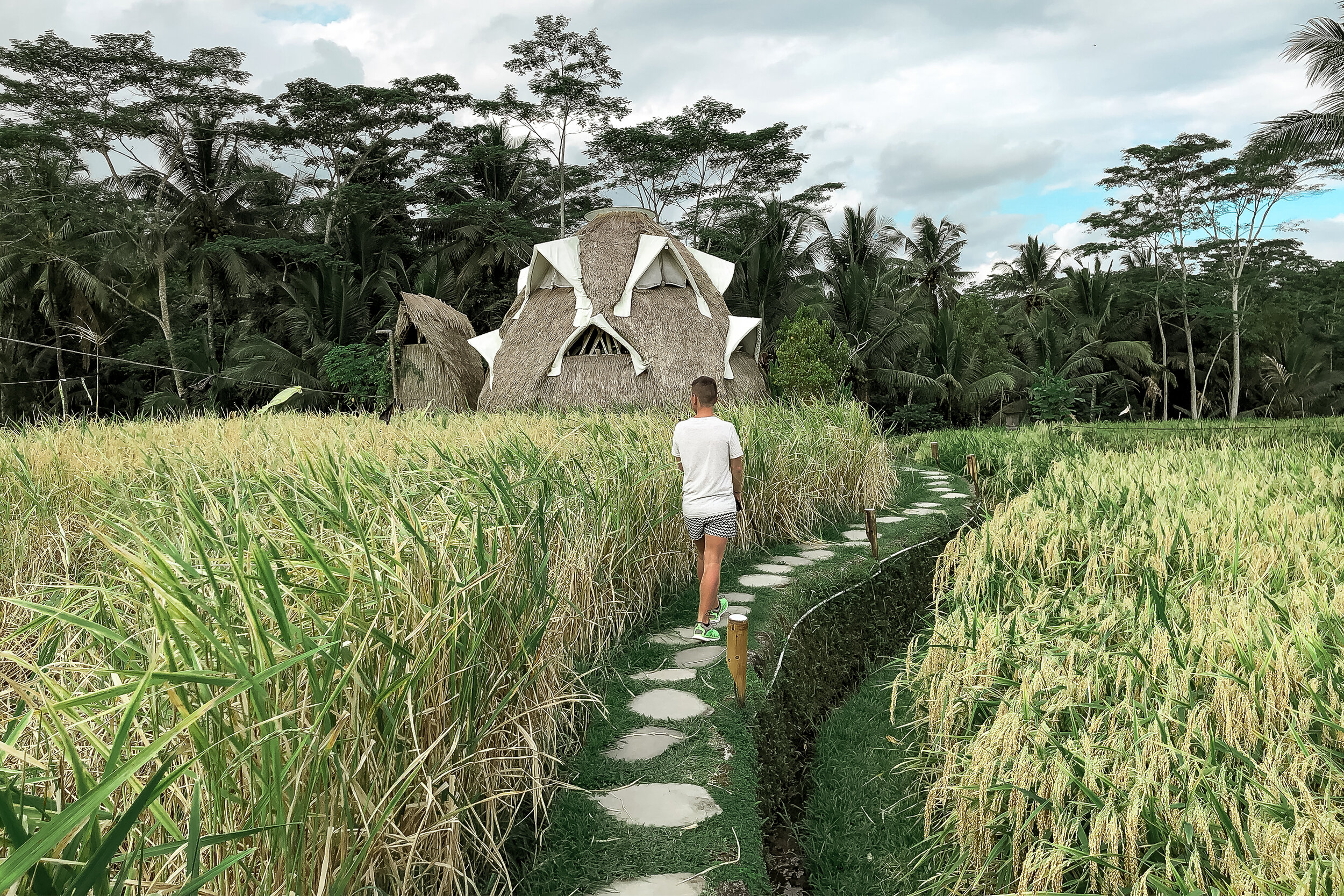
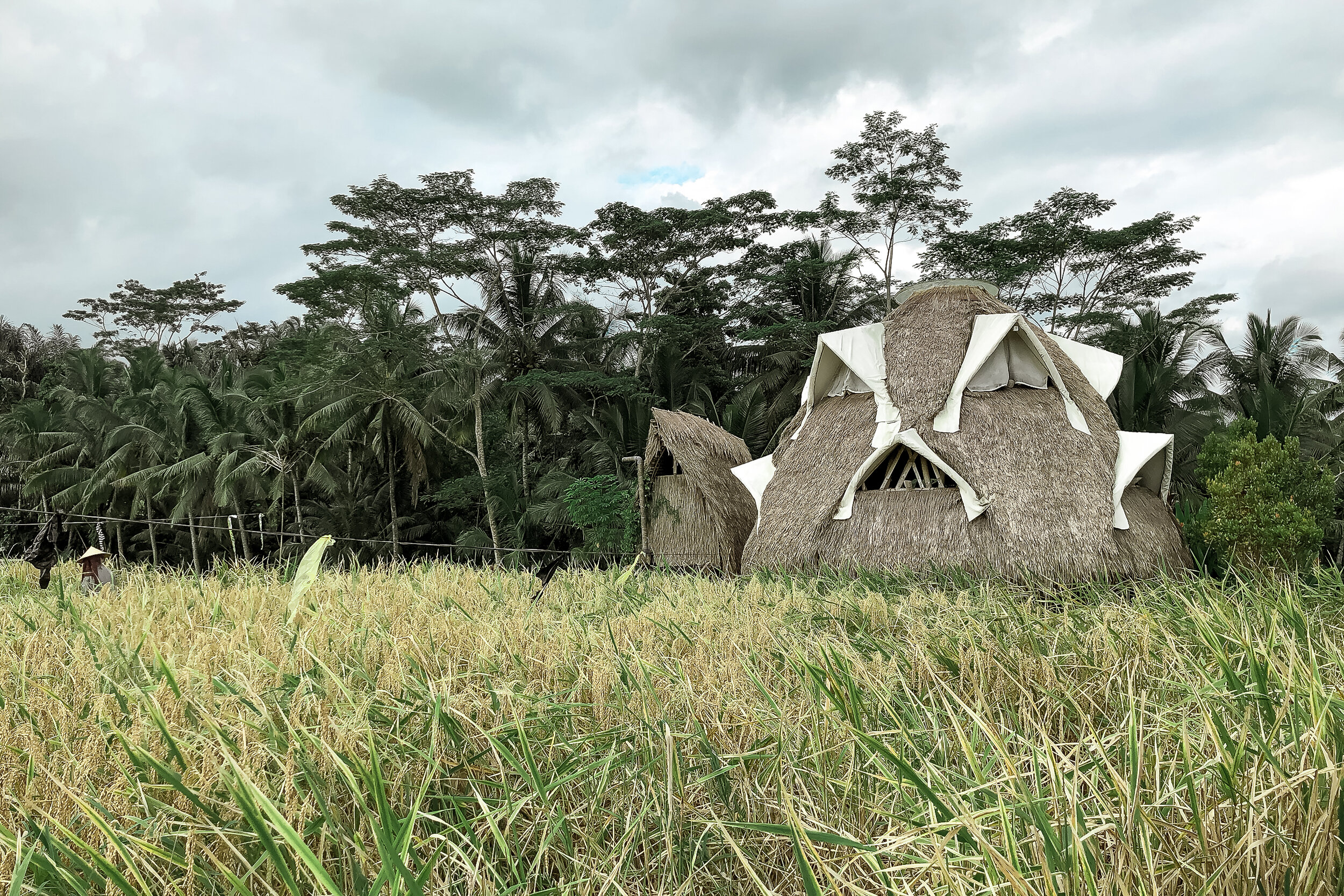
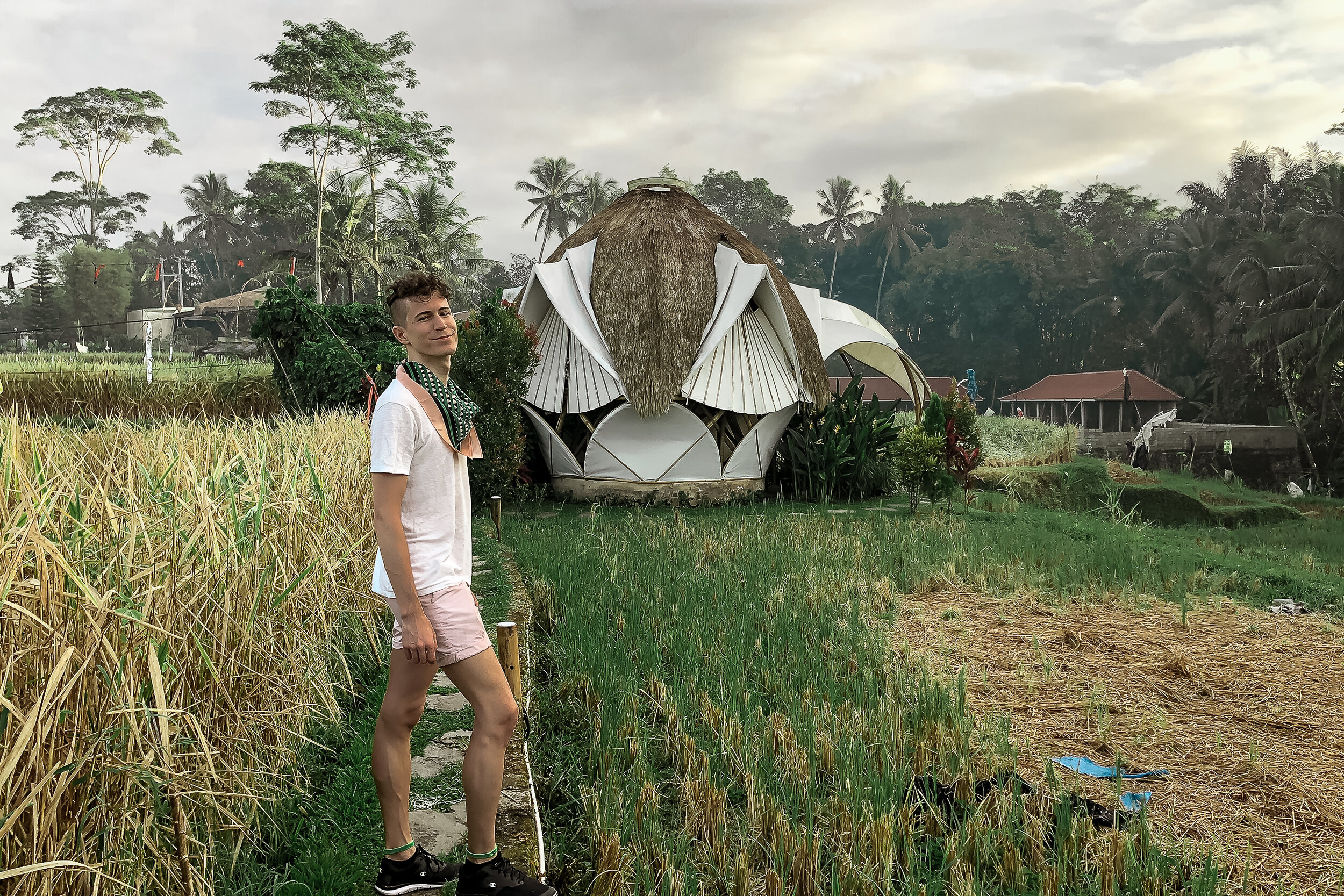
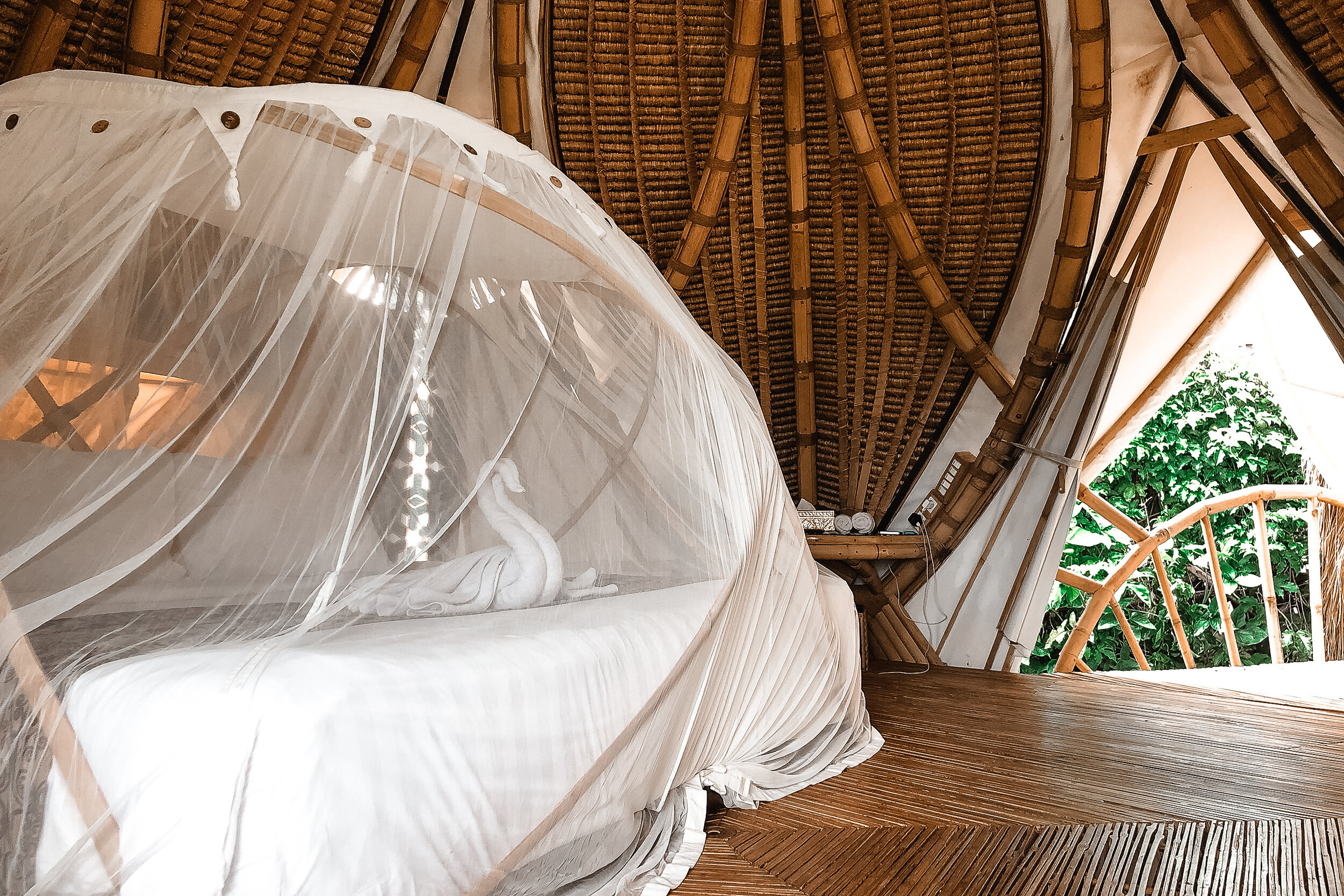
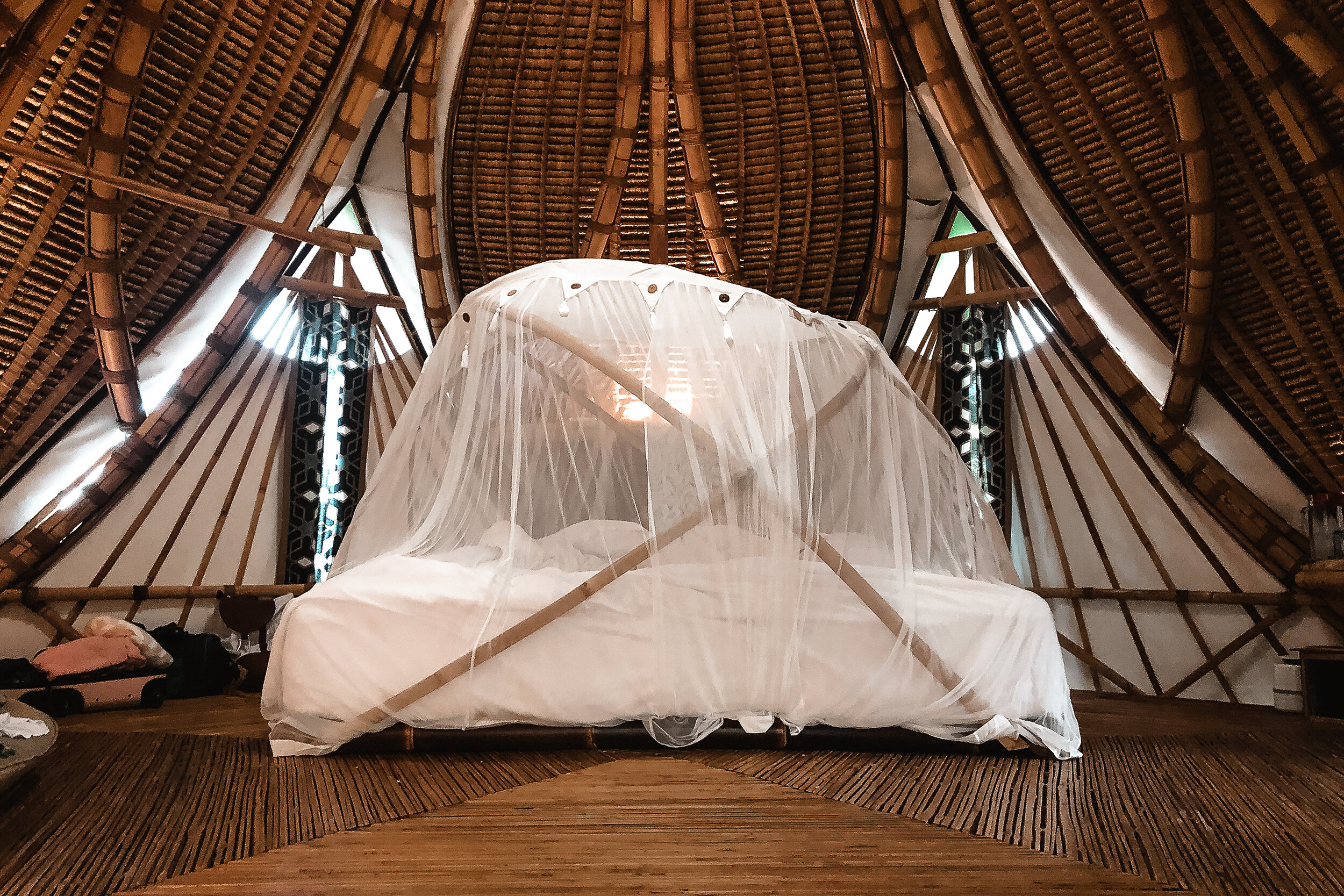
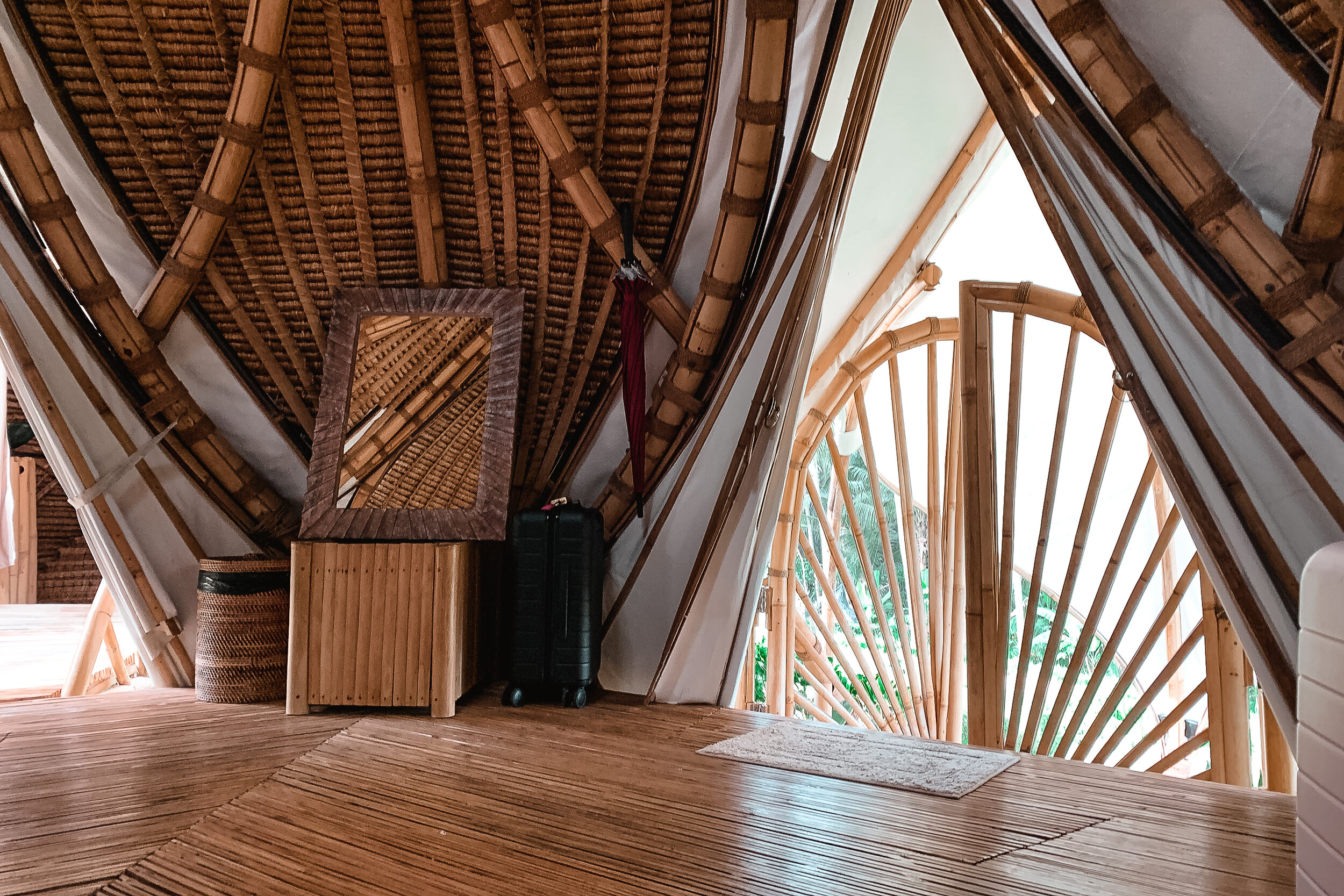
During our stay, we would often wake up to the farmers harvesting rice and herding baby ducks through the harvested plots resulting in natural fertilization. Across the rice fields was Akasha Restaurant. A larger open air bamboo framed restaurant focused on sustainability, vegan cuisine and hosting nightly events and festivals. We enjoyed most of our early morning and late night meals here.
From eco-domes to tree houses or hostels and villas in the rice patties, there are plenty of unique and sustainable places to stay in Ubud.
Getting Around:
Many accommodations in Ubud will help arrange transportation for you, especially to and from other areas of the island. Ubud and the surrounding area is vast and hilly making scooters and taxis the easiest way to get around. We often took Bluebird Taxi, known for its metered service, flat fees and street-side taxi stands.
Things to Do:
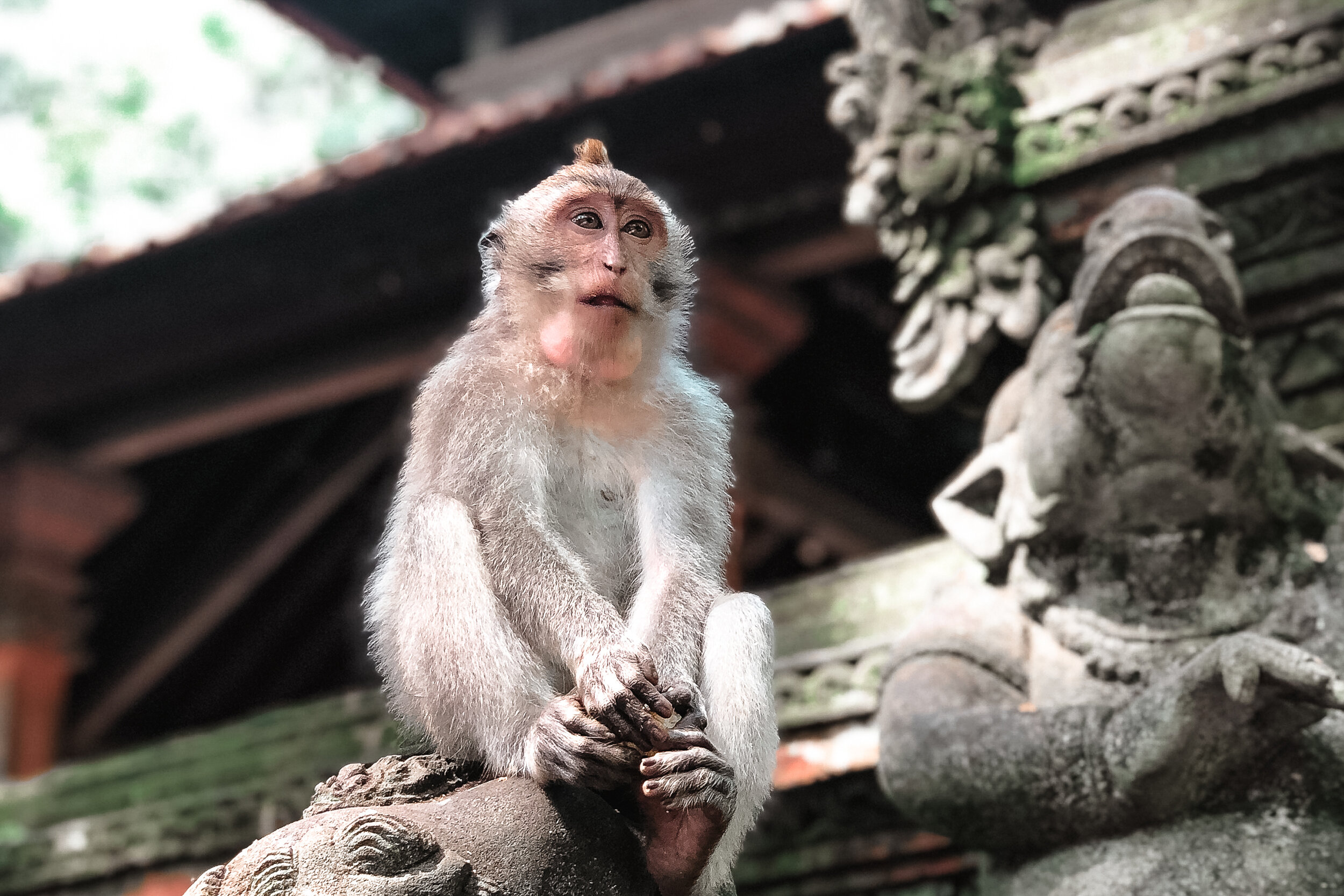
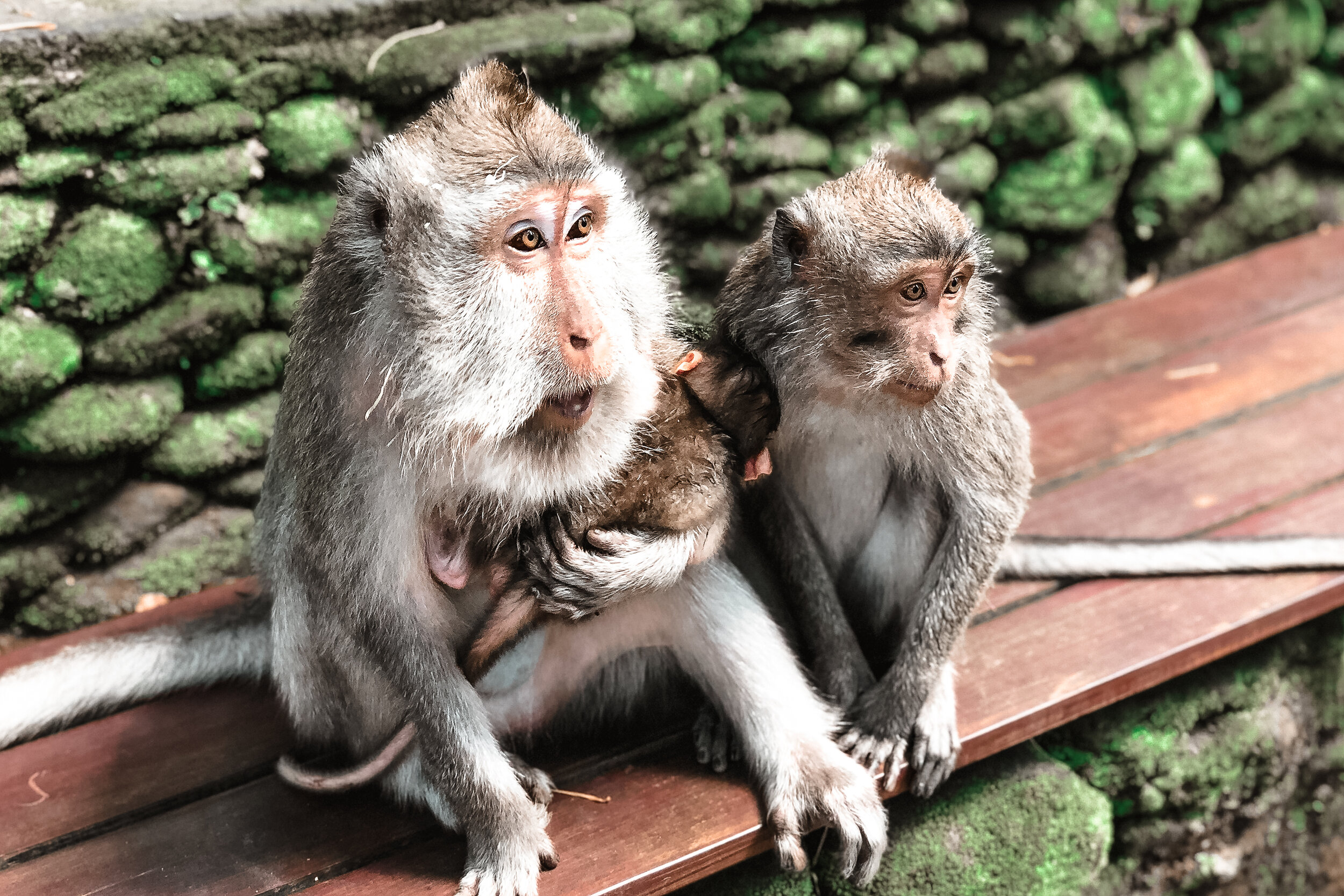
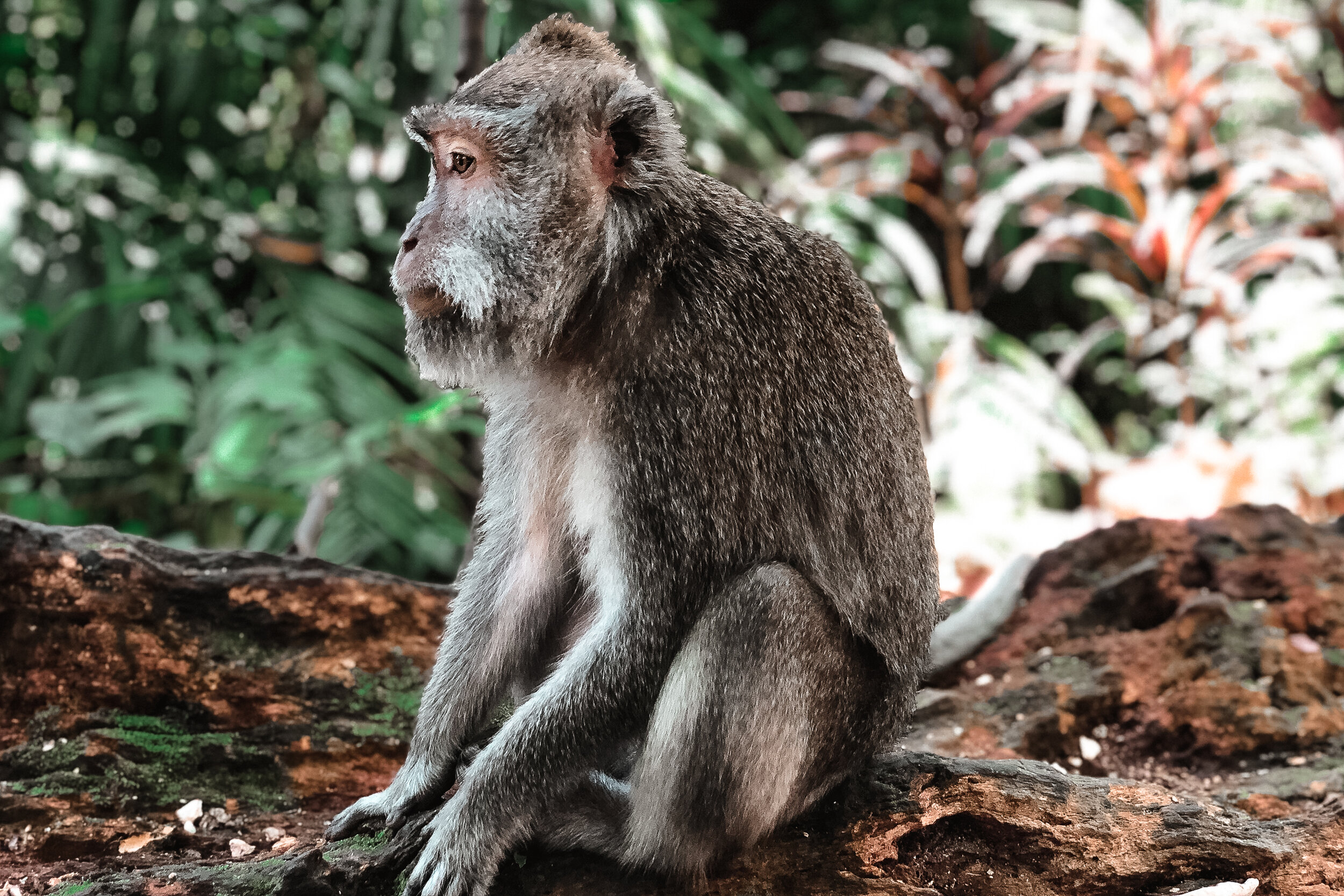
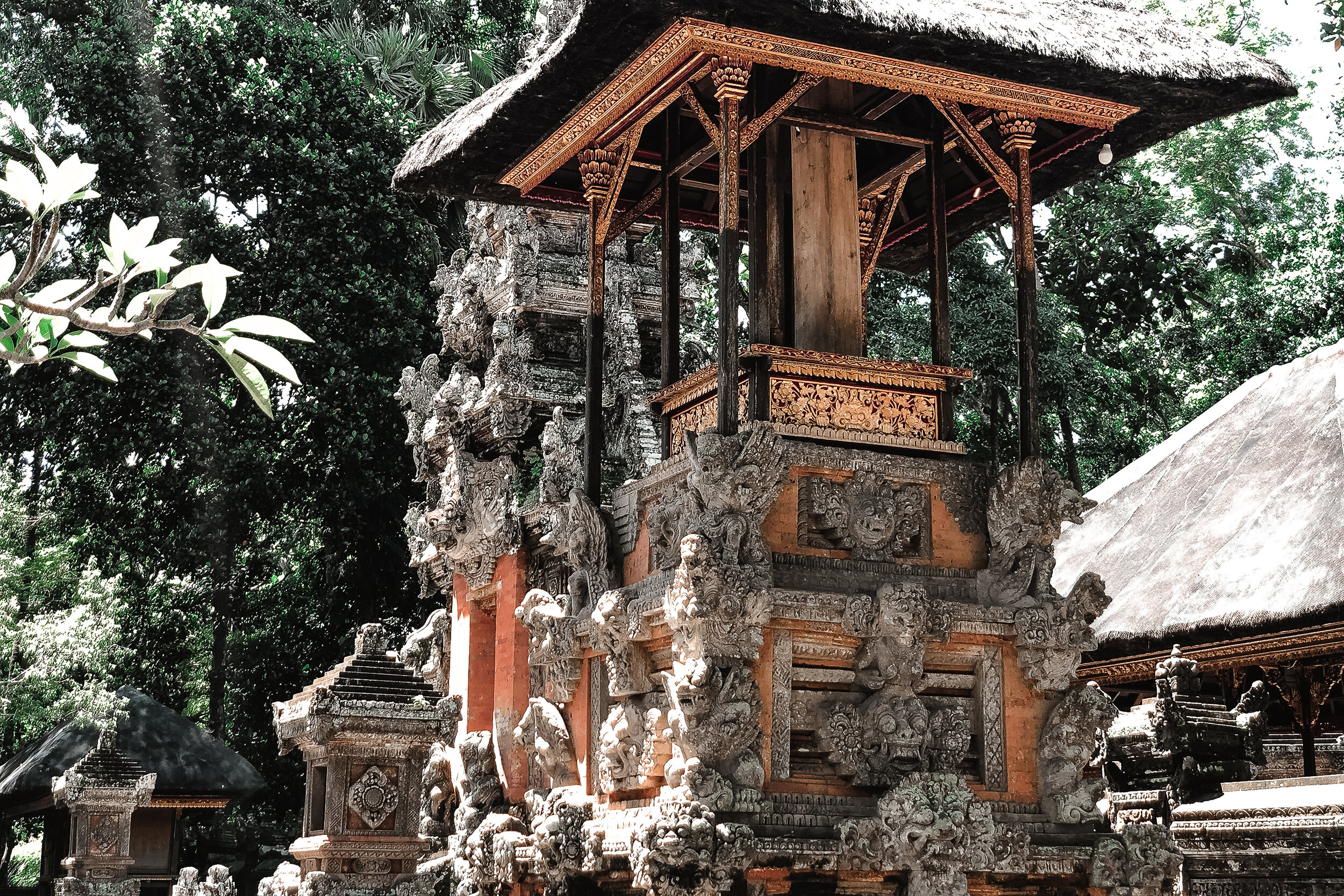
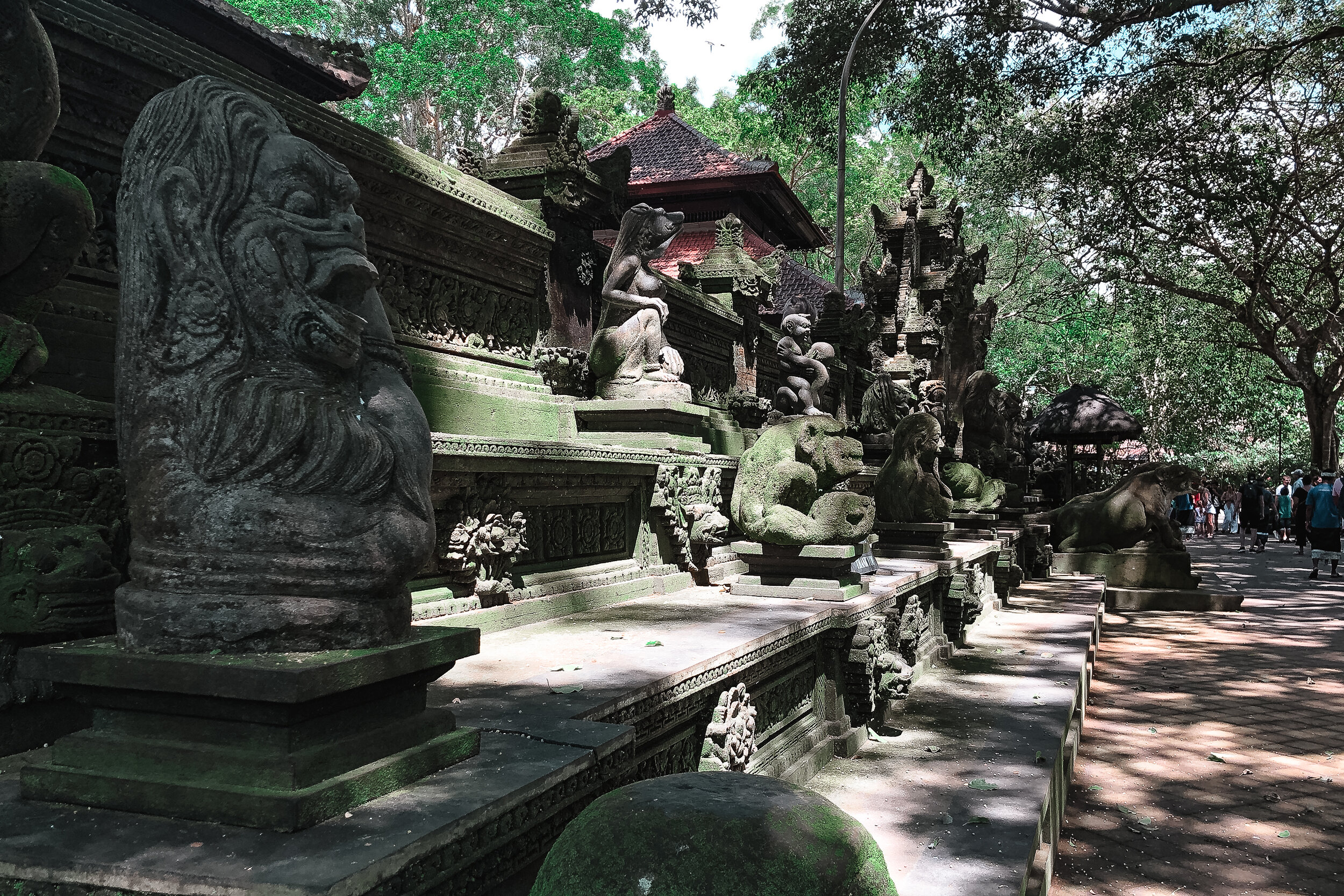
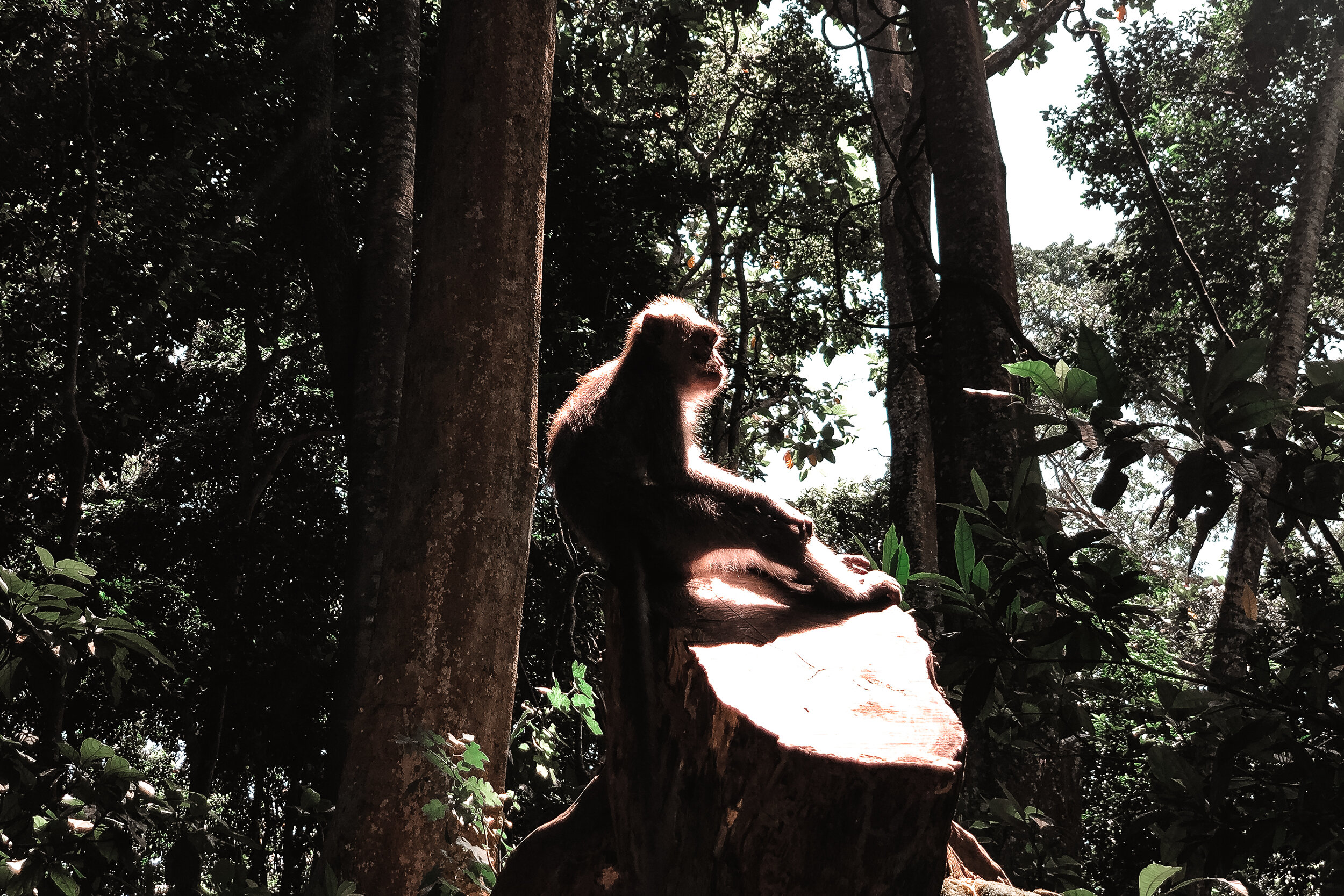
Sacred Monkey Forest:
The forest is covered in massive trees with dangling aerial roots, multiple ancient temples and acts as a sanctuary for hundreds of monkeys. The monkeys are everywhere, climbing in the trees, running across pathways, sitting on benches and making the temples their home. They are playful, mischievous and protective. If you’re not paying attention, one may try and take your phone, bag or hat. We saw this happen! You can truly get an up-close experience with them.
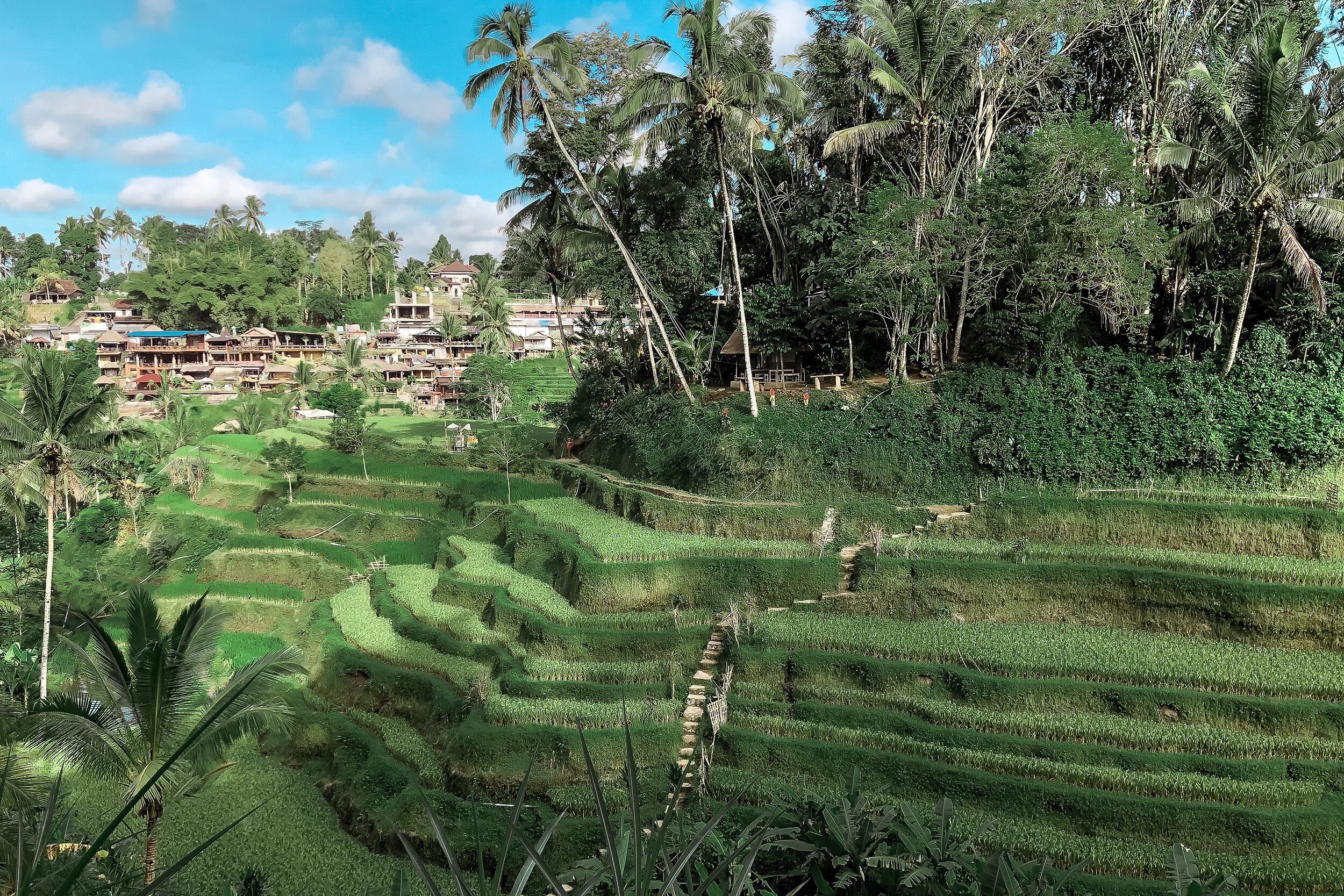
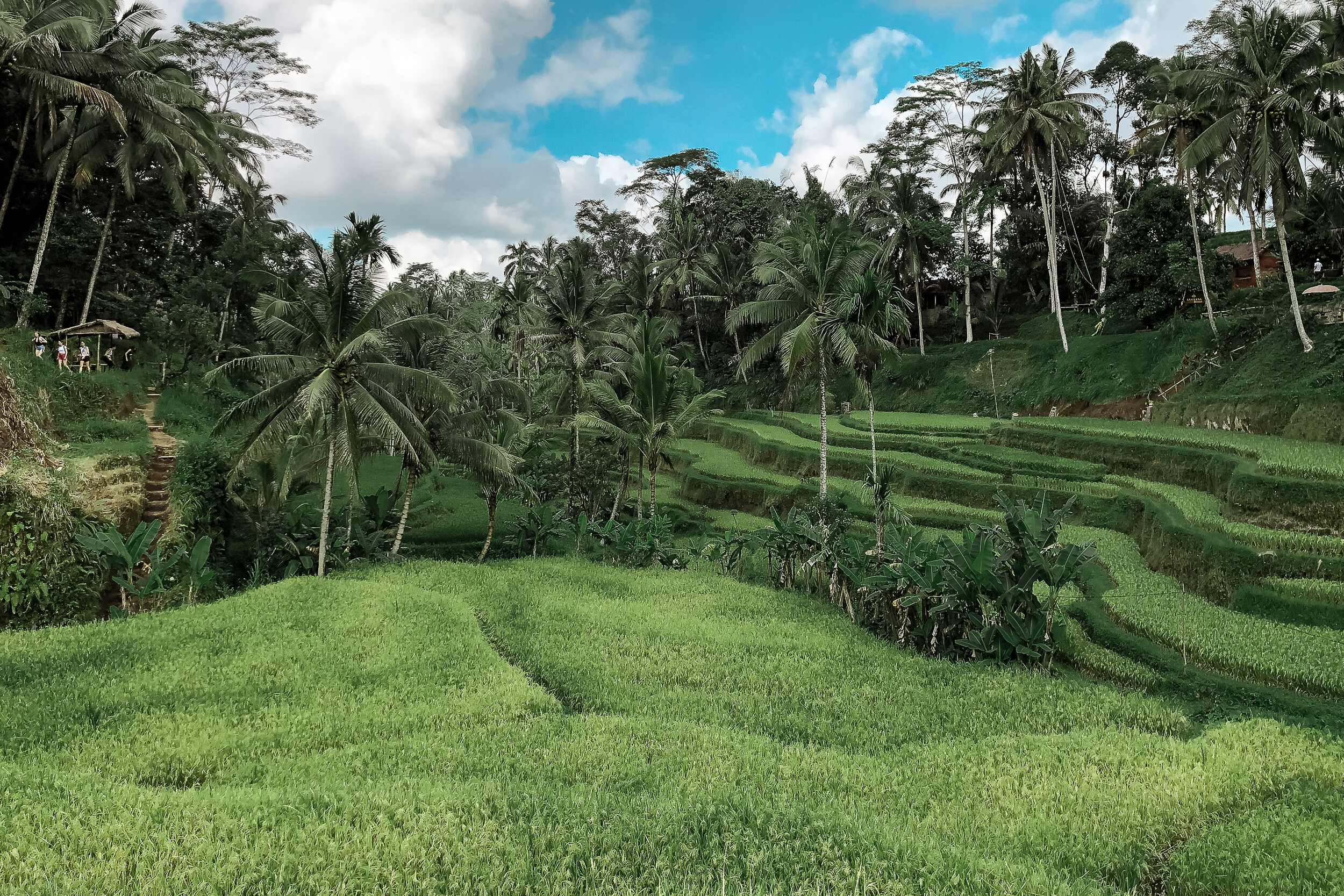
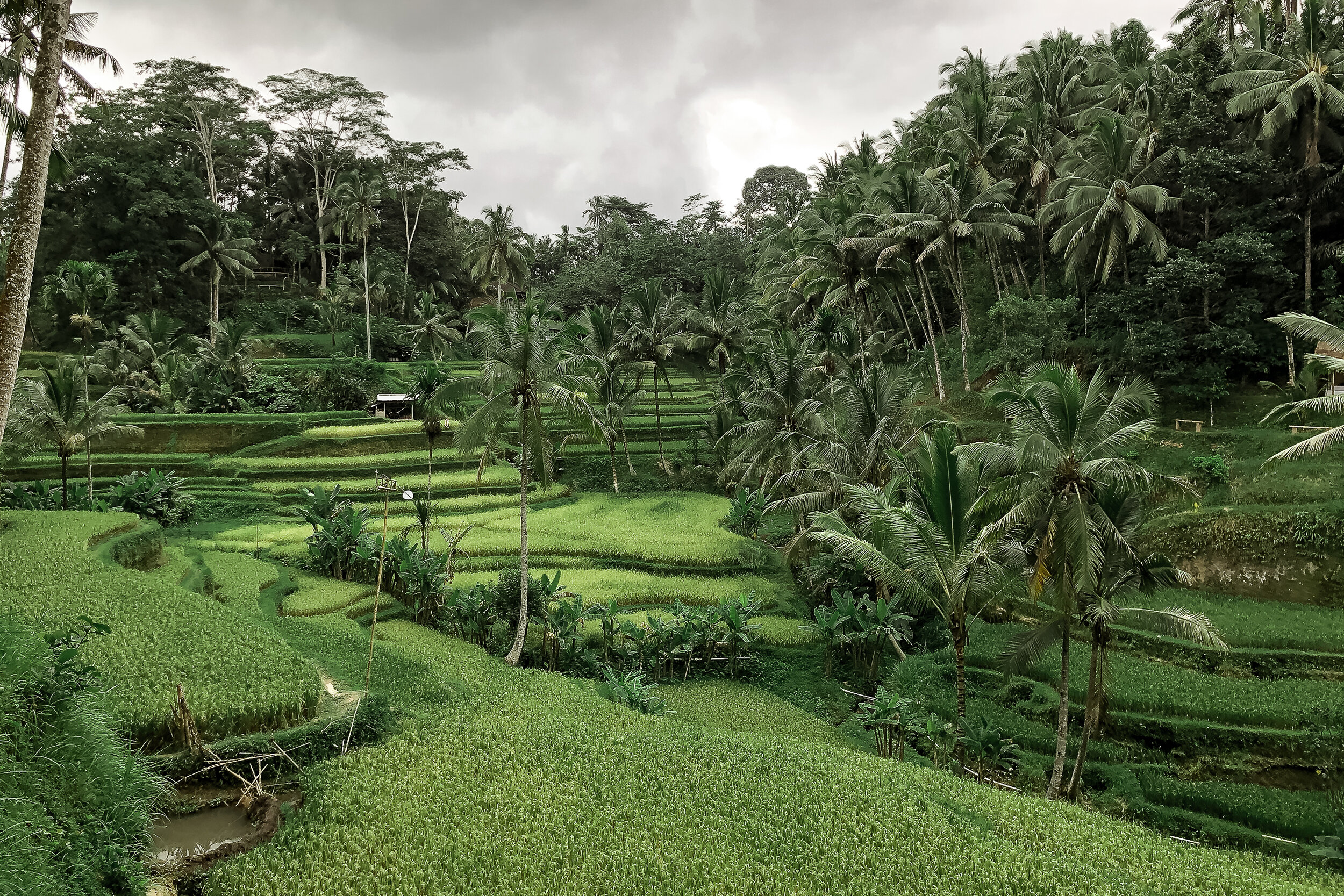
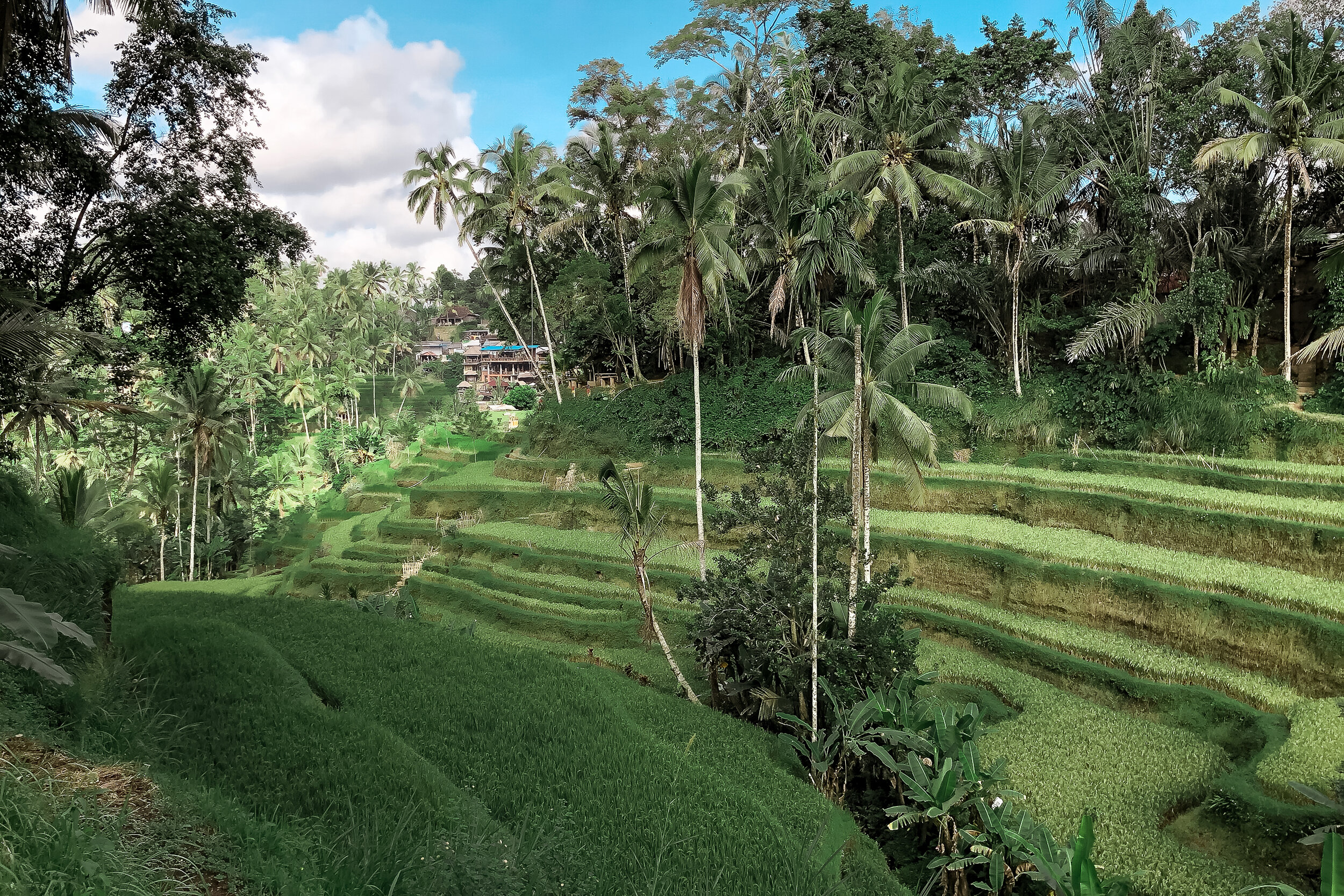
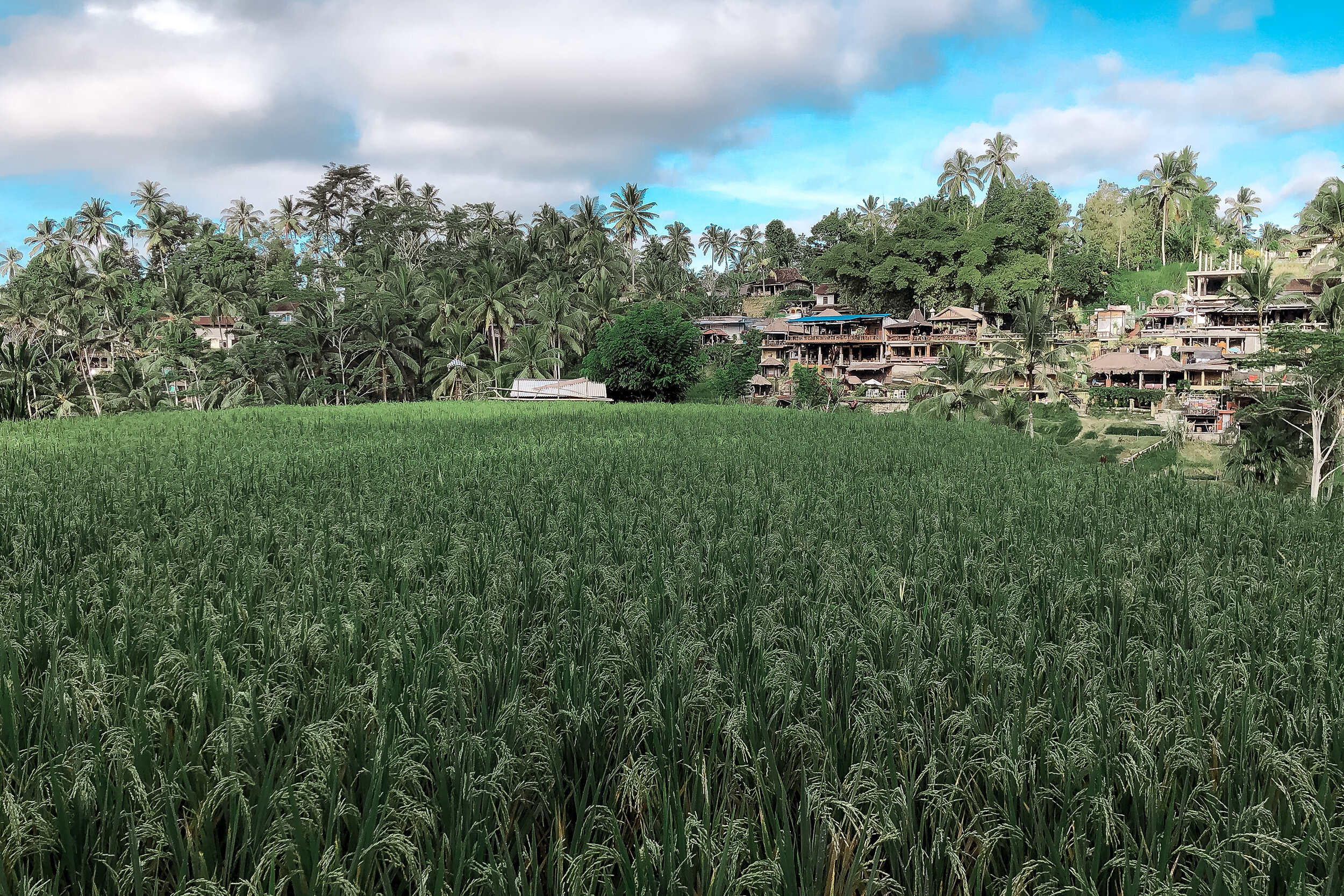
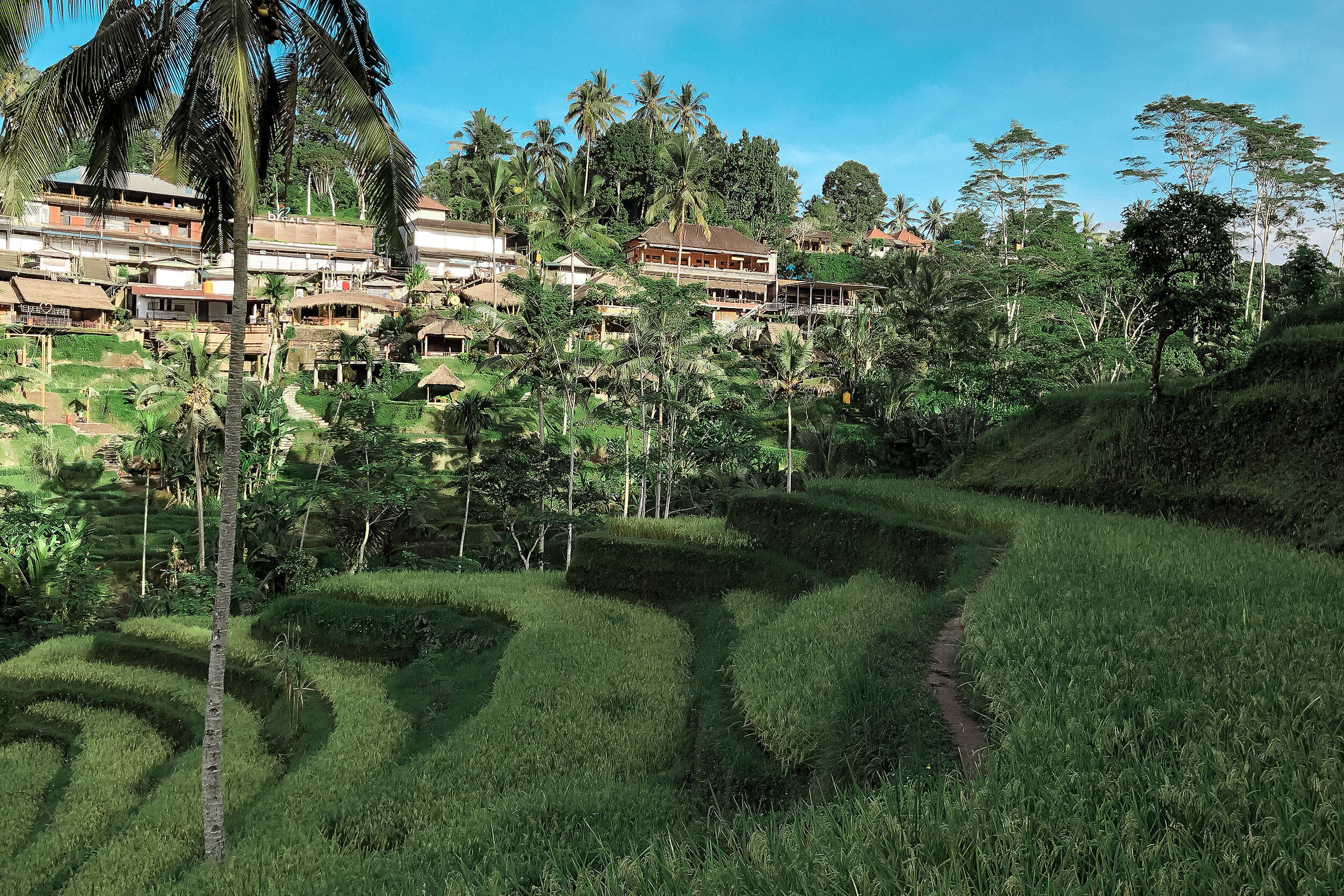
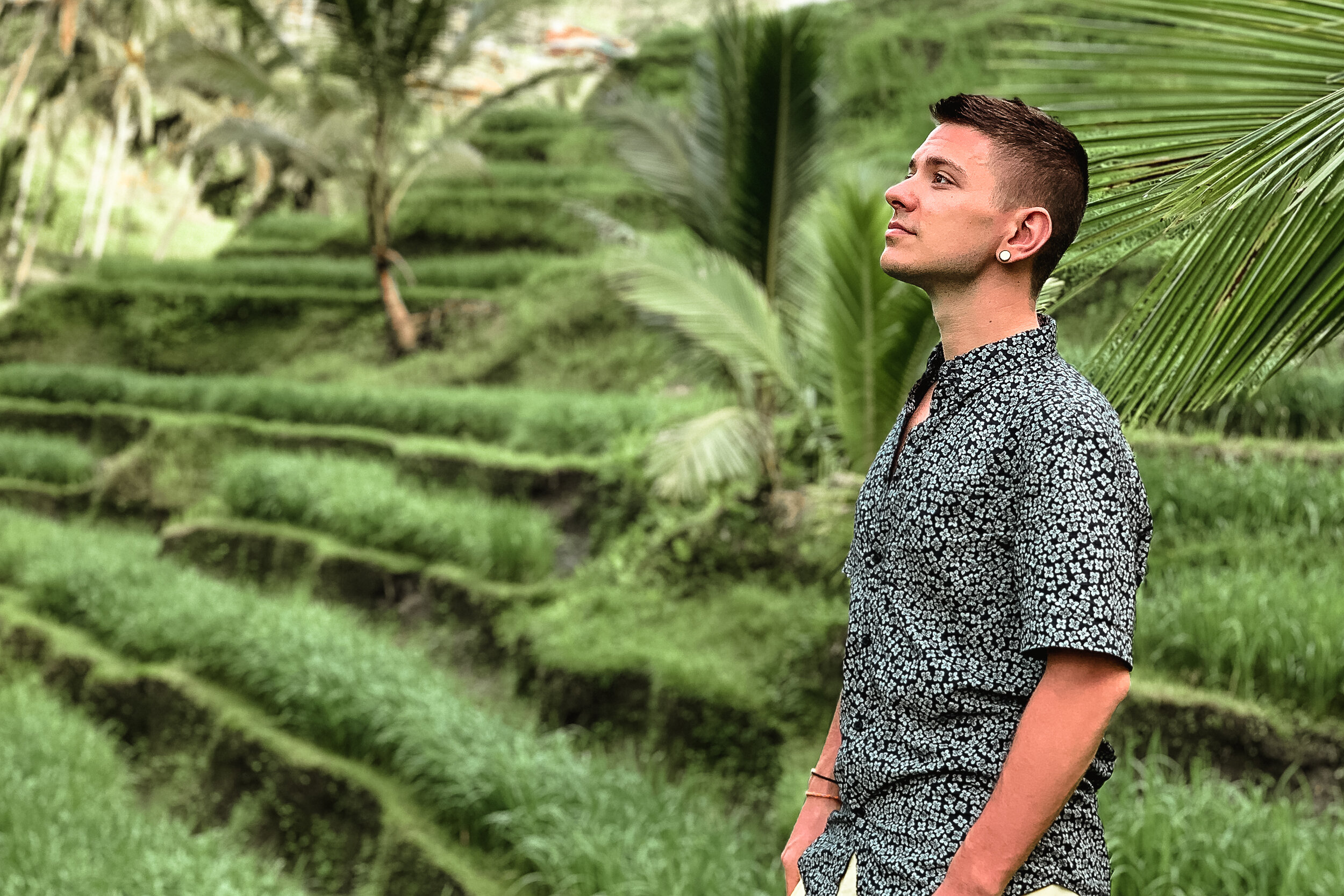
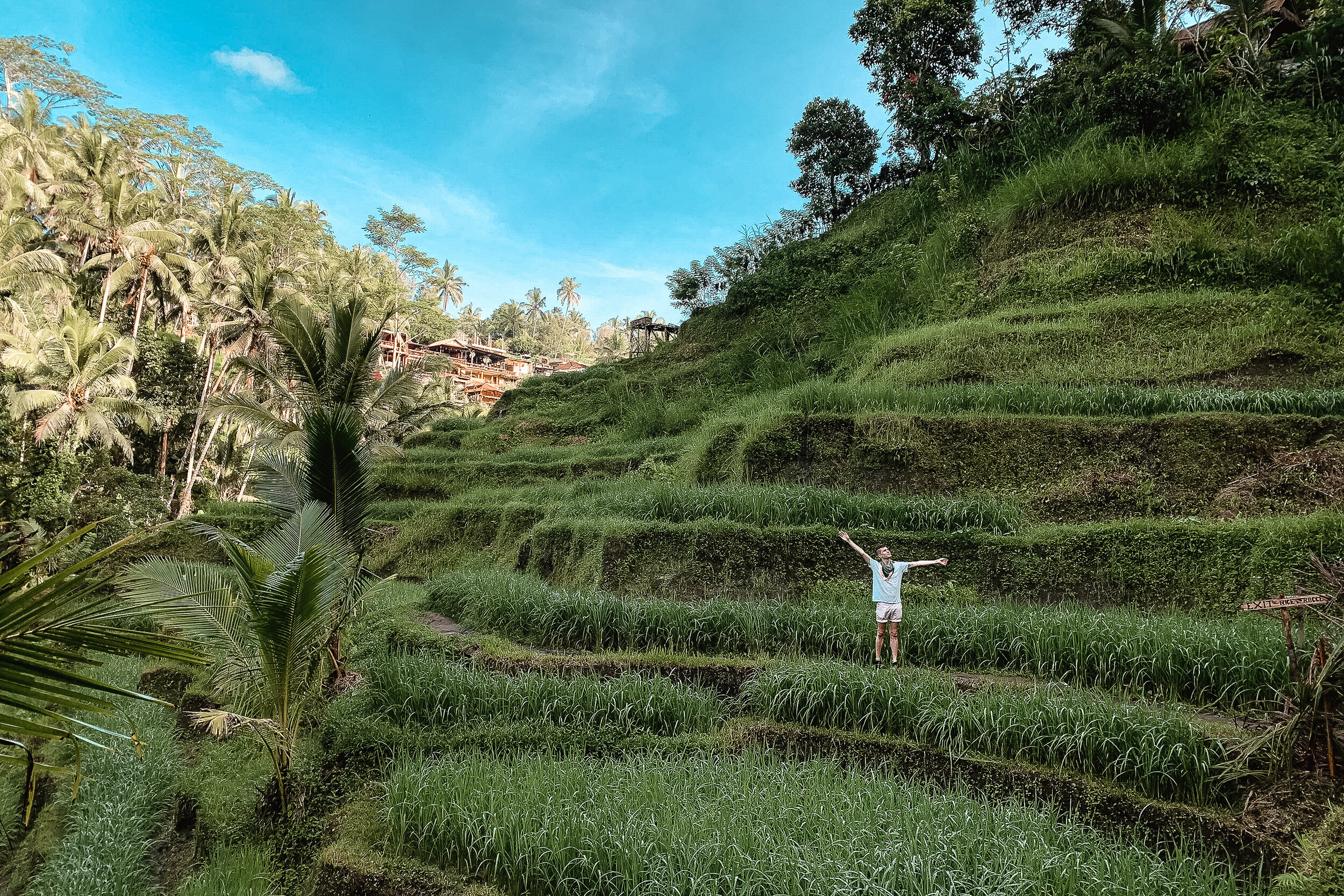
Tegalalang Rice Terraces
The lush, expansive hillside rice terraces were one of our favorite sights to explore in Ubud. We got here at 7am, hours before they filled up with larger numbers of tourists. We stayed until the early afternoon weaving through the vertical expanses and hiking to the furthest corners. At the entrance, there is a hillside village with restaurants, warungs, cafes and hostels overlooking the terraces. Throughout them are zip-lines, jungle swings and farmers stationed at various points who will ask for a small donation to help support their livelihood and maintain the walkways. Its best to donate 5K Rp each time (less than 50 cents).
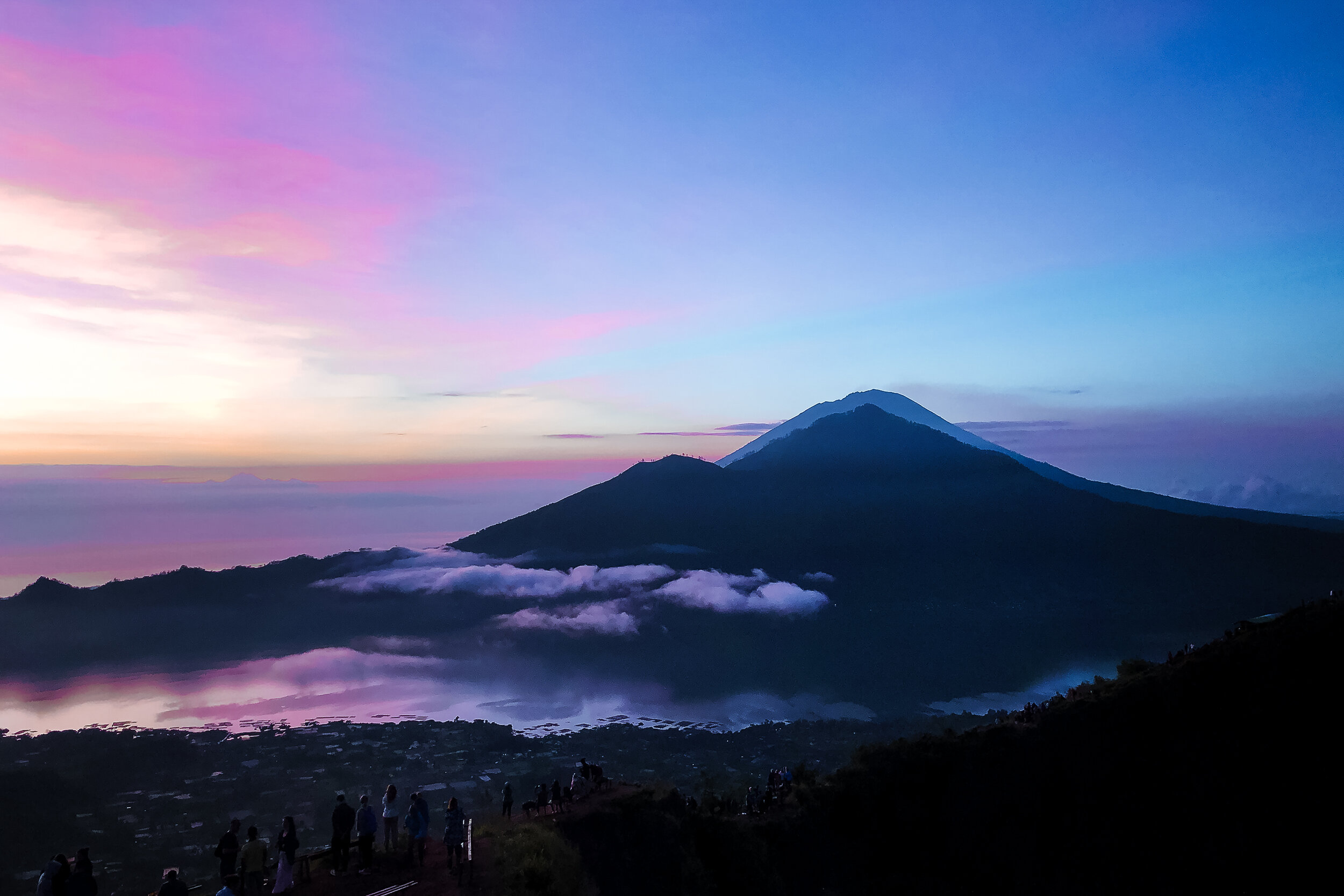
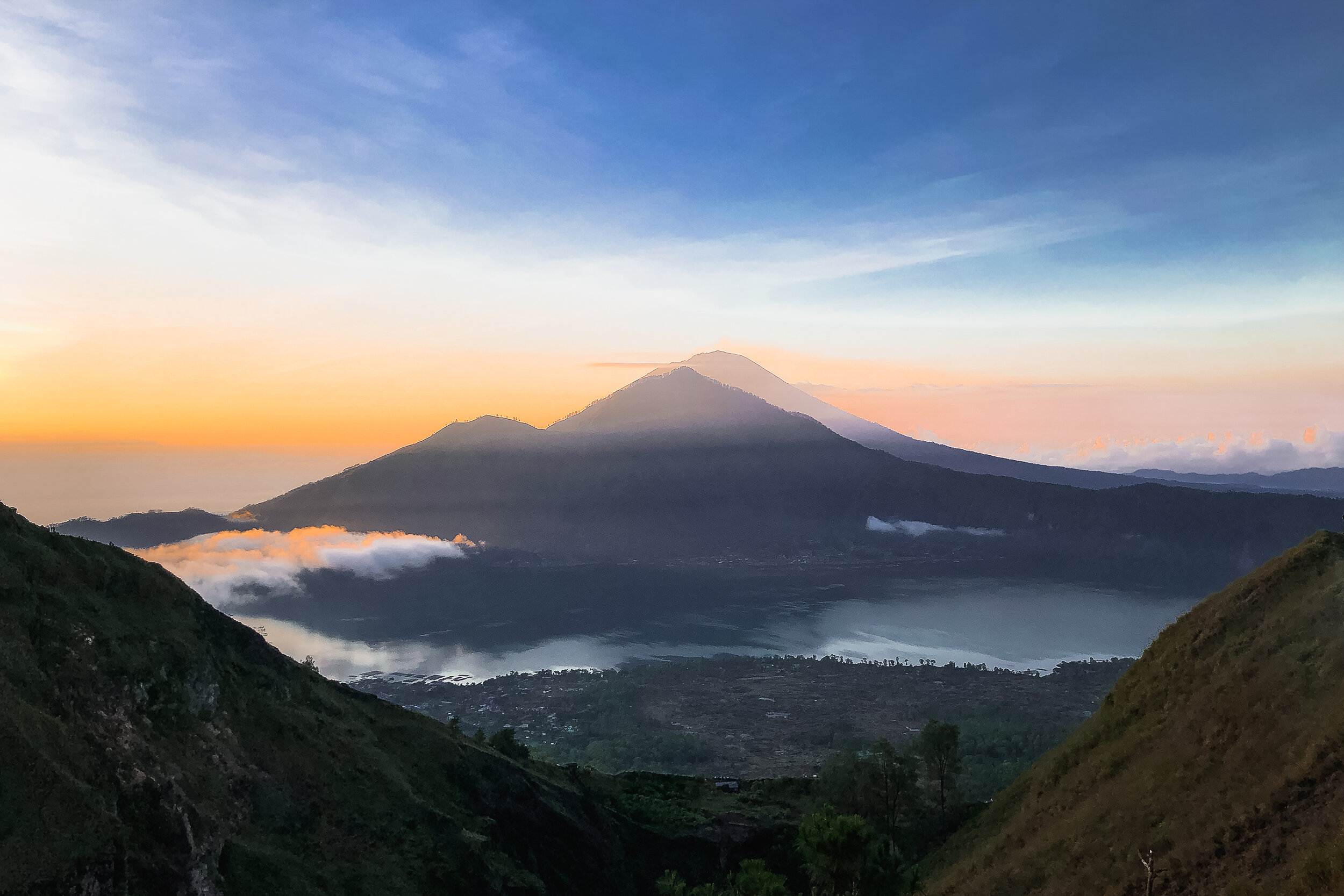

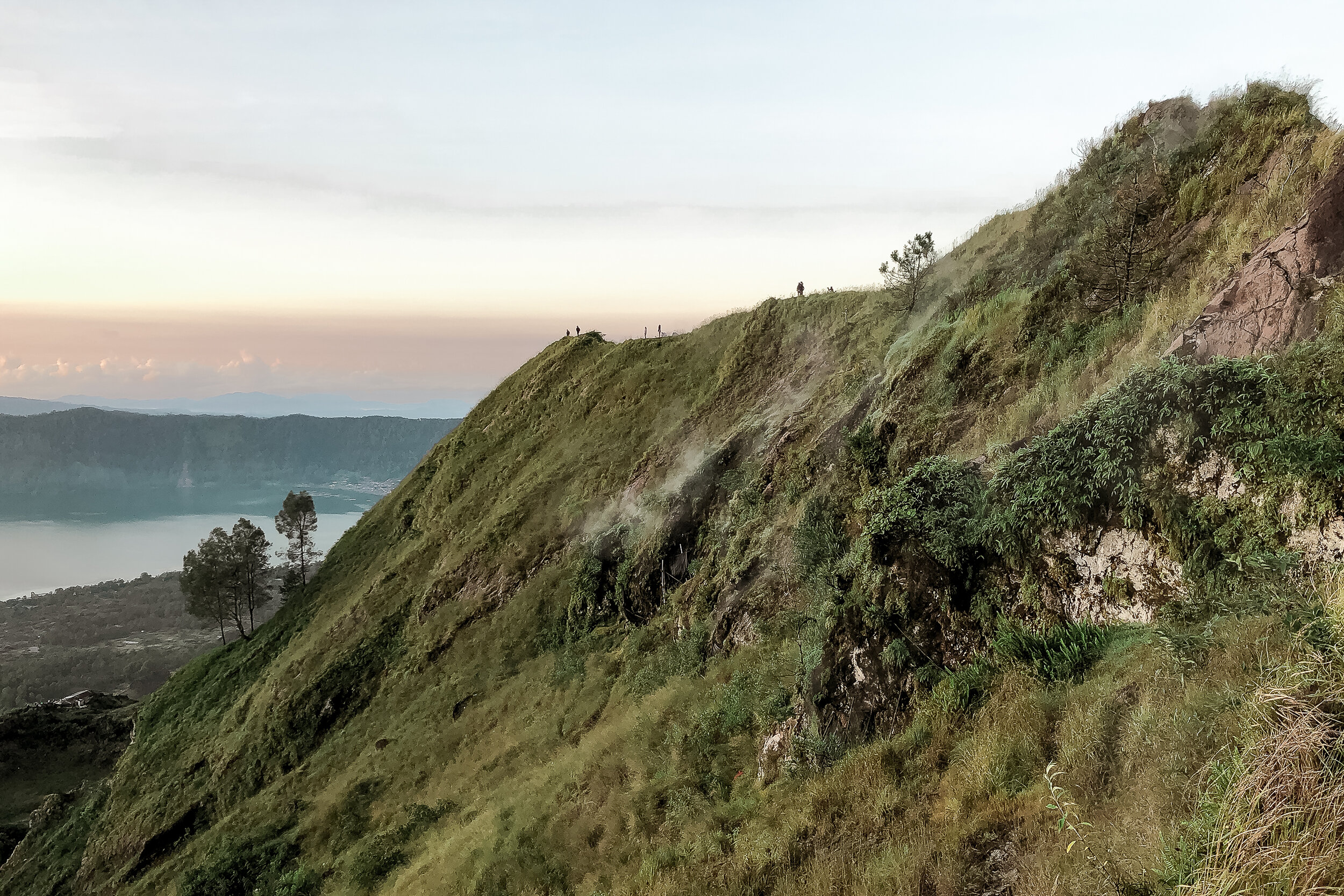
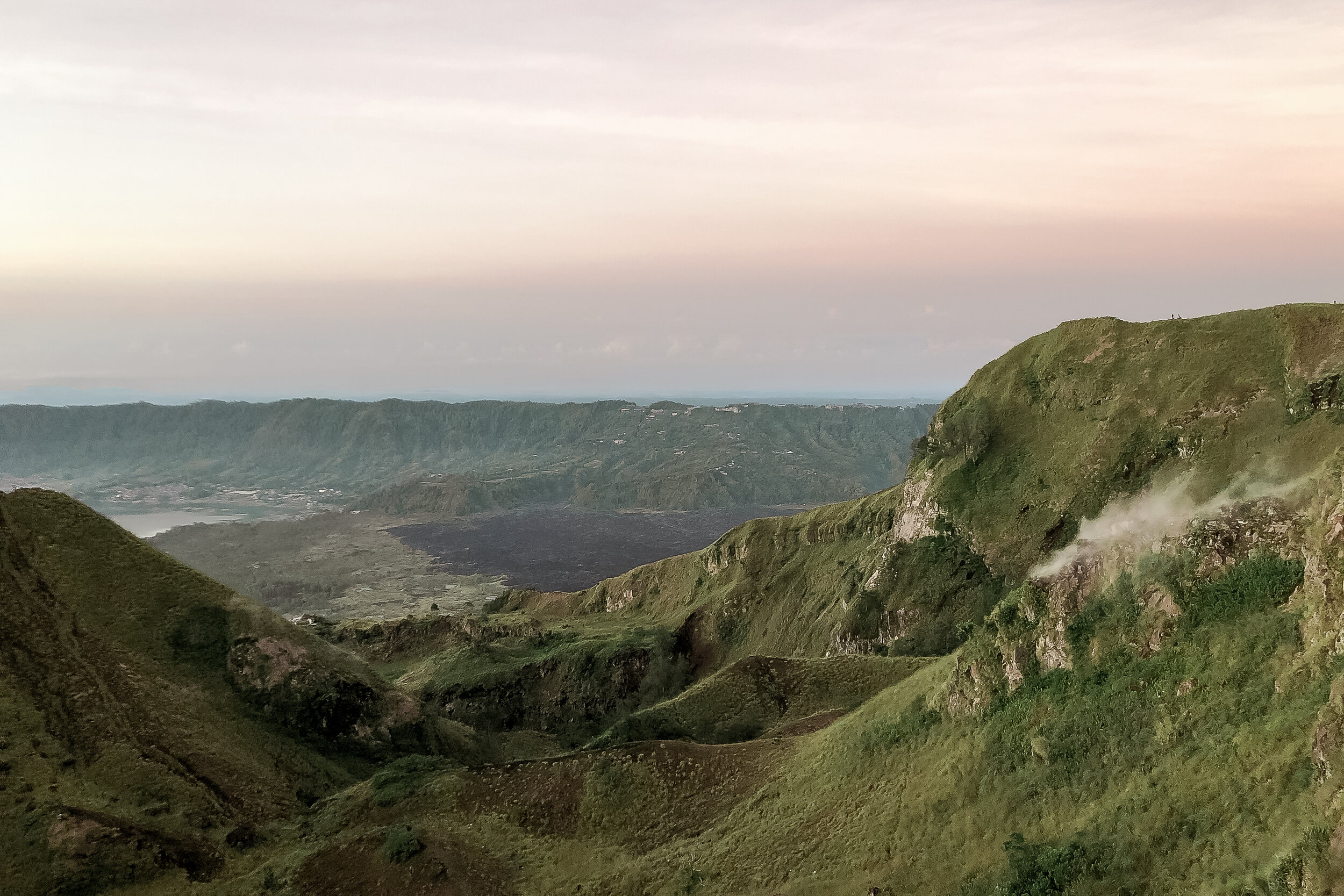
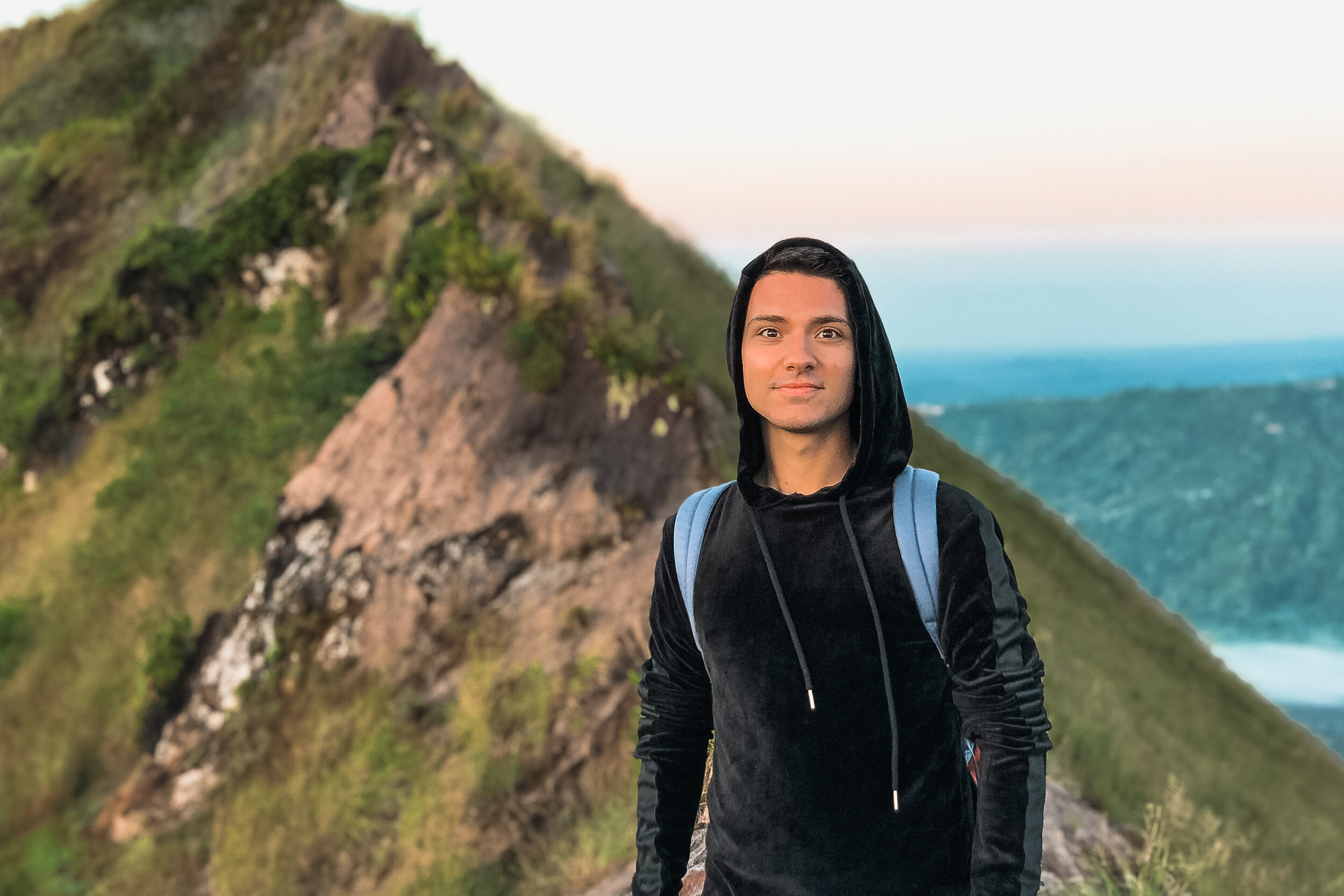
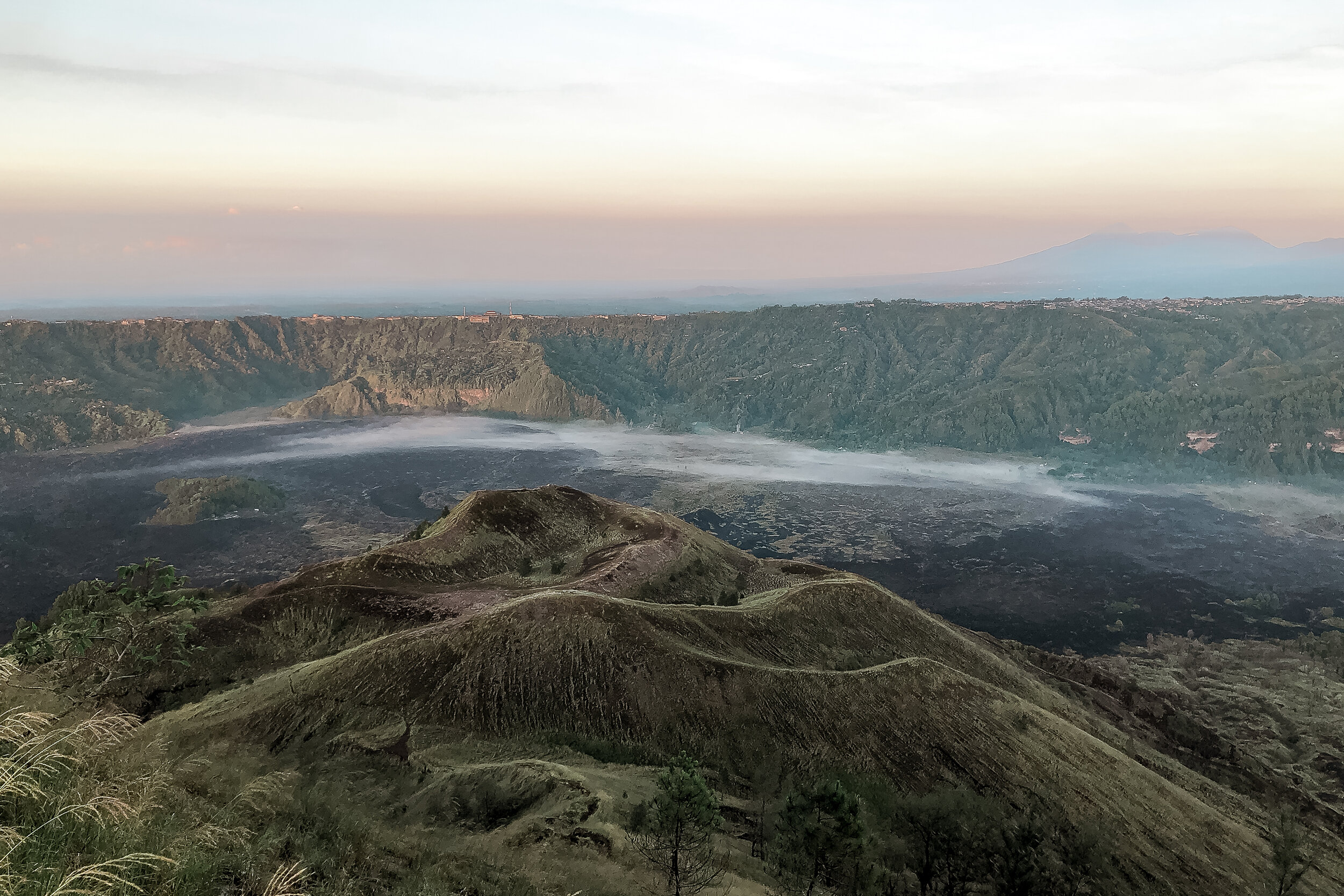
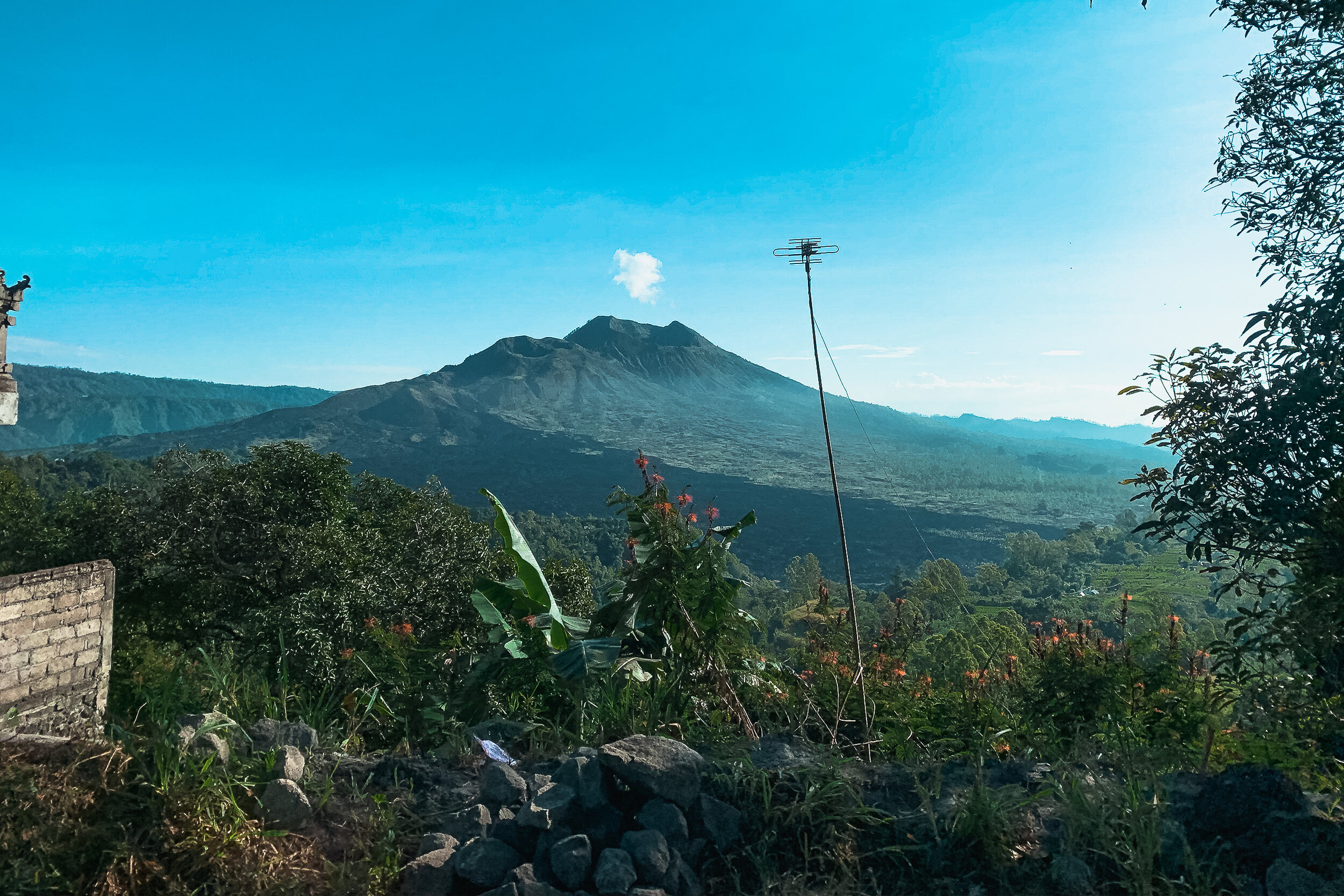
Sunrise Hike to Mt. Batur
Mt. Batur is Bali’s second highest peak and still an active volcano. One of the most adventurous things you can do on the island is hike to its summit and watch the sunrise. Wake up just after midnight and drive to the basecamp of Mt. Batur at Toya Bungkah. There will be hundreds of guides available for hire. Guides generally cost around 500K - 700K Rp for two people ($35-$50 USD)
From the summit, you can see the entire island of Bali and the nearby island of Lombok. There will also be vendors selling hot chocolate, coffee, water and various snacks. As Mt. Batur is still an active volcano, guides will often bring eggs to hard boil in the steam vents. Try one if you can, there’s something special about food cooked by a volcano!
What to Prepare:
Wear good shoes for traction. The pathways are covered in loose stones gravel.
Wear layers. It is colder the higher you hike in elevation but easy to overheat.
Bring a flashlight to see, though this isn’t always needed after your eyes adjust to the darkness (plus you can see the stars)
Bring water, you will get dehydrated as you climb.
Claiming some bragging rights, we were the first visitors to reach the volcano’s summit that morning. A first for our guide, Cynthia, even after years of near daily treks up Mt. Batur.
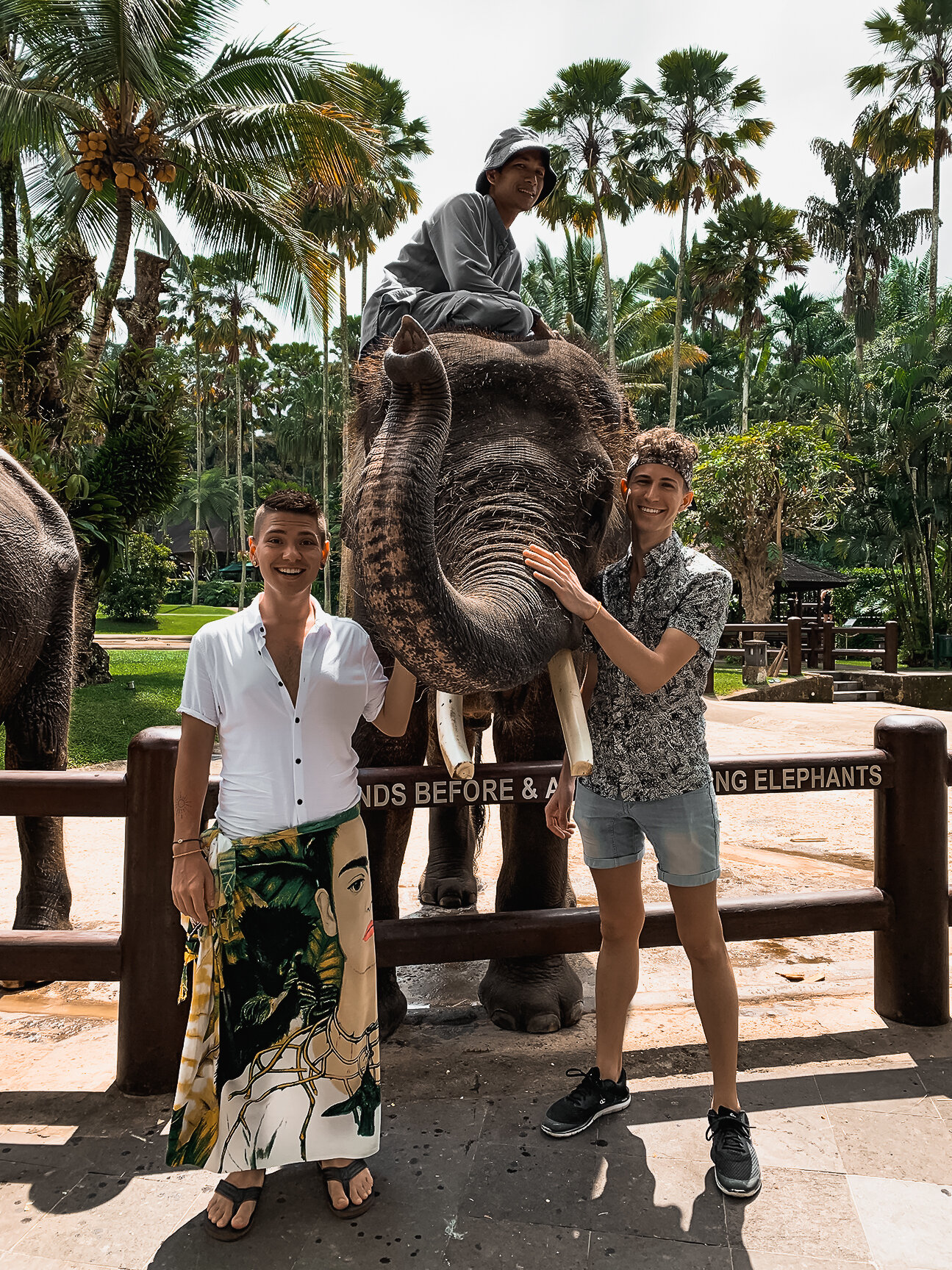
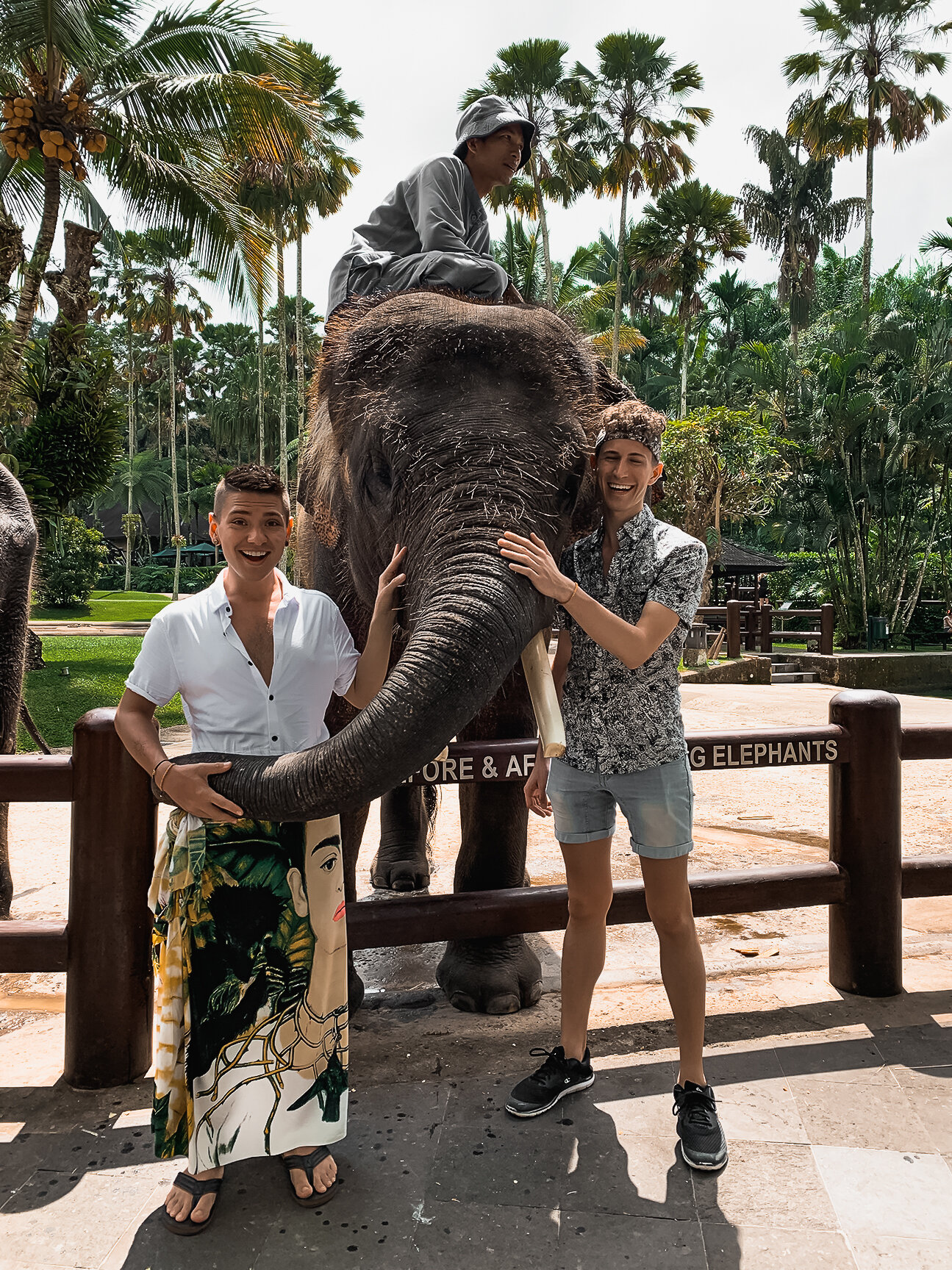
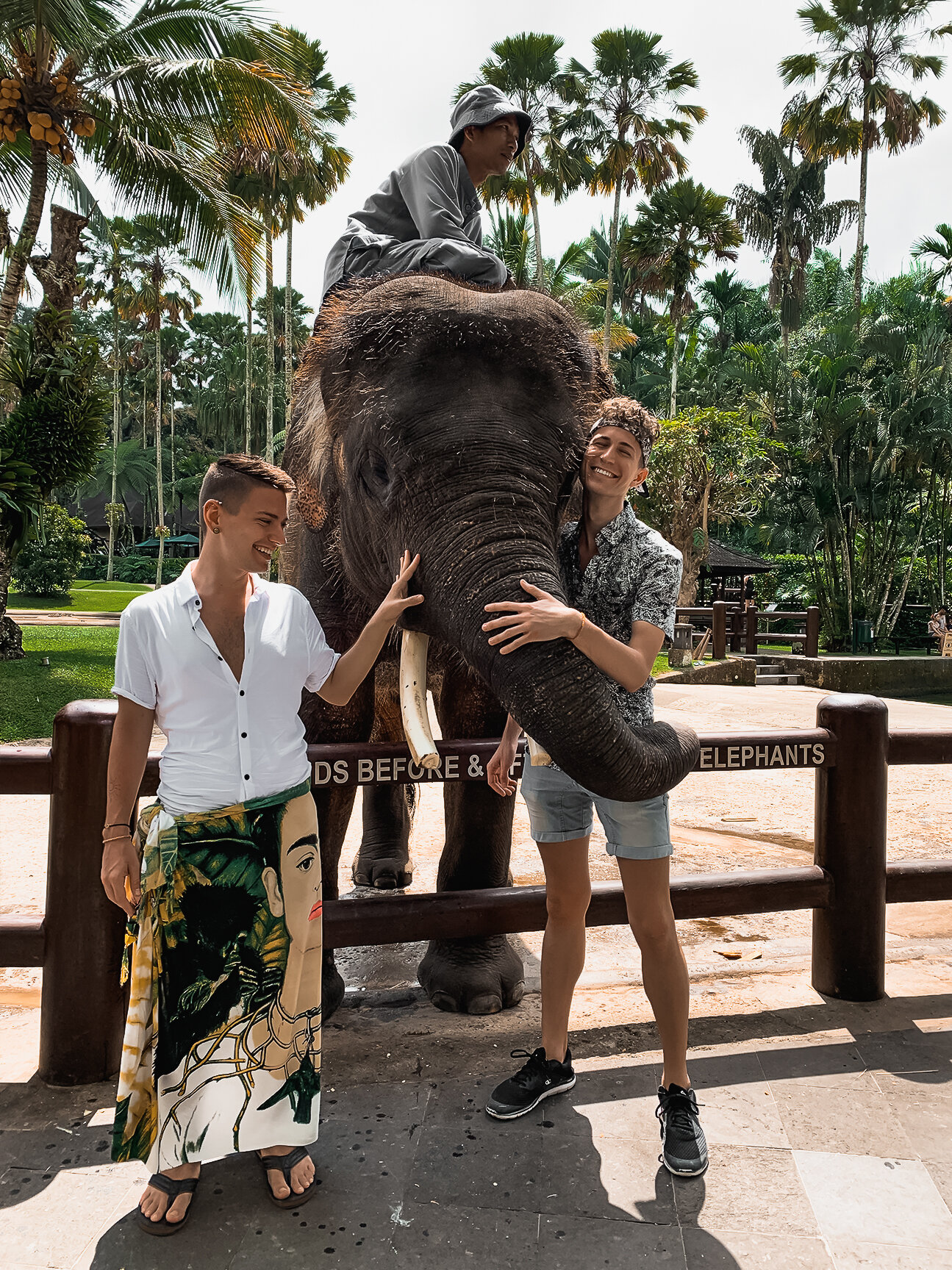
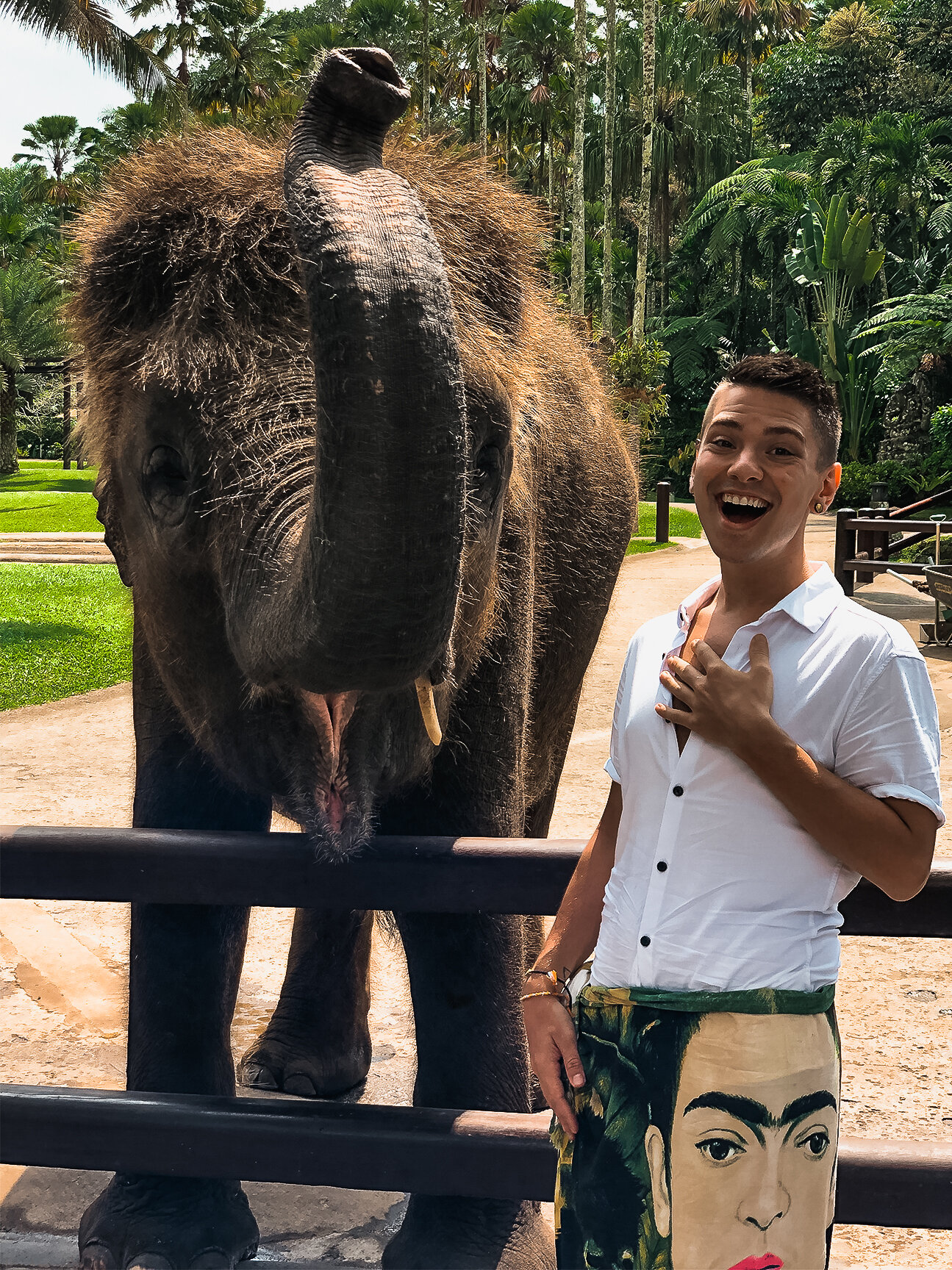
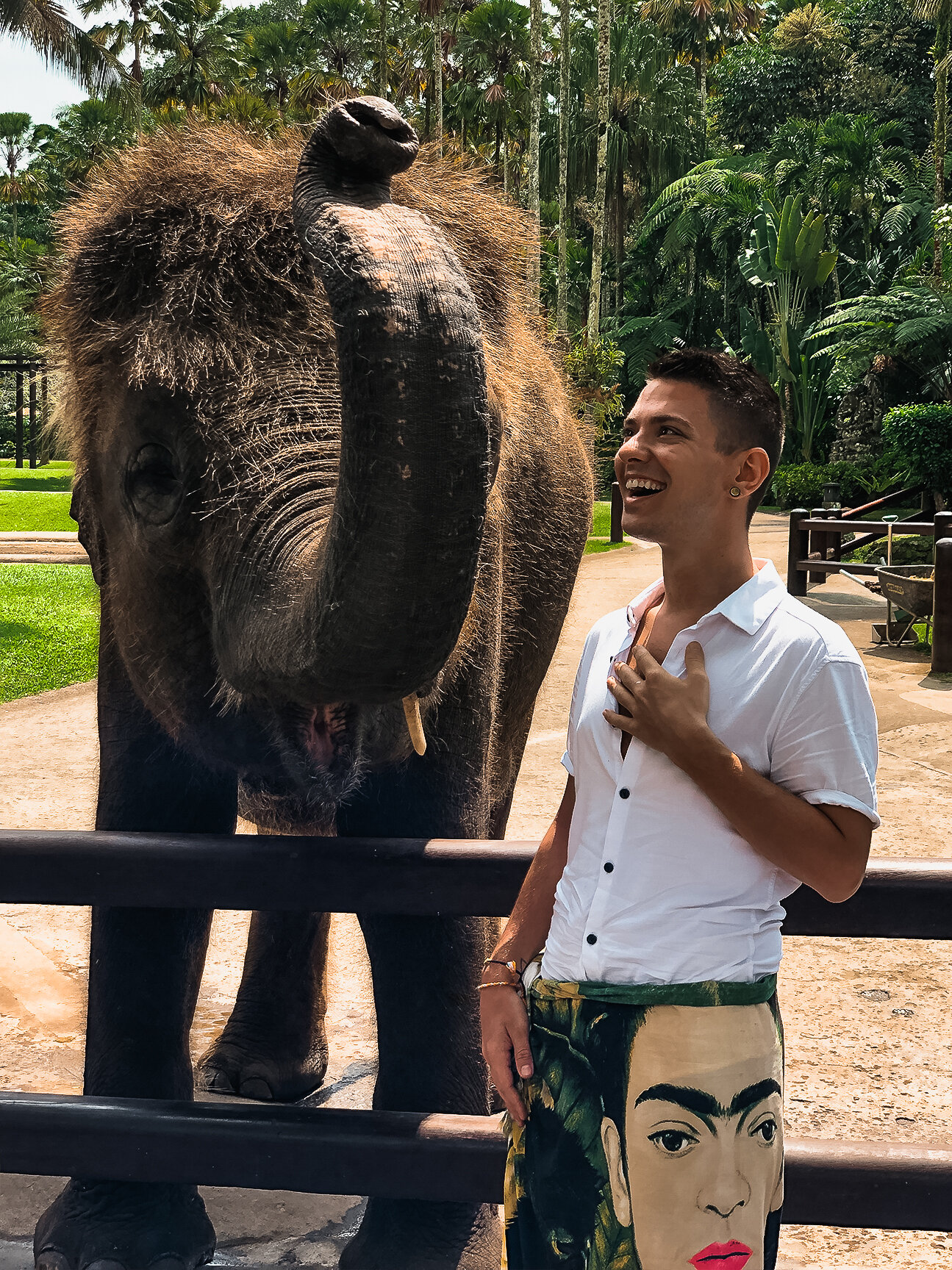
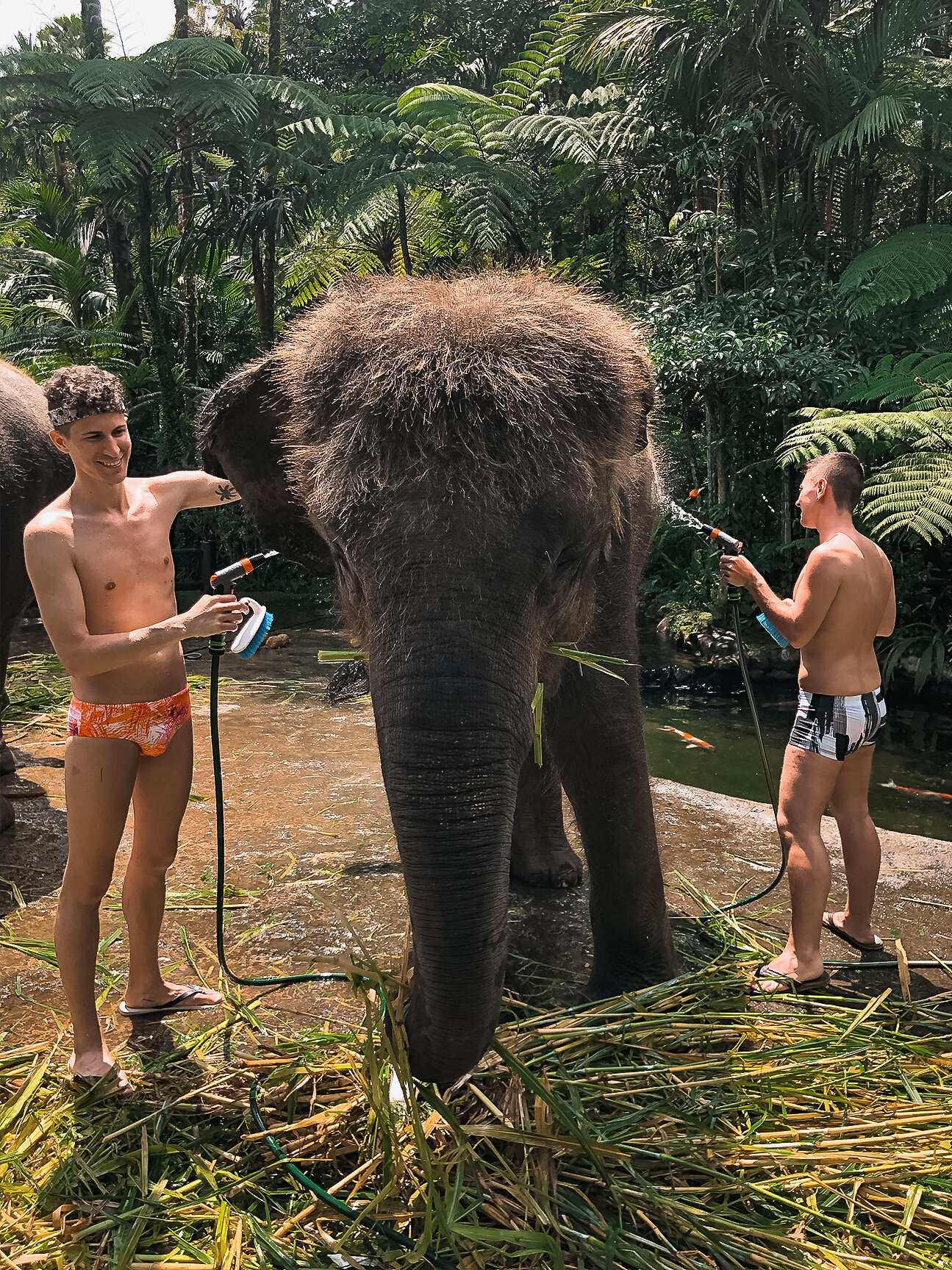
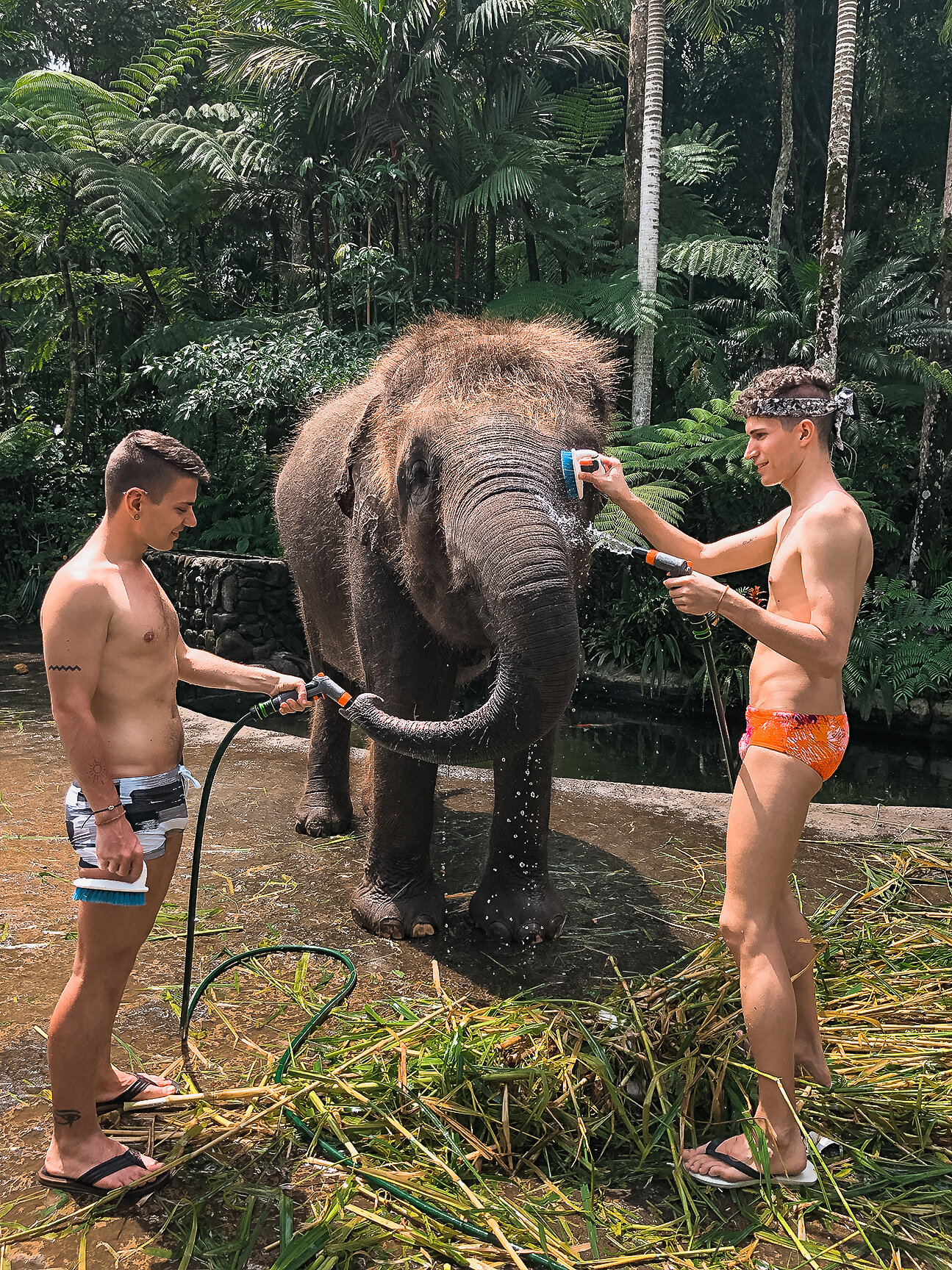
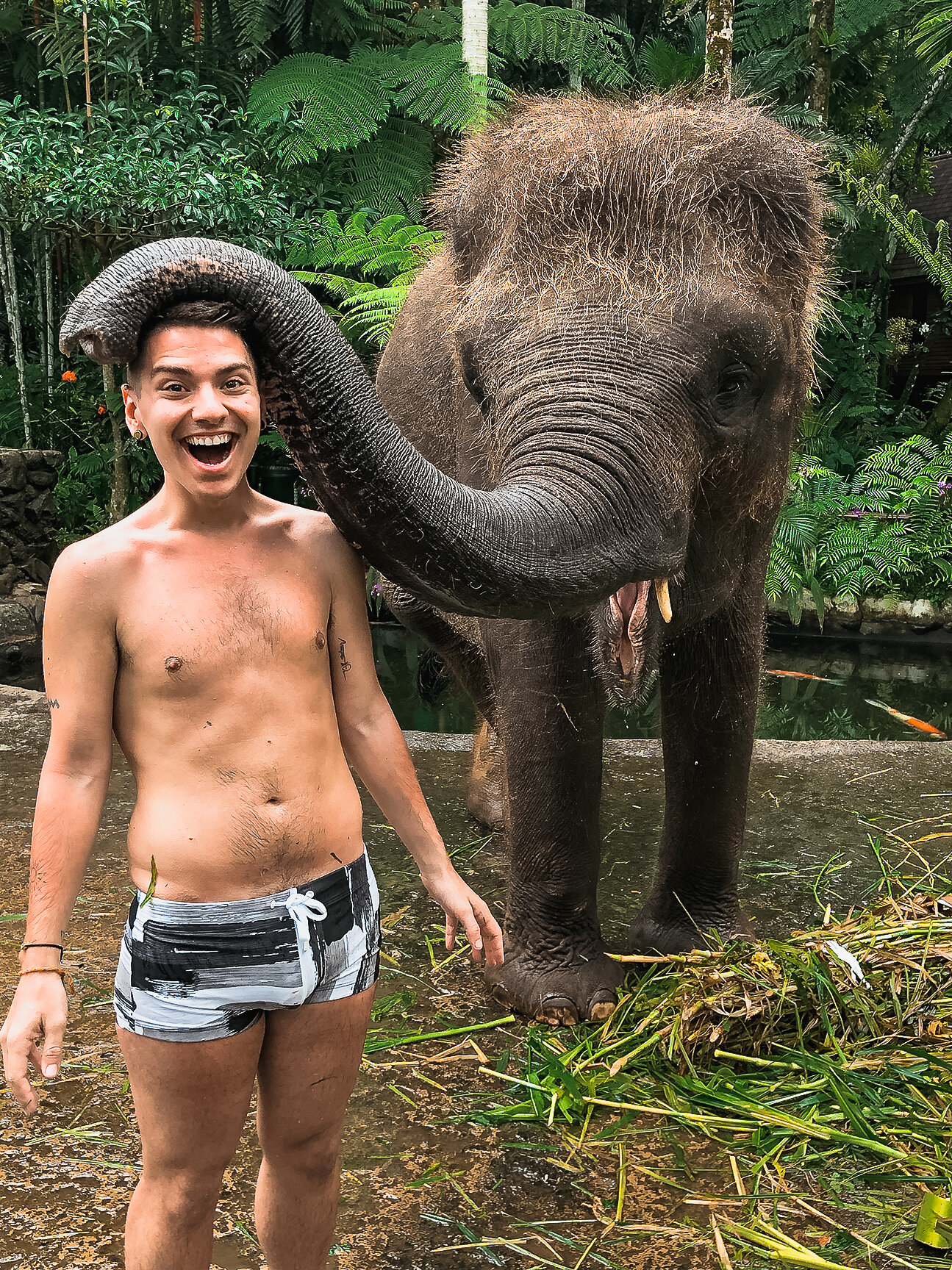
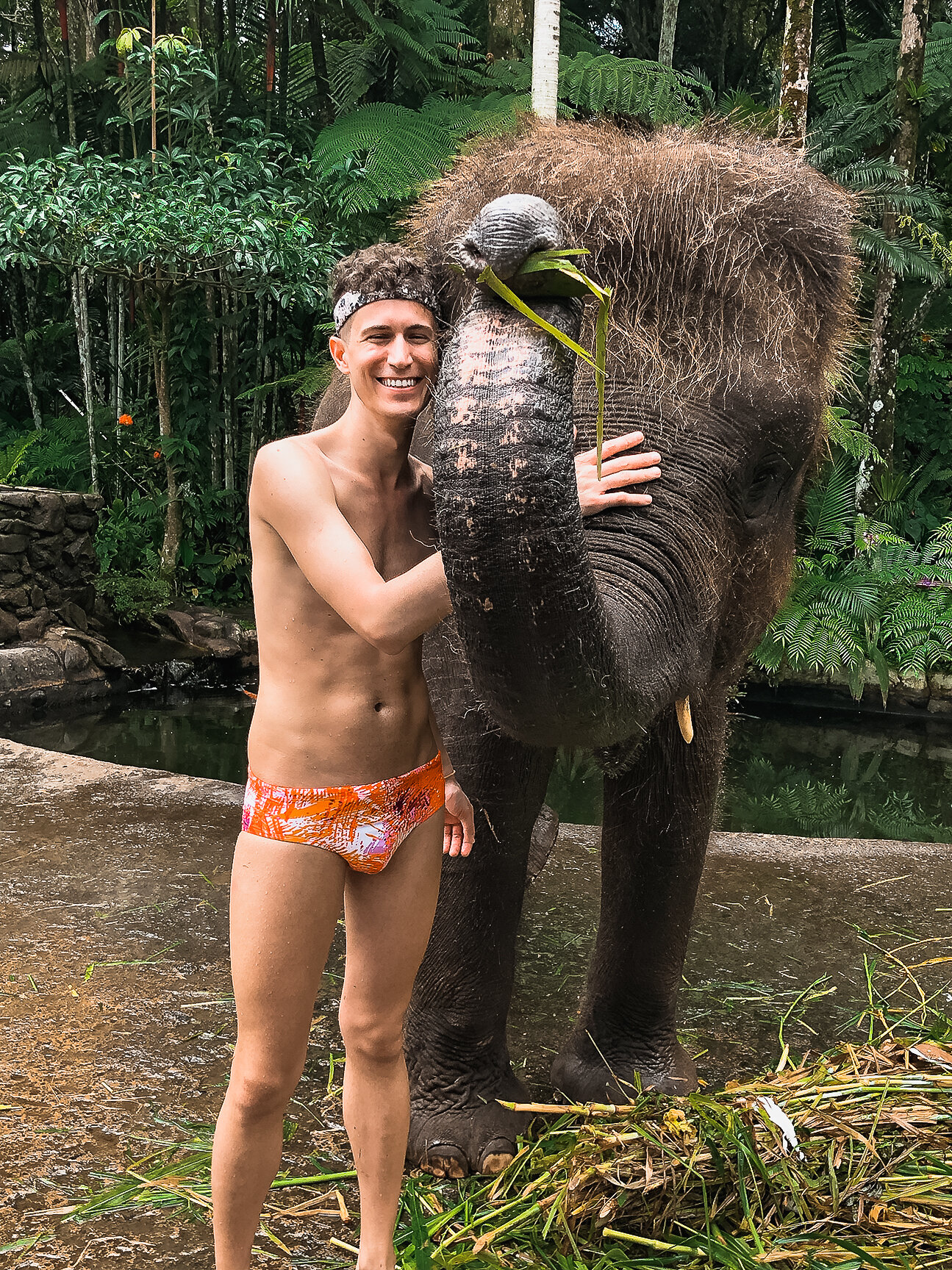
Mason Adventures Elephant Park
We came here to meet, feed and bathe an elephant! After entering the park, you can buy small baskets of produce for 50K Rp ($3.50 USD) to feed the elephants. It’s the cutest feeling as the use their trunks to take the food from your hands! After feeding, we met Risky, the elephant we scrubbed and bathed from trunk to tail. By the end of the experience, we felt like we had made a new friend but also needed a shower ourselves.
Many other visitors came to ride an elephant, something we didn’t ethically agree with and would discourage others from doing. Otherwise, the elephants seemed to be treated humanely, well fed and given space to roam.
Elephants are highly intelligent, creative and social animals. They can even use their trunks to paint. The park has a museum with elephant paintings on display and available for purchase. Needless to say, we now have a painting made by an adolescent elephant named Jegeg hanging in our bedroom.
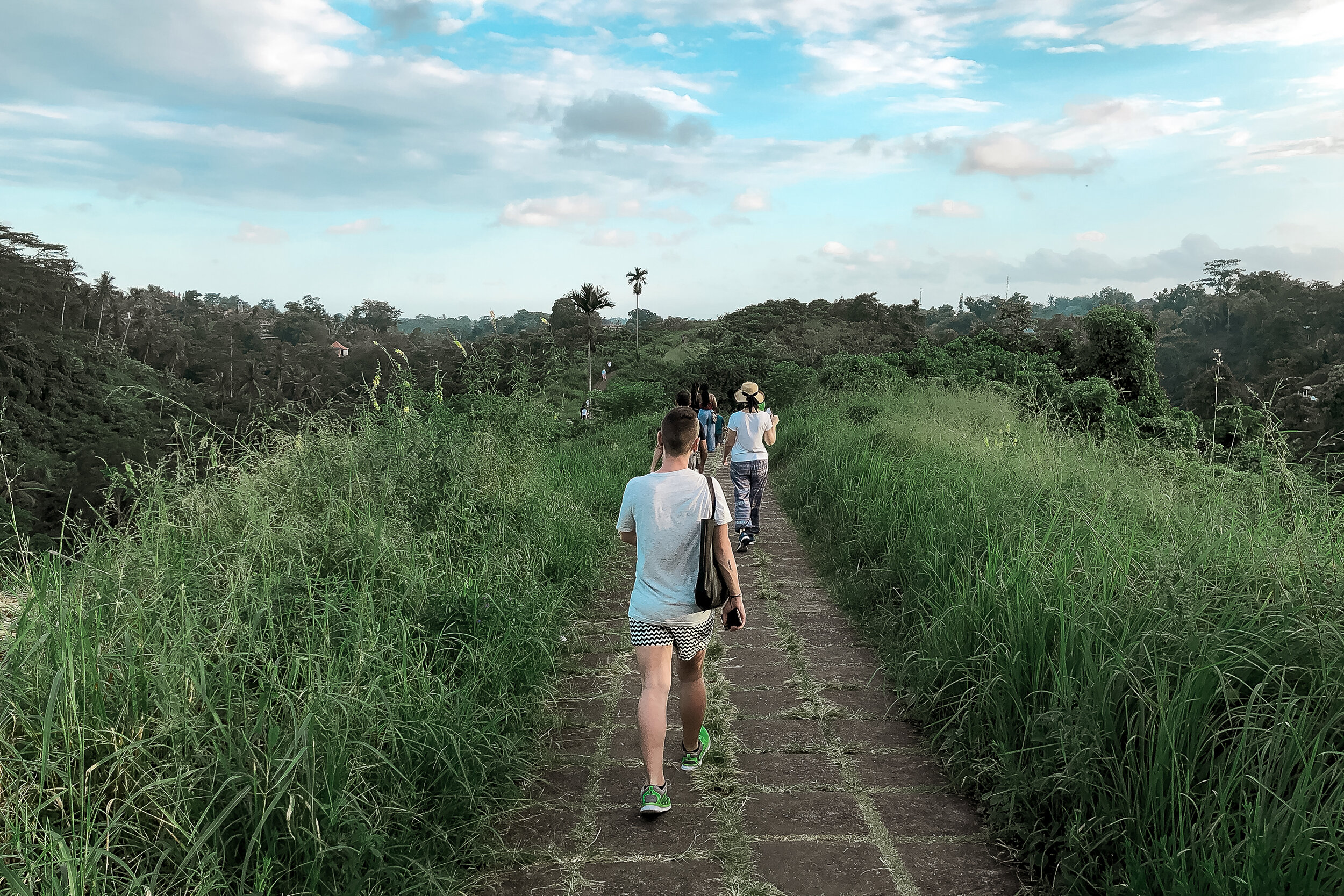
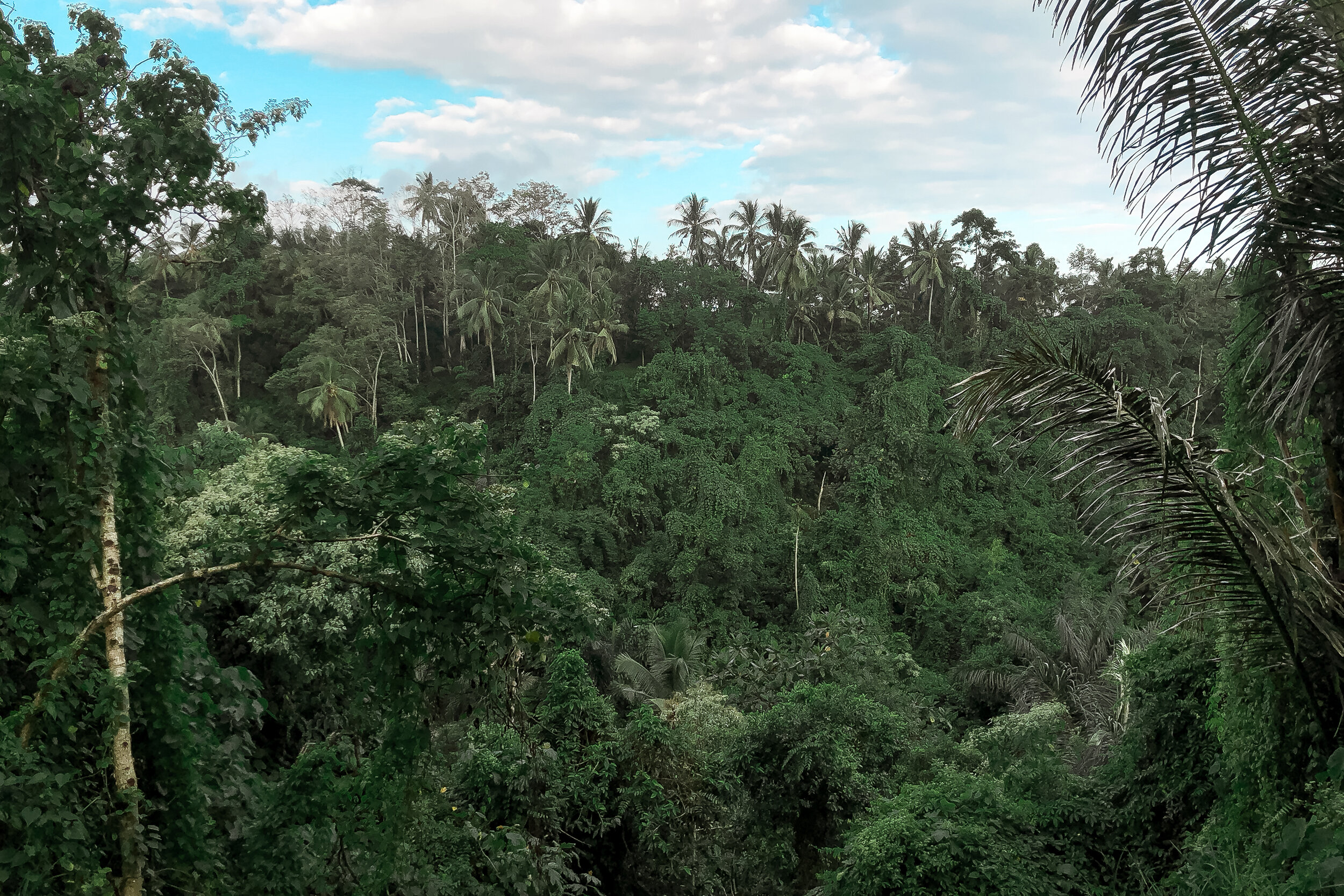
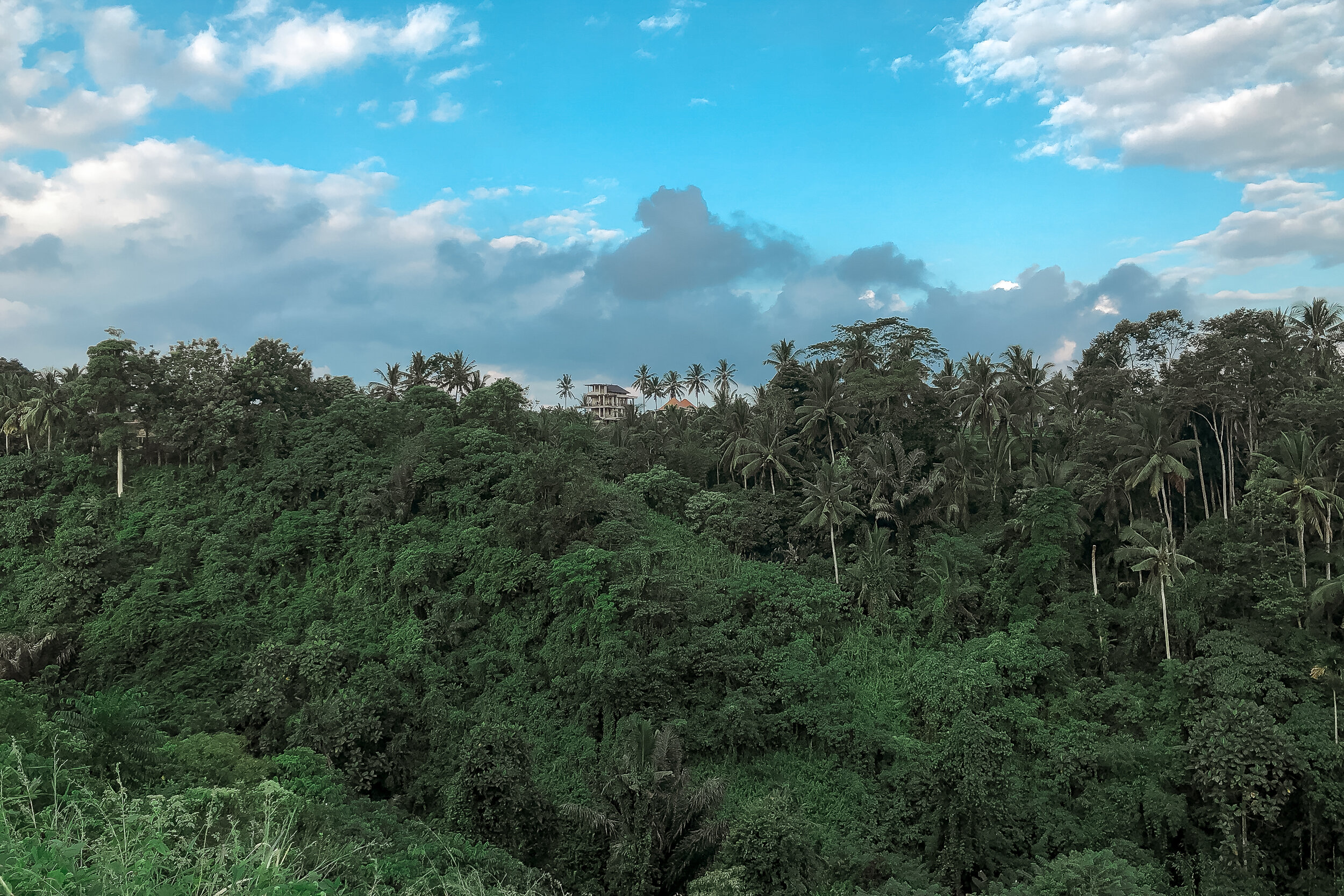
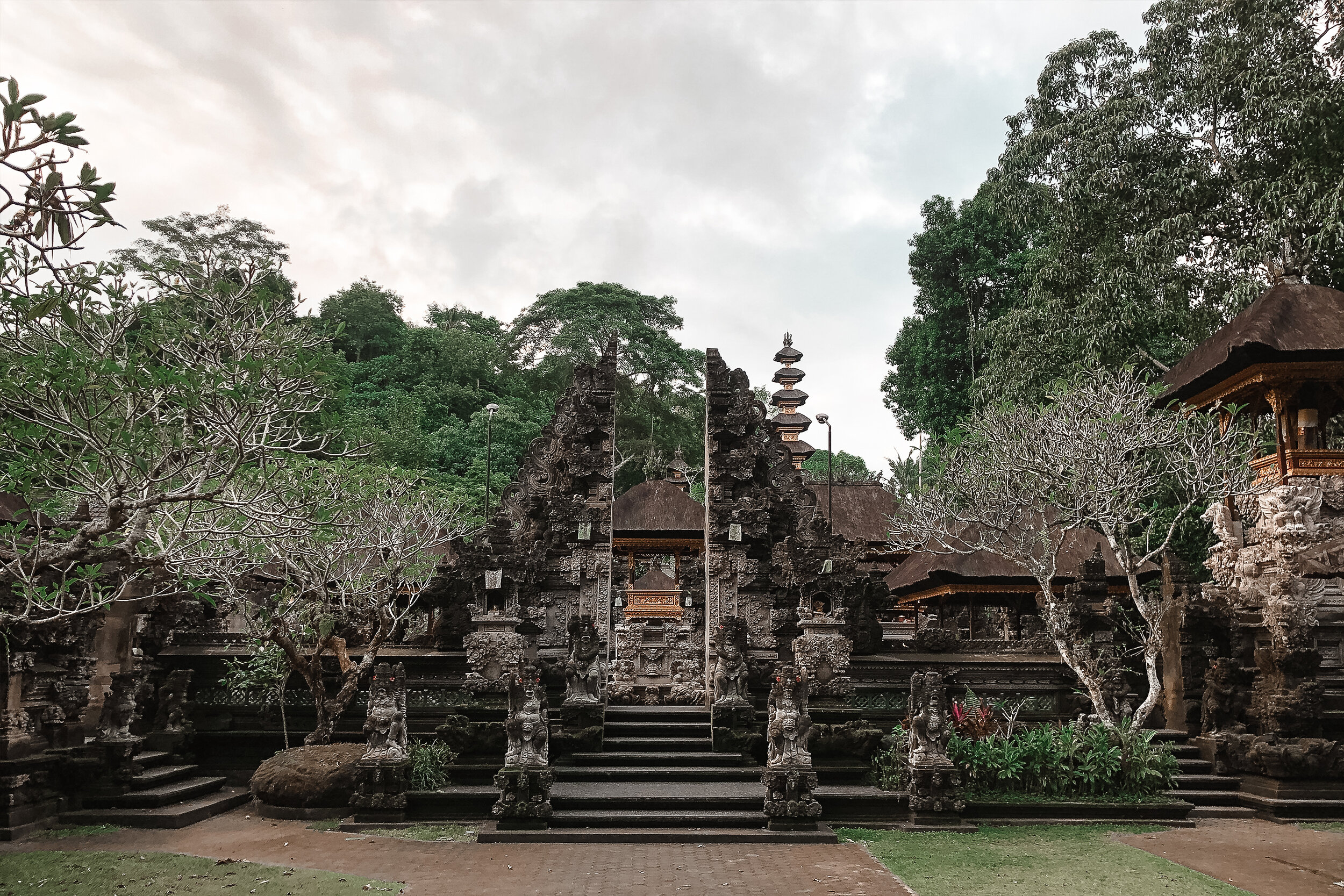
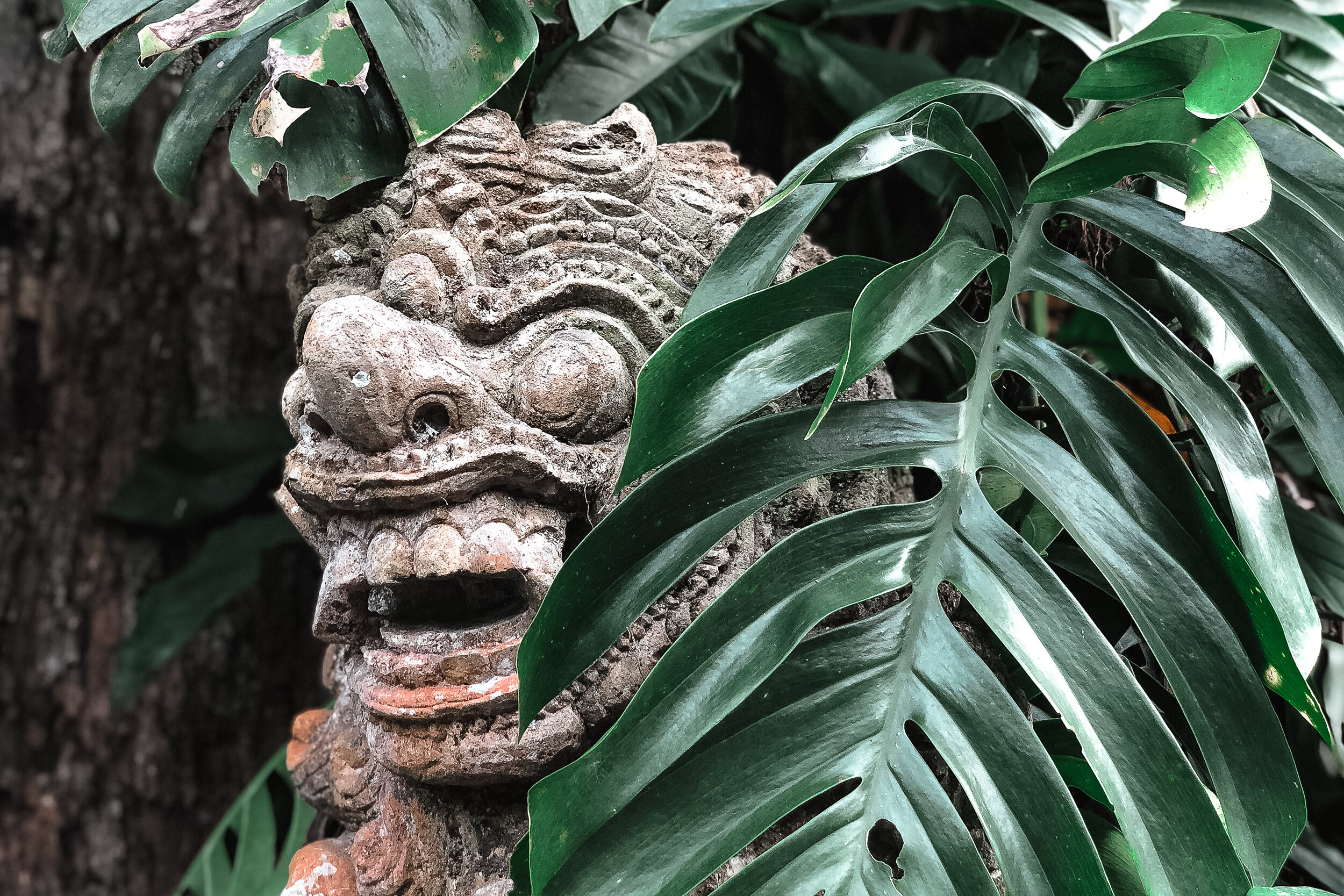
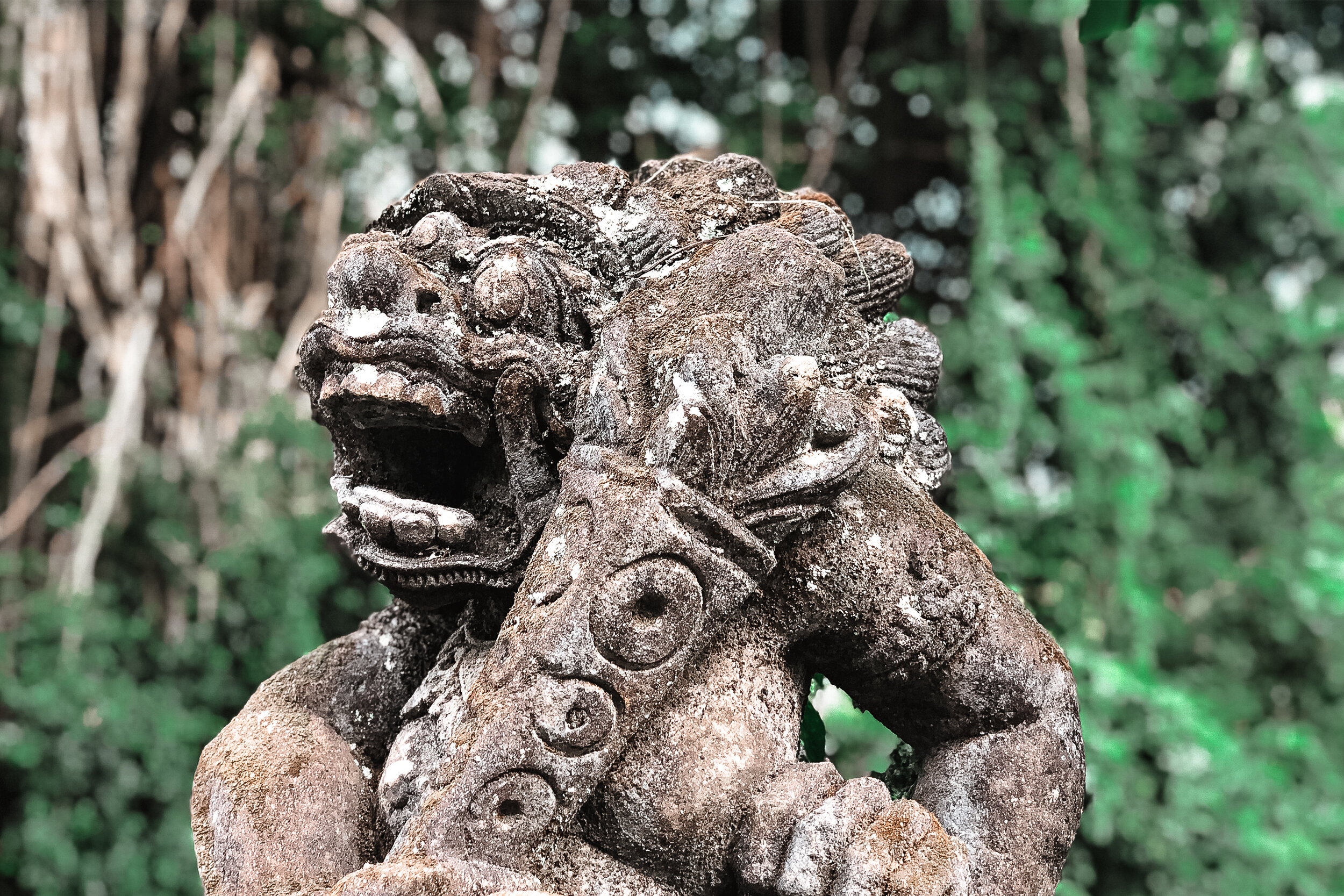
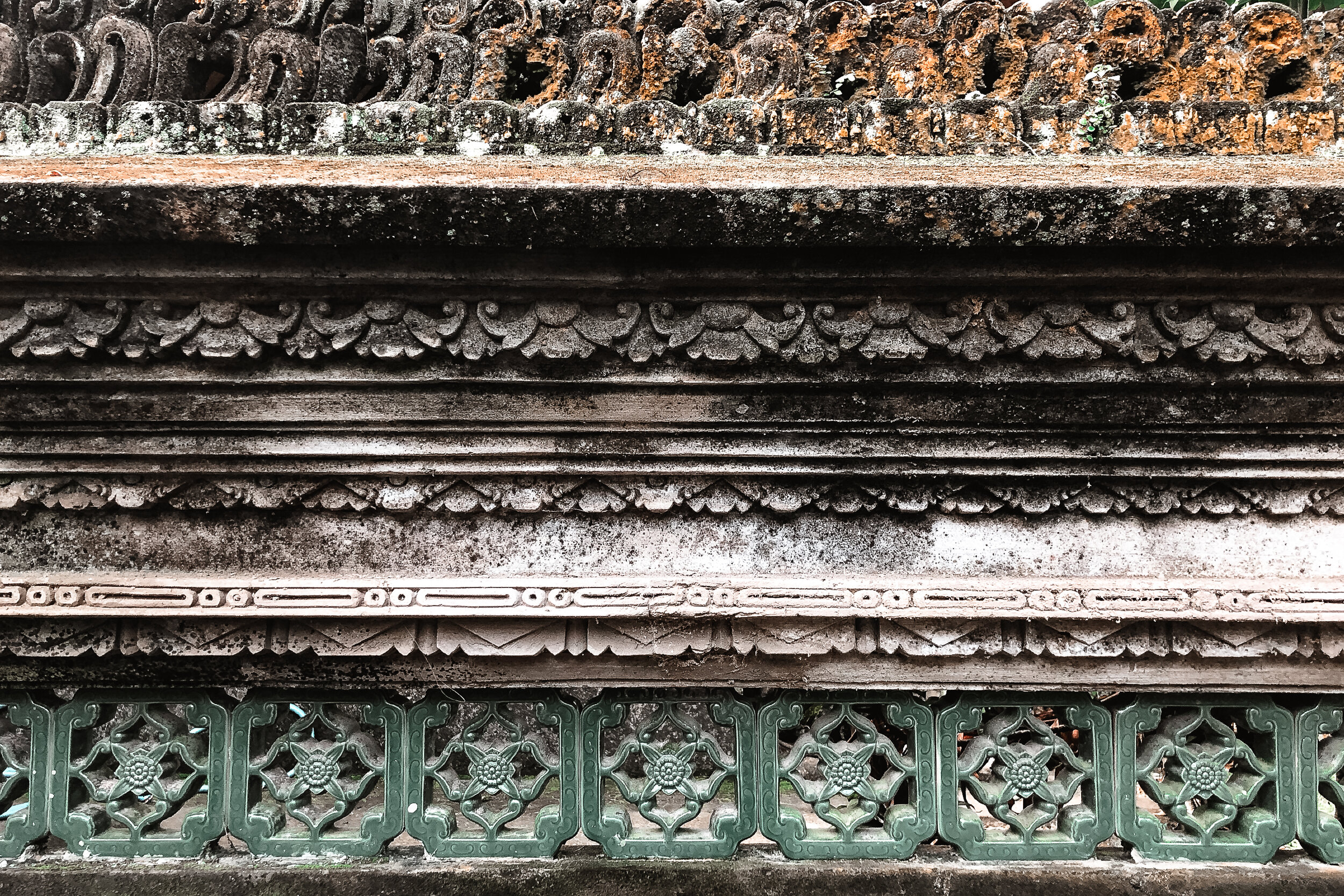
Campuhan Ridge Walk
The walk is an easy, scenic and lush 2km pathway on top of the Campuhan Ridge. To avoid the sun, we walked the path about two hours before sunset ending during golden hour. Enter on the north side, where there are a number of businesses selling fruit, water, Bintangs and massages. End on the south side at the breathtaking ancient Pura Gunung Lebah temple. From there you can walk down Jl Raya Ubud to the city center for dinner.
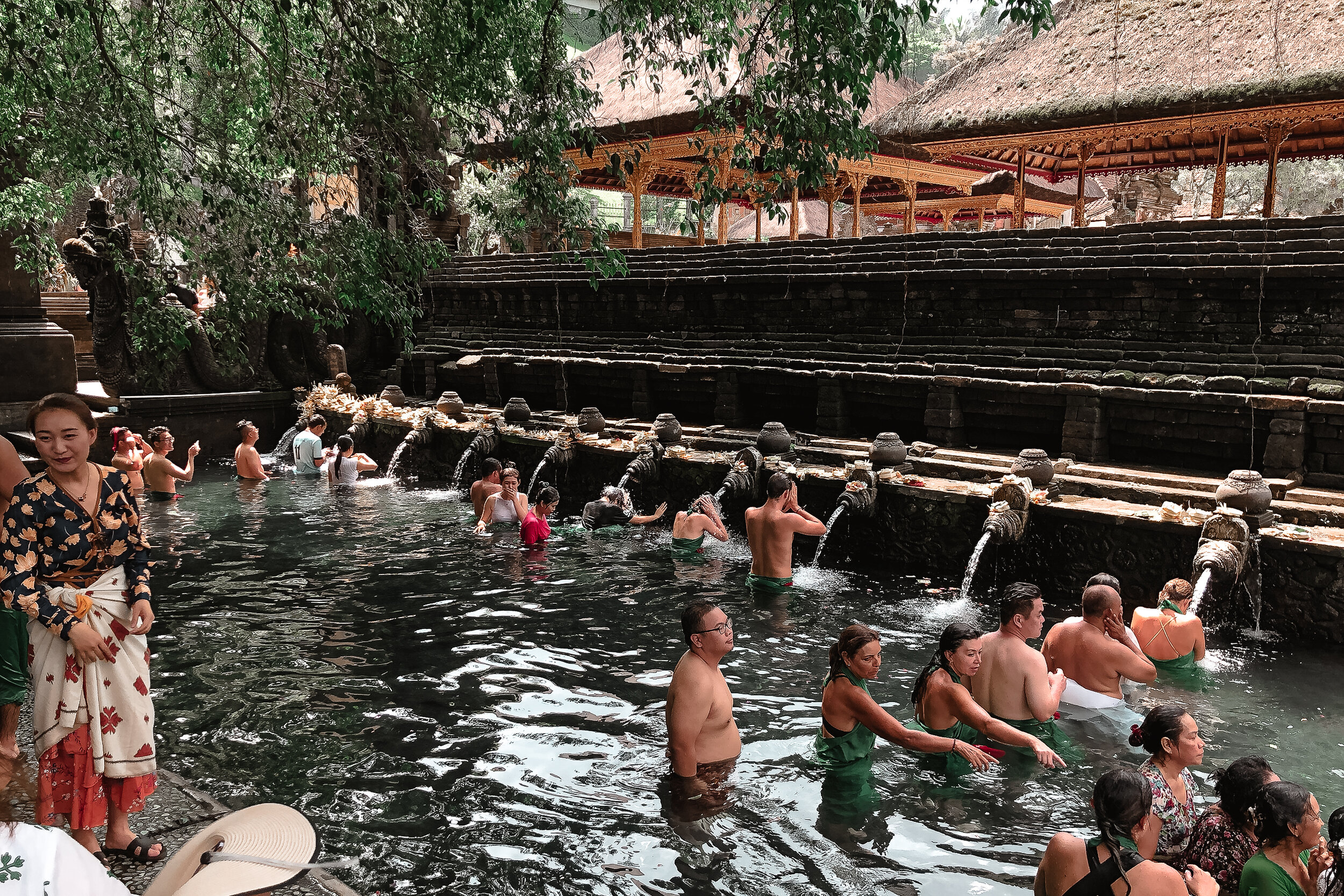
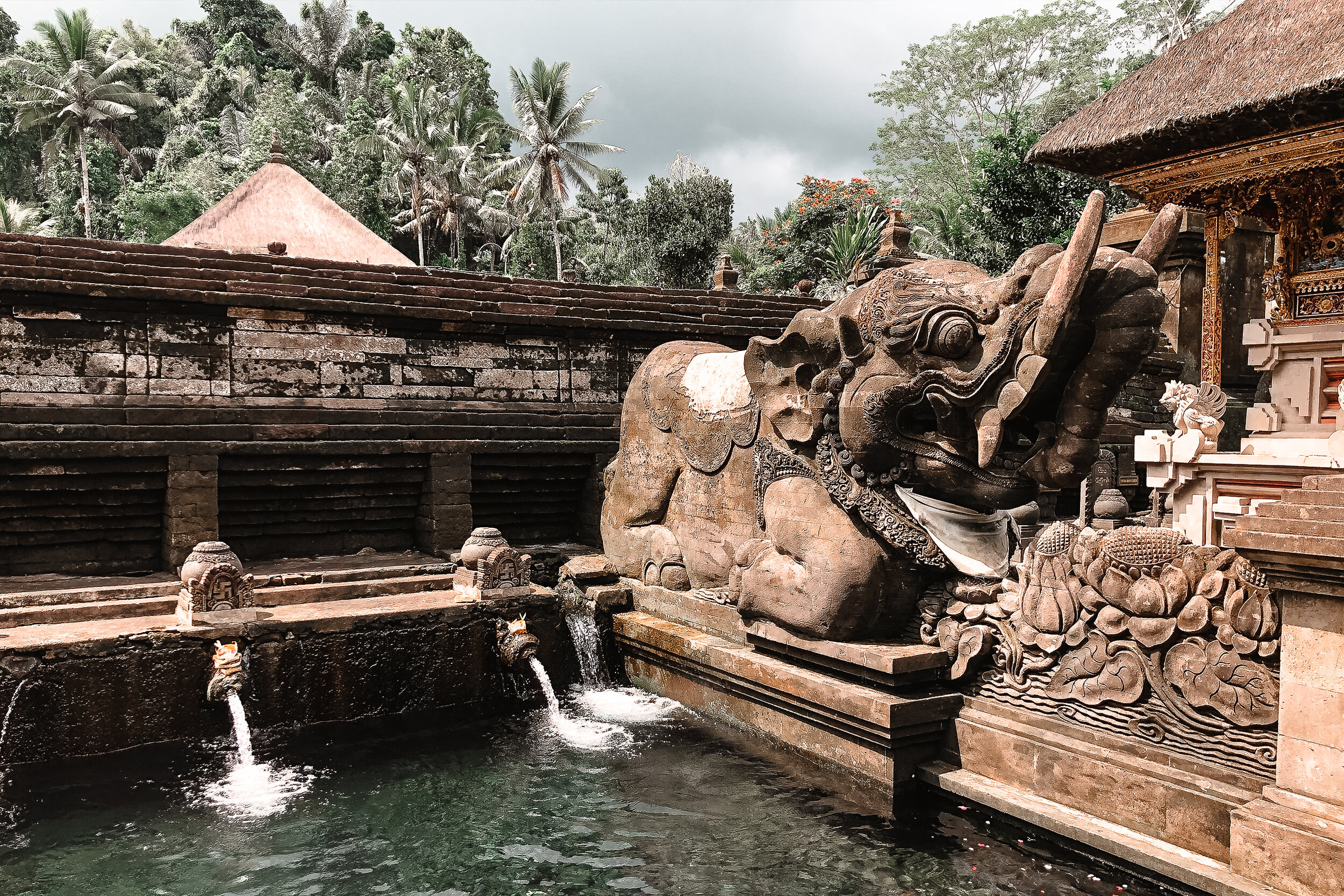
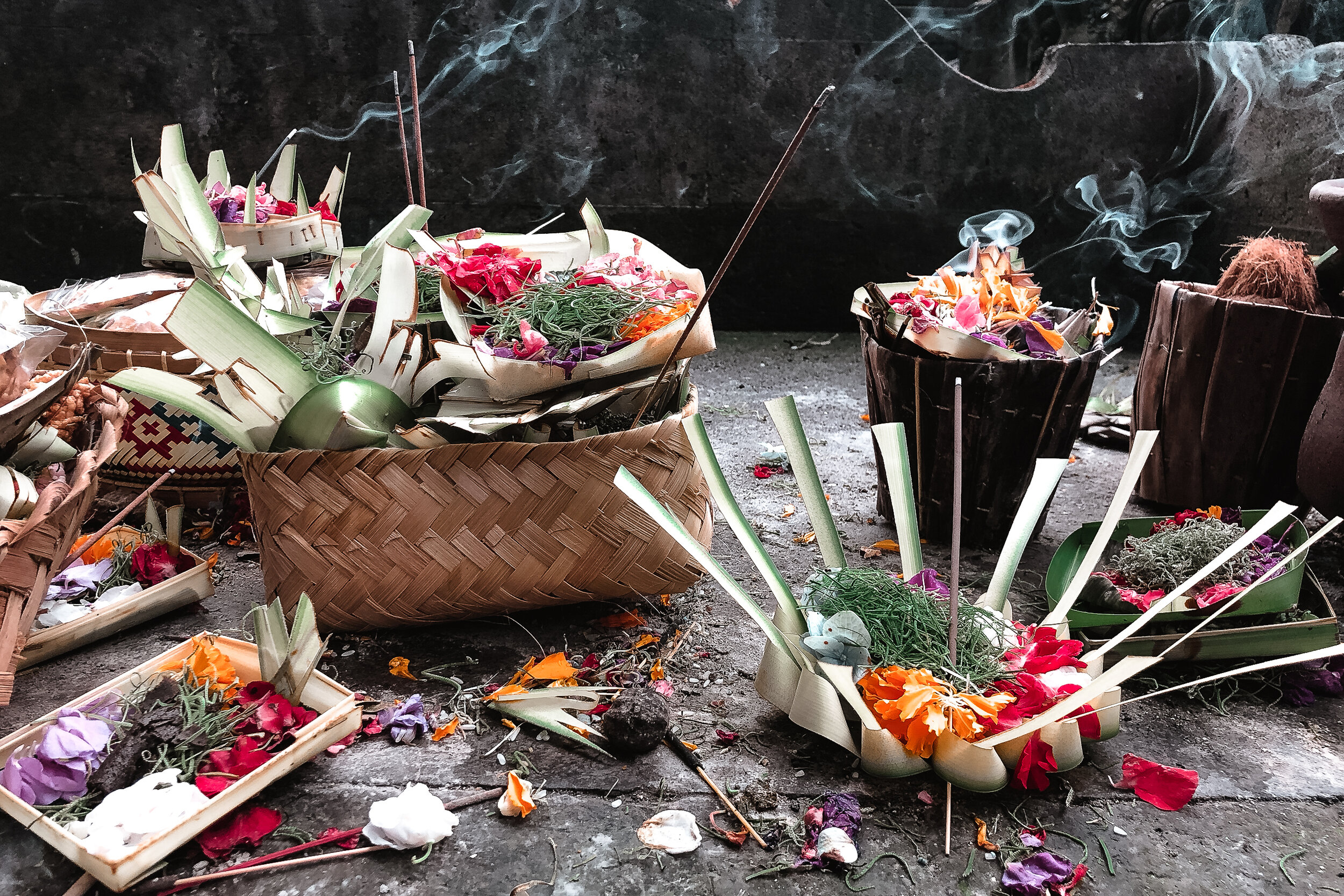
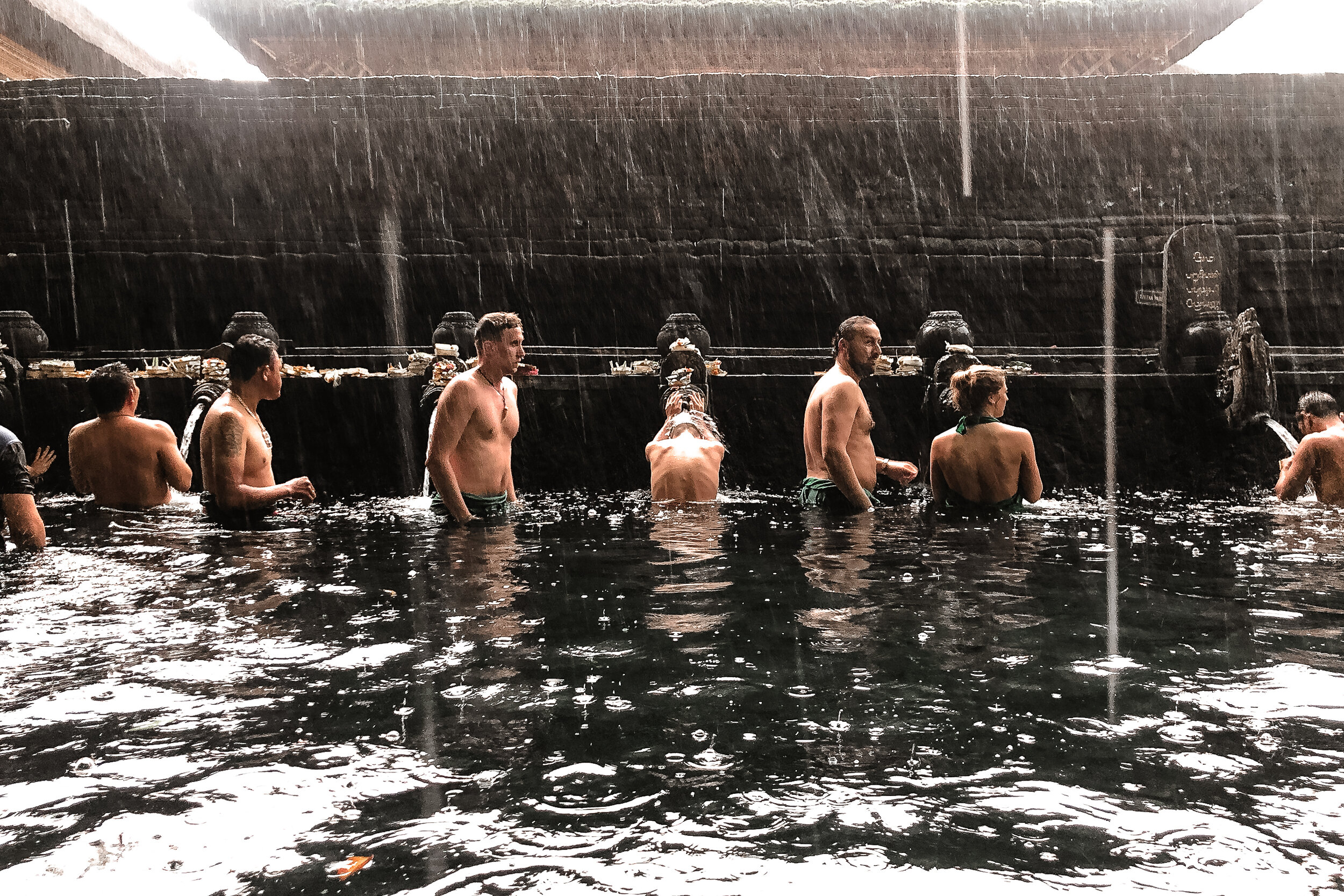
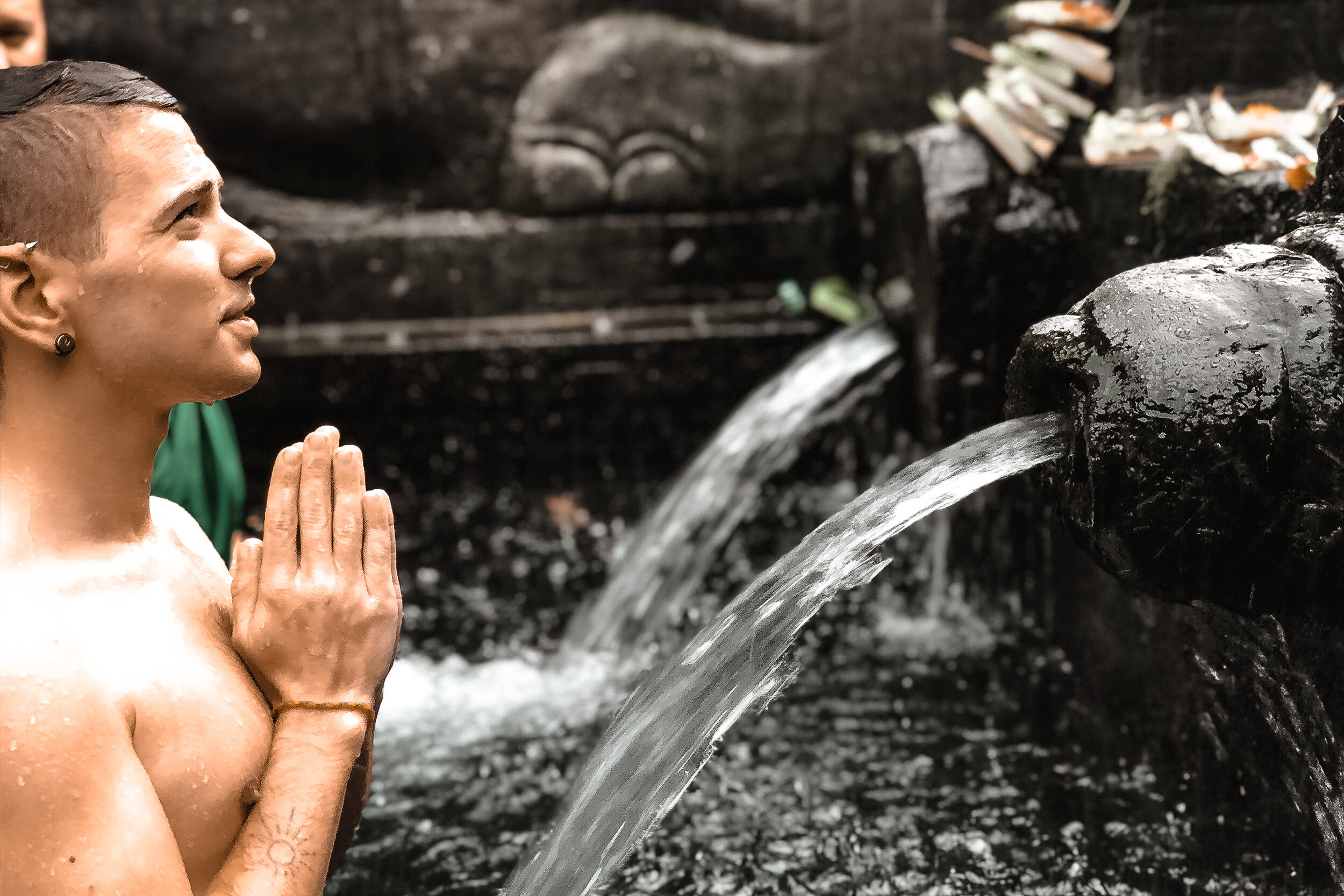
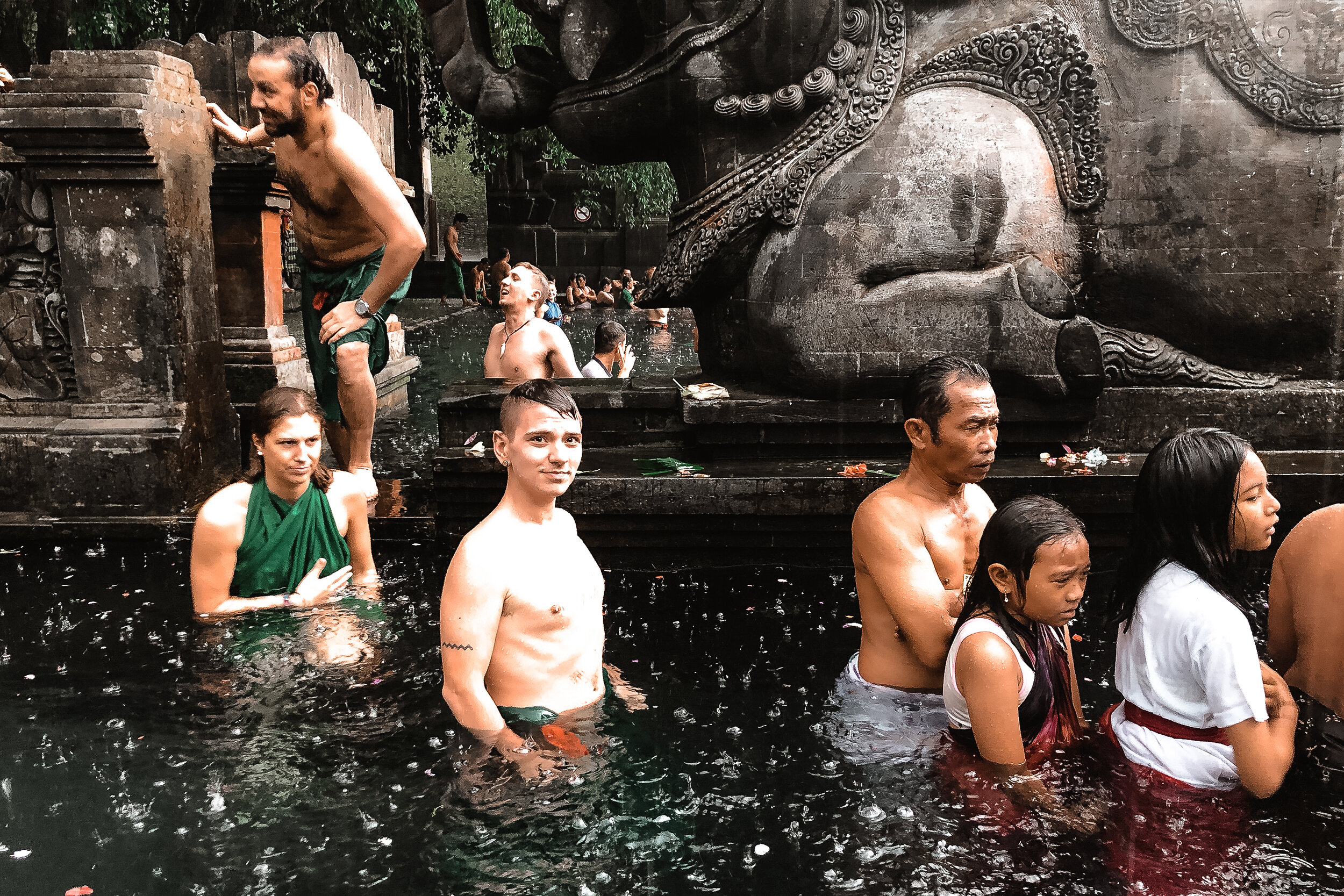
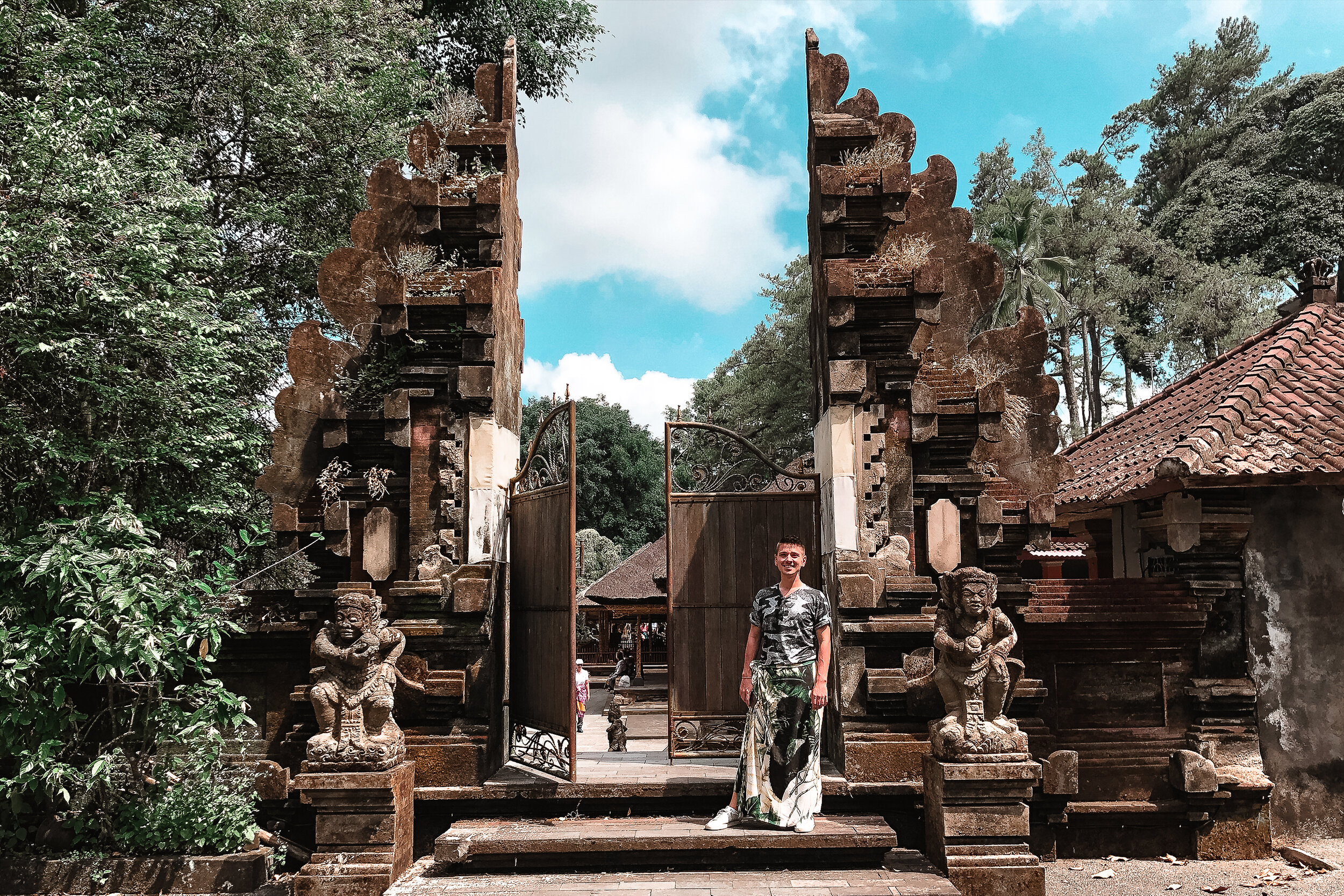
Tirta Empul - Water Temple
A 15th century temple known for its fountains and baths fed by a natural spring. It has a special importance to the Balinese for its purifying and healing waters. The best way to properly use them is to pay a temple guide for a handmade offering and ask them to explain the ritual process and meaning behind it. It’s well worth the experience to step out of your comfort zone, experience and reflect on whatever you’re thankful for.
We visited Bali during the dry season. Coincidentally, while visiting the water temple, a storm rolled in and lasted for the rest of the afternoon. It was the only time it rained during our two week trip.
What to Bring
A Sarong. Like with many temples across Bali, you need a sarong to cover up with before entering. They’re available to rent at Tirta Empul if you don’t have one.
A towel. To dry off with after cleansing in the waters
A lock. To secure your belongings in the lockers.
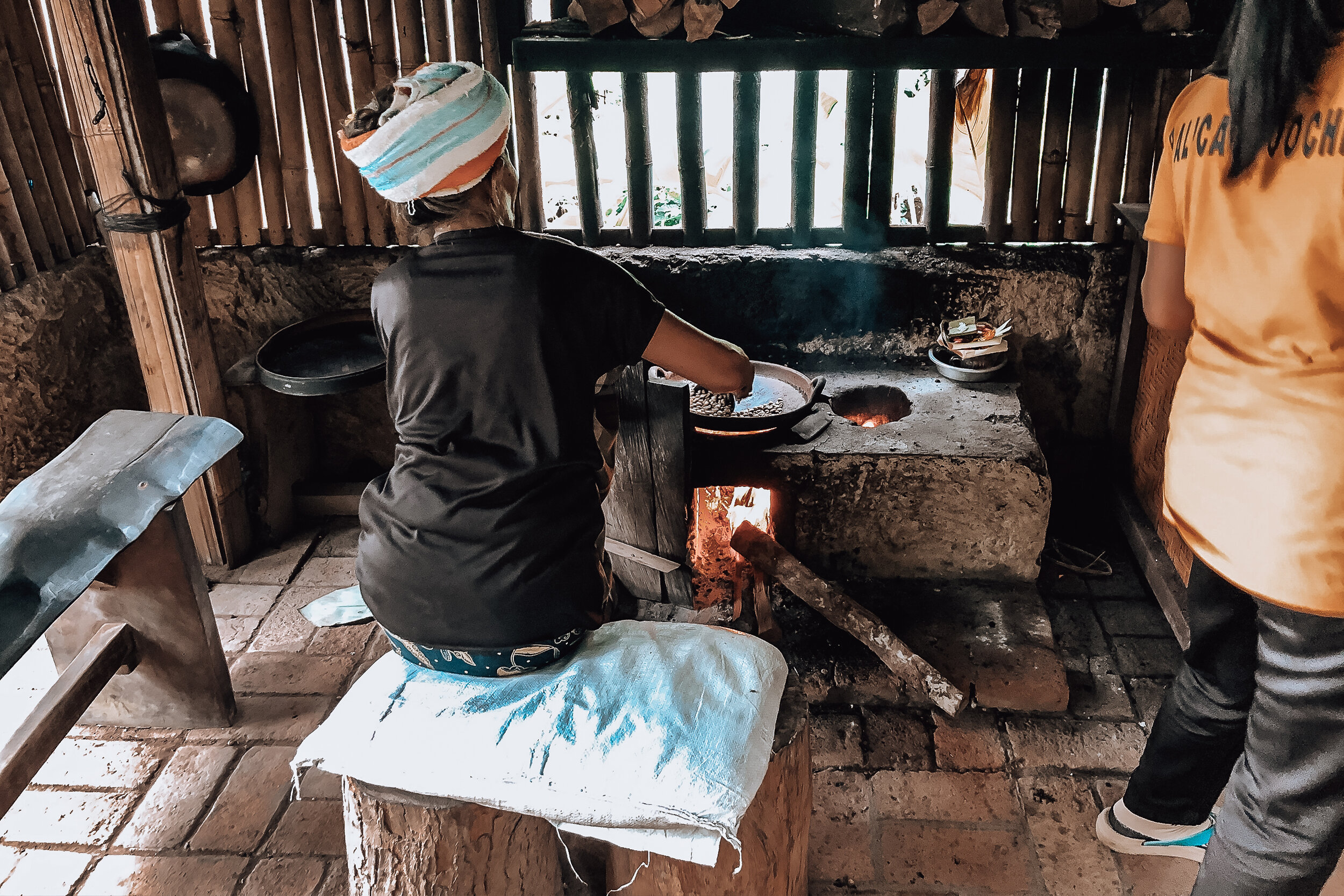

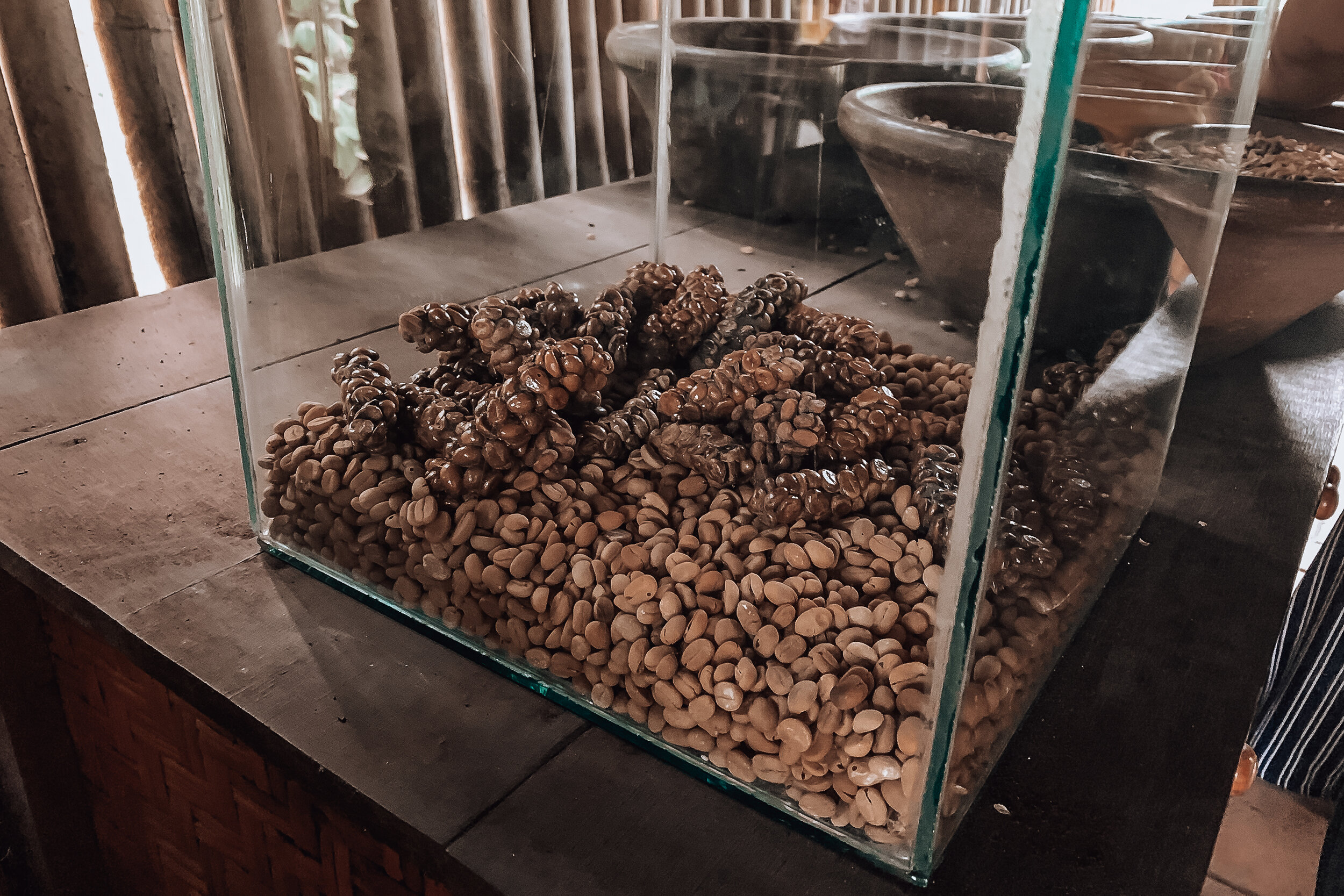
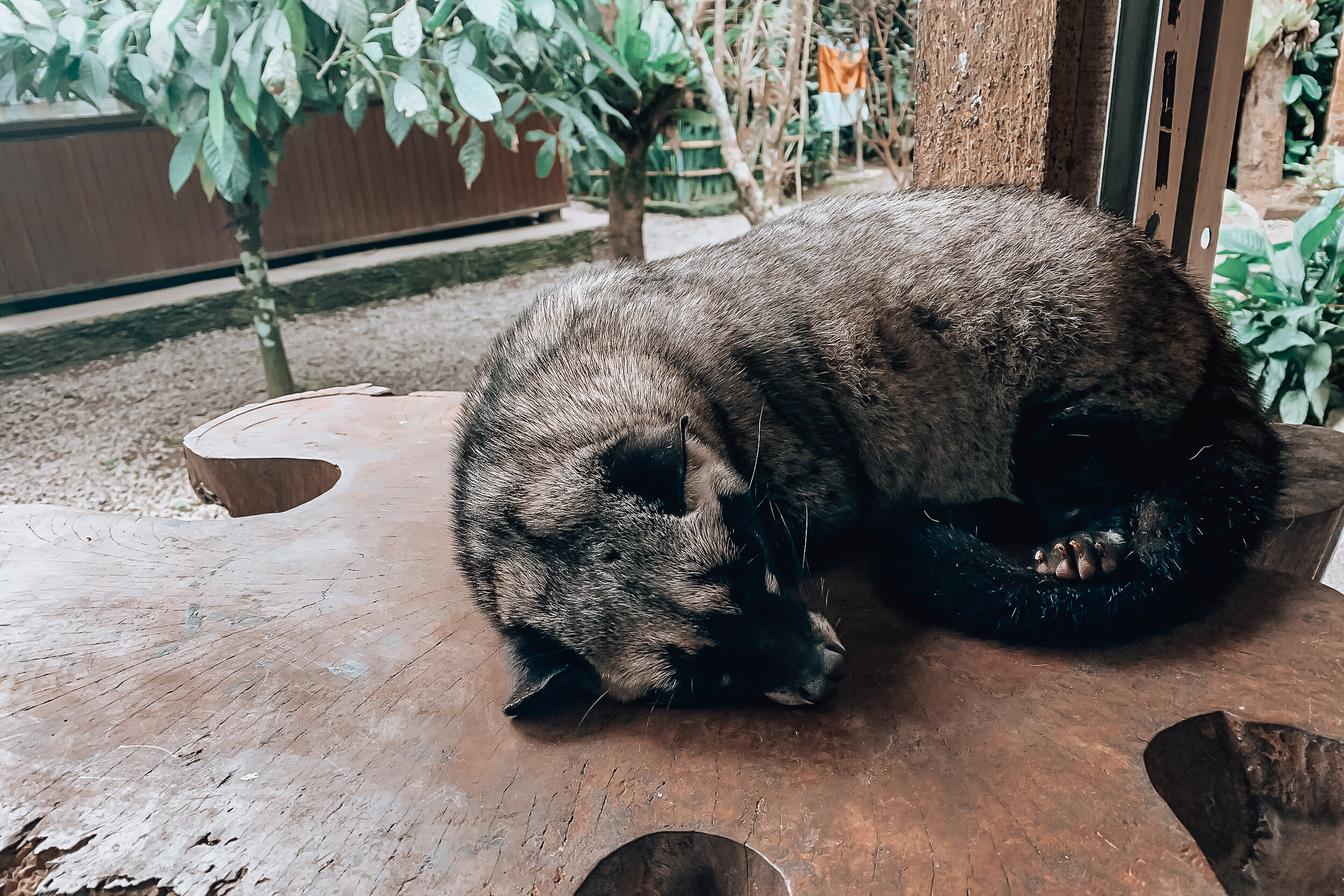
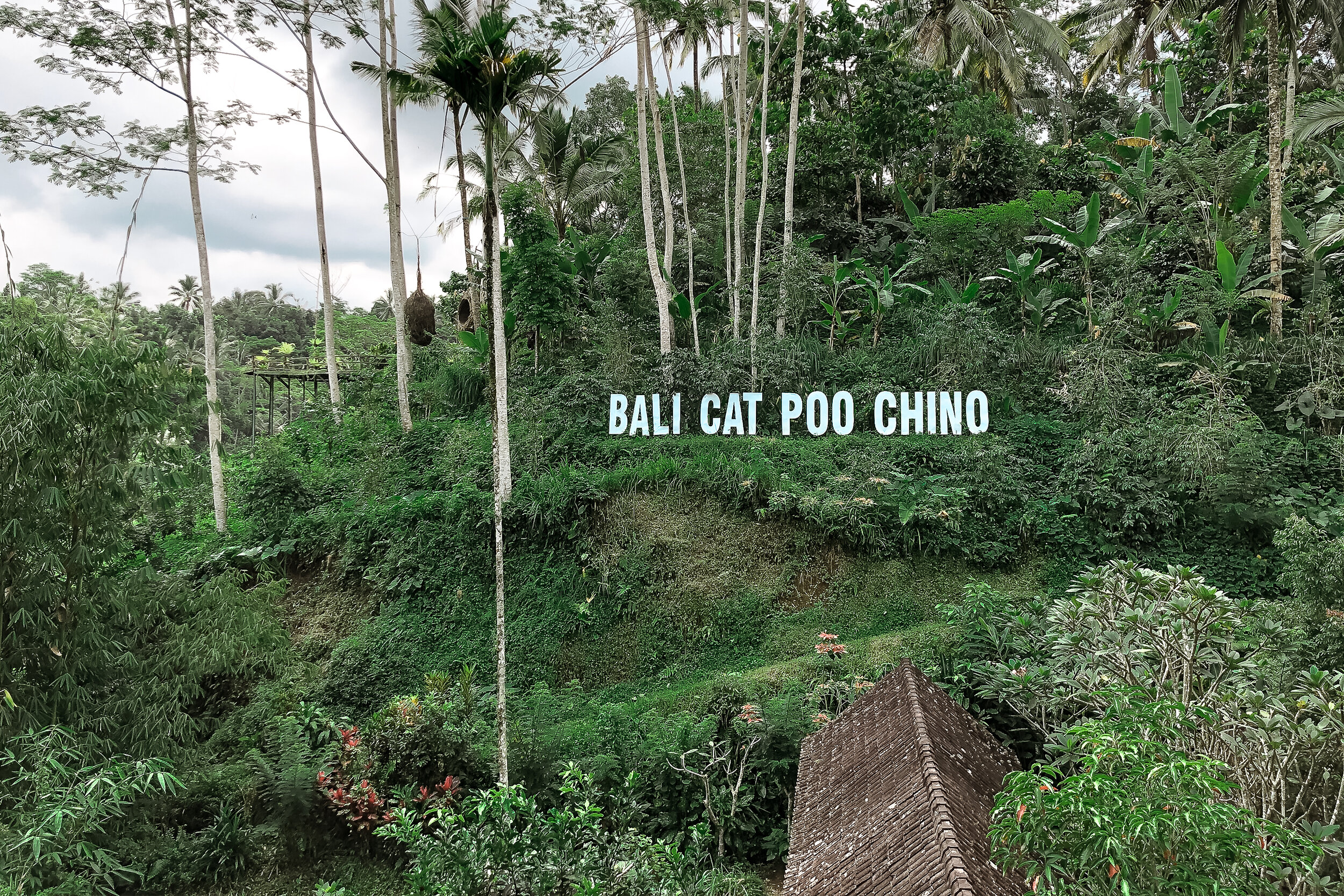
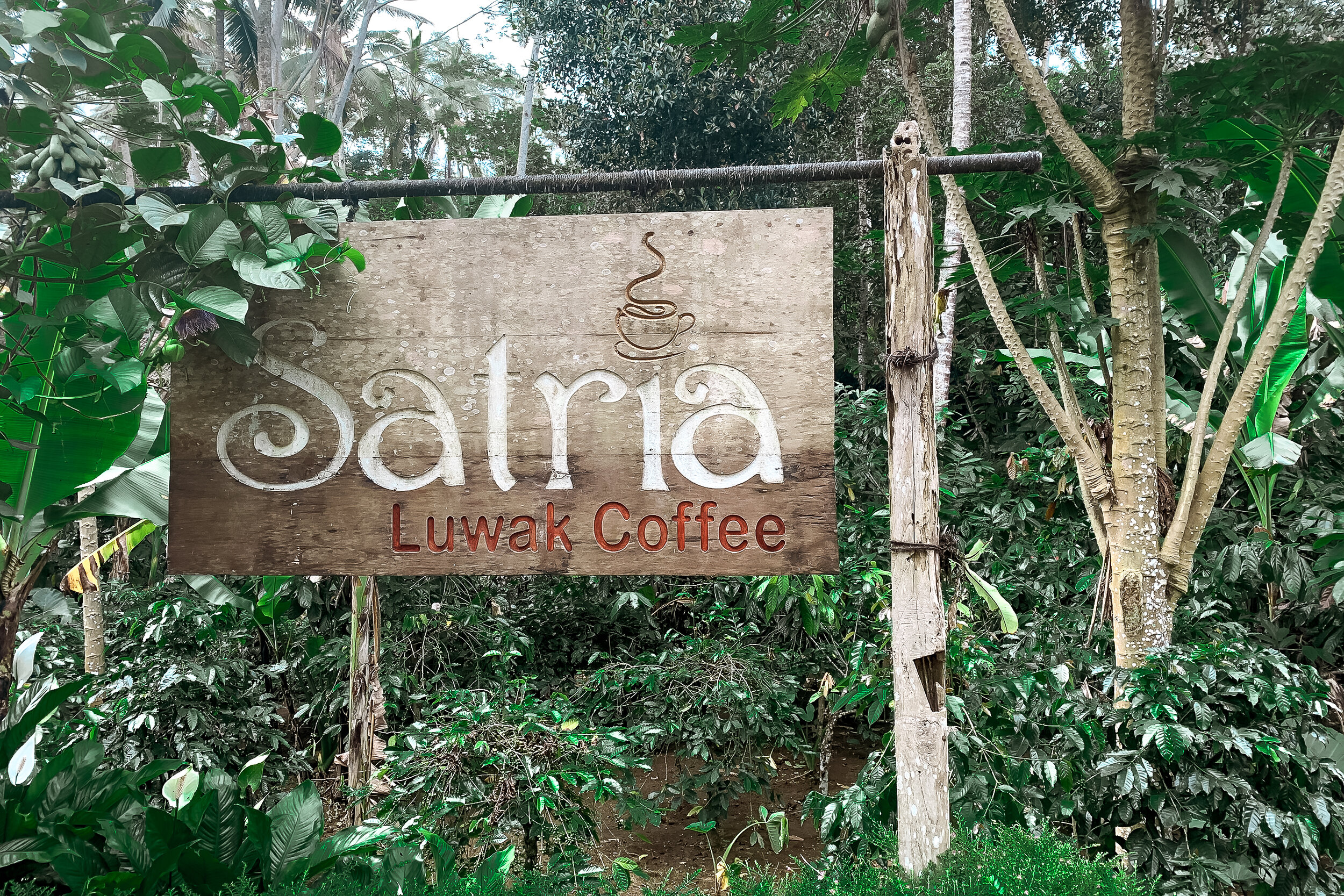
Satria Coffee Plantation
Famous for Luwak Coffee. If you’re unfamiliar, the coffee beans go through quite the process before becoming coffee. The fruits containing the beans are eaten by civets, a nocturnal cat-like mammal. The civets then digest fruit and poop out the beans. The beans are collected and roasted in small batches before being ground and turned into coffee. It’s an unappealing process but does result in a rich, mellow and flavorful brew worth trying at least once.
Museums
There are a number of museums showcasing Balinese art, artifacts, carvings and architecture throughout Ubud. The museums themselves are as much about the grounds and their temples as they are the artwork and artifacts within.
The three most important ones are:
Agung Rai Museum of Art (ARMA)
Museum Puri Lukisan
Neka Art Museum
We visited ARMA during the mid afternoon and were surprised to find the museum mostly to ourselves. We spent a few hours touring the galleries, walking through the grounds and talking with a few artists currently carving sculptures and painting in the gardens.
Restaurants
In Ubud, we learned that it’s customary to remove your shoes before entering most restaurants and business. You’ll often be cued by a row of shoes outside the business before entering. If you’re unsure, do it anyway. Other than Akasha Restaurant nearby our eco-dome and a few street meals, here are a few places we came to eat and drink:
Mudra
A really cute cafe nearby the Monkey Forest offering the most stunning Bali bowls on the island.
Hujan Locale
Slightly higher-end contemporary Indonesian cuisine with colorful and flavorful dishes as well as artisan cocktails. We shared a few appetizers end enjoyed the prawn and crispy whole fish as mains.
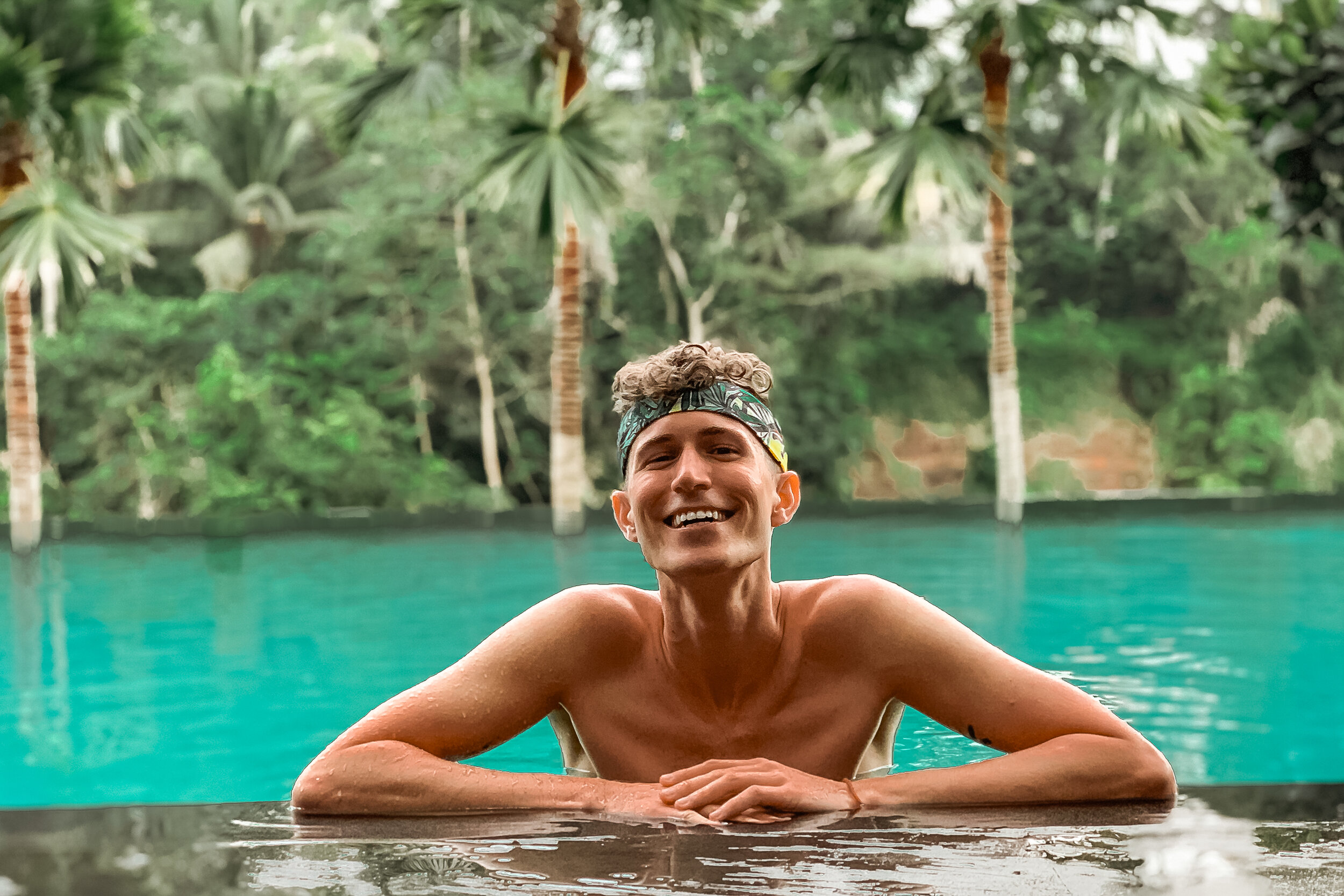

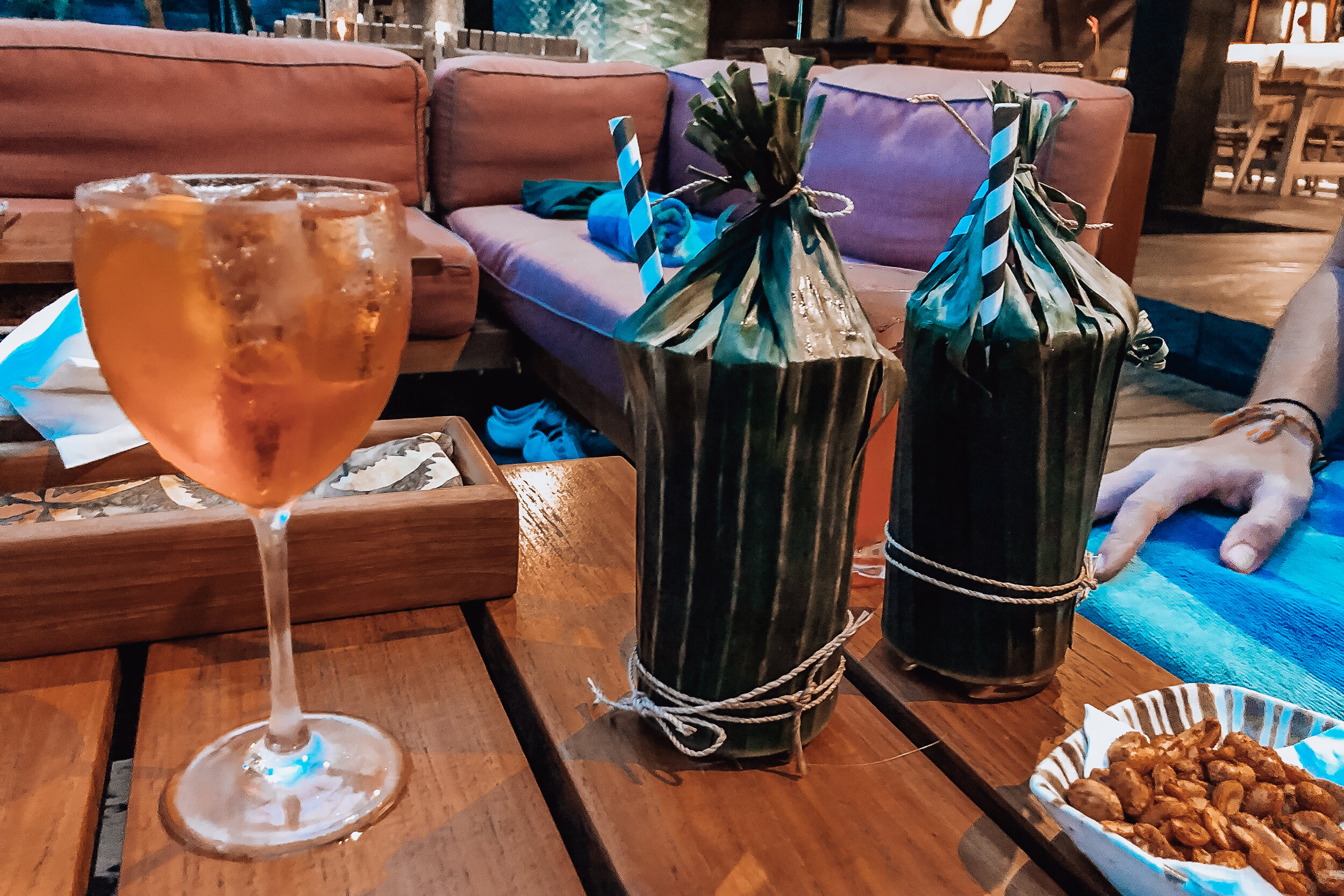

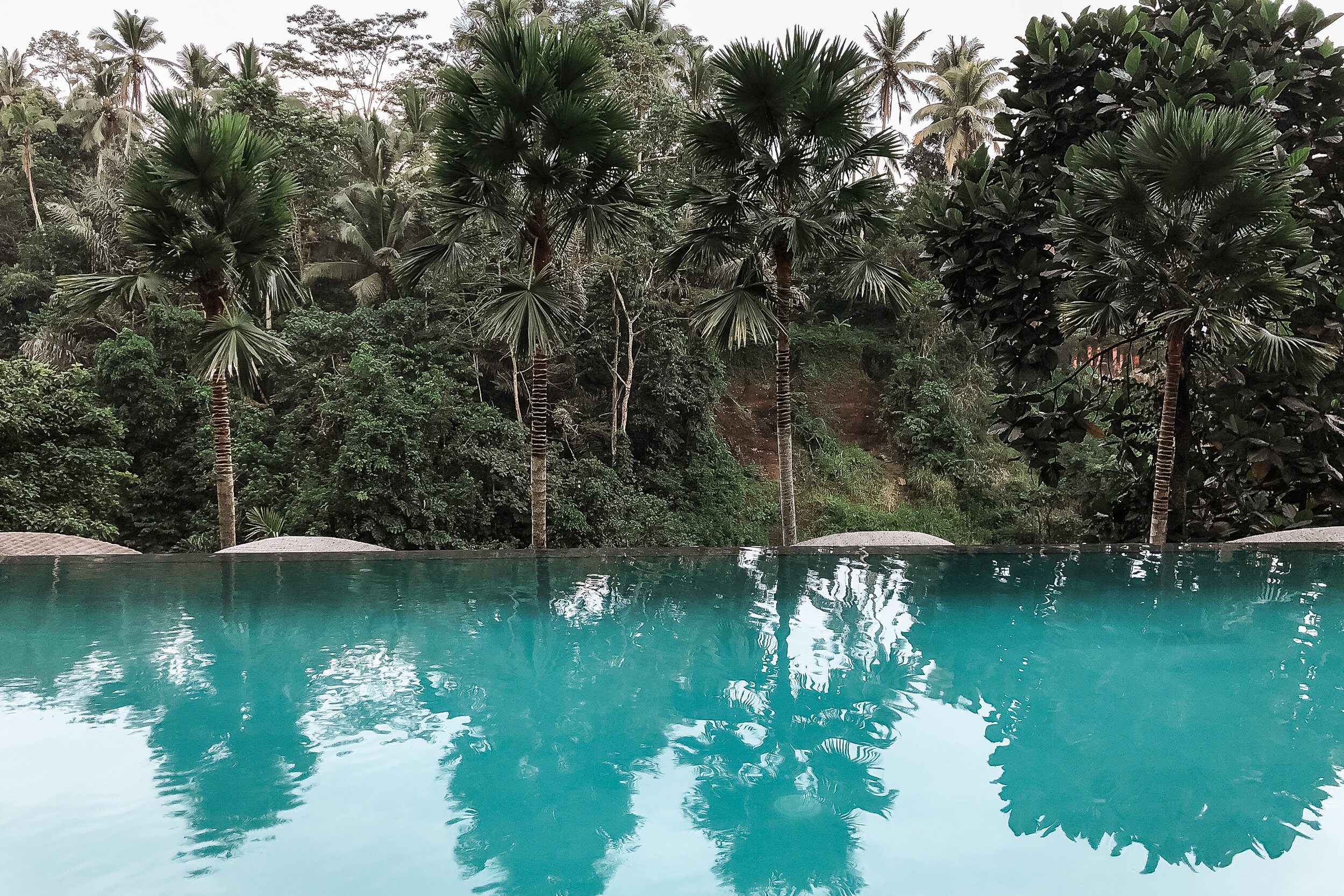

Jungle Fish
The best way to describe this place is a beach club in the middle of the jungle. The restaurant has an infinity pool overlooking the lush rainforest and multiple levels. The pool bar offers a selection of small plates and 2 for 1 drinks. We sampled every cocktail on the menu falling in love one wrapped in banana leafs.
Good to Know
Currency & Pricing
You can easily be a millionaire in Bali. 1,000,000 Rp converts to about $71 USD.
Money is qualified in the thousands. Many restaurants and businesses will drop the extra zeros on menus and price tags. For instance something costing 56,000 Rp may be listed as 56.
Carry a lot of smaller bills (5K, 10k and 20K) with you for donations and small fees.
Tipping is usually included in the bill under service. Anything extra is not expected.
When exchanging cash or cards, use both hands out of respect.
Safety & Awareness
Bali is generally a safe place to travel too.
The biggest dangers in Bali are traffic and natural disasters.
You need to be alert and careful if driving a scooter or crossing a road.
Bali is a volcanic island and prone to earthquakes. The safest thing to do if one happens is to move to an open area. If you’re in a building, move to the center of a street. If you’re hiking or under palm trees, move to a clearing to avoid falling rocks and coconuts. Always cover your head.
Language & Phrases
Bahasa Indonesian is the official language in Bali however many people know English.
People will often introduce themselves and bow their head when meeting you. You should reciprocate the response and gesture.
Common phrases:
Sukseme = Thank You
Sama Sama = You’re Welcome
Selamat Pagi = Good Morning
Selamat Siang = Good Afternoon
Selamat Sore = Good Evening
If we had more time…
Ubud was one of our favorite places in Bali, so much so we dedicated a full guide to it! Though we spent nearly a week here, there is still so much more left to experience. Here are a few of the things we plan to do when we return. Read our Coastal Bali Guide for more things to do and see around the island!
Pura Ulun Danu Bratan. Canoe between the floating water temples on Lake Bratan
Pura Taman Saraswati. A palace water temple surrounded by a large lily ponds where the traditional Balinese Legong dance is performed.
Goa Gajah. A 9th century cave temple with extensive carvings. You enter through the mouth of a demon.
Chase Waterfalls. The two main ones in Ubud are Tegenungan & Tibumana Waterfalls.
Canopying. The Tree Top Adventure Park offers courses canopying and zip lining through the tropical jungle.





